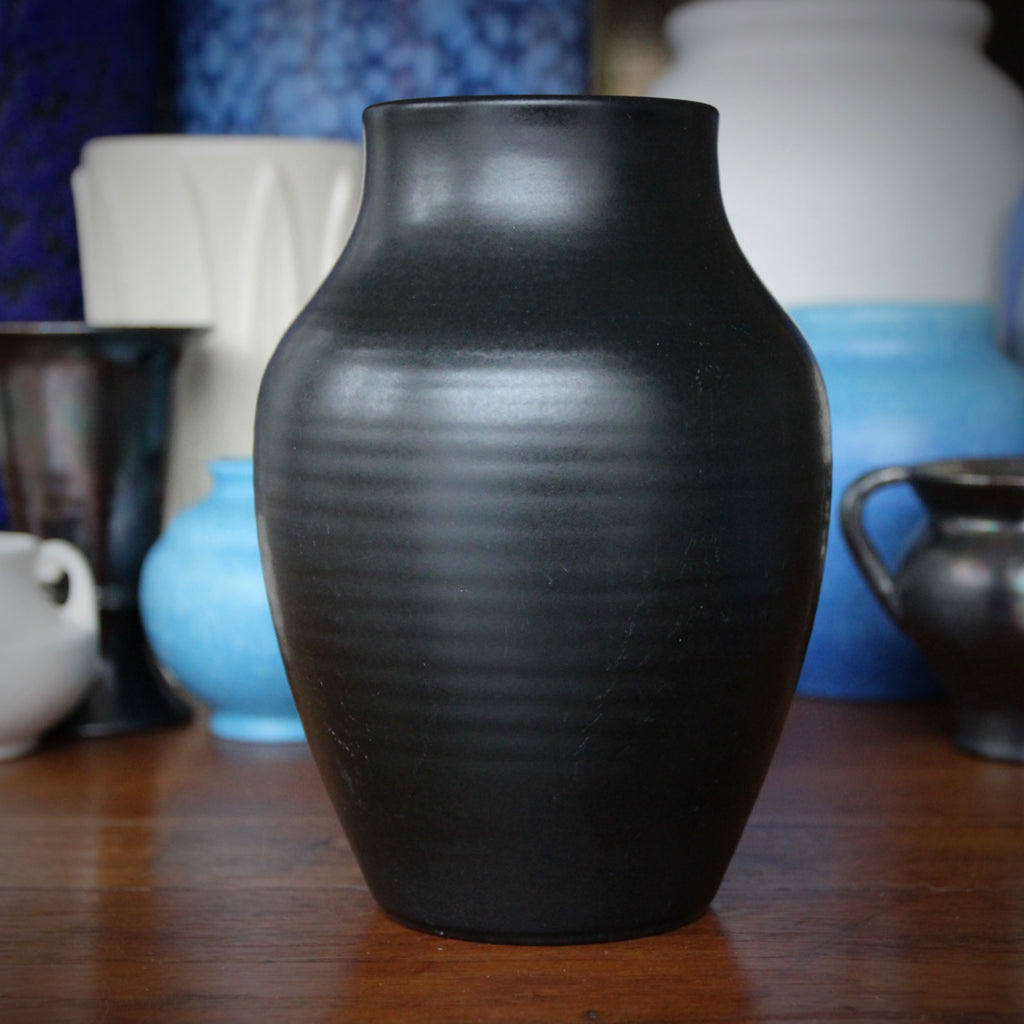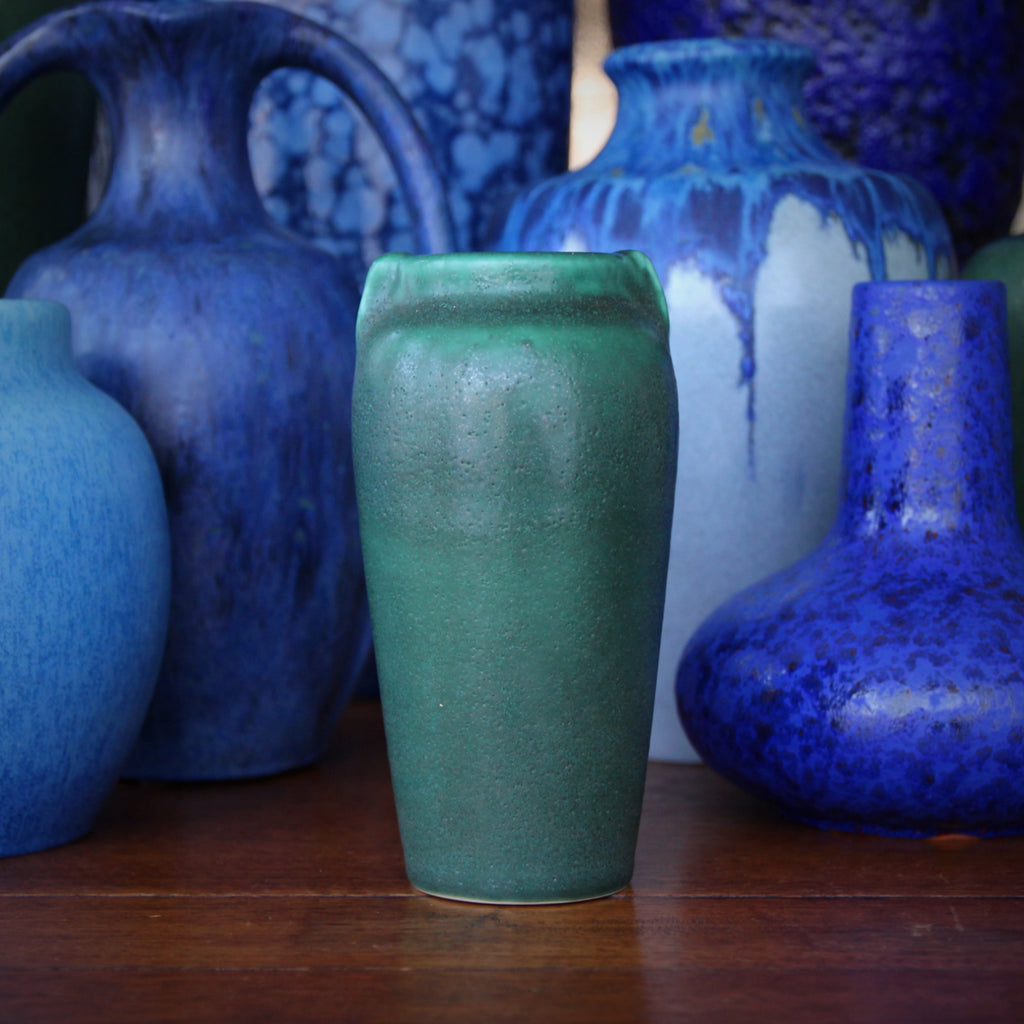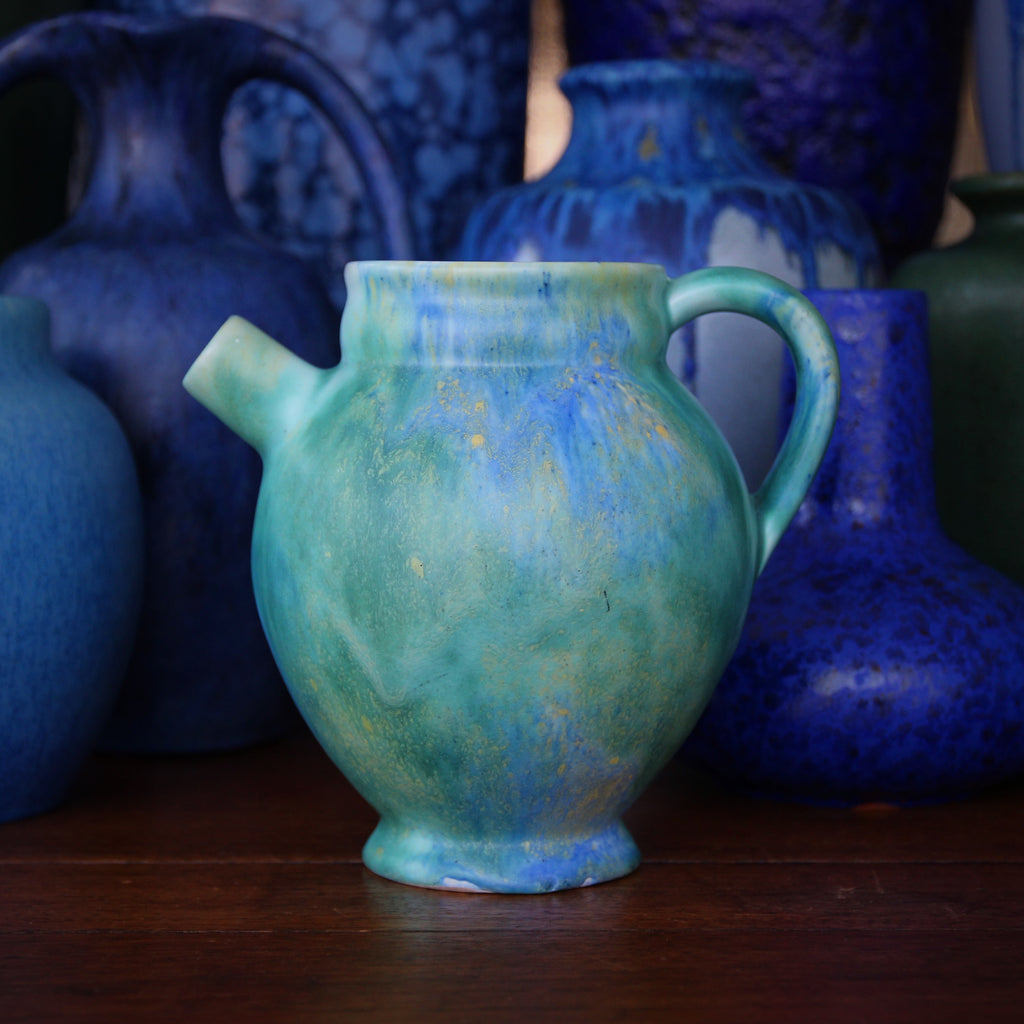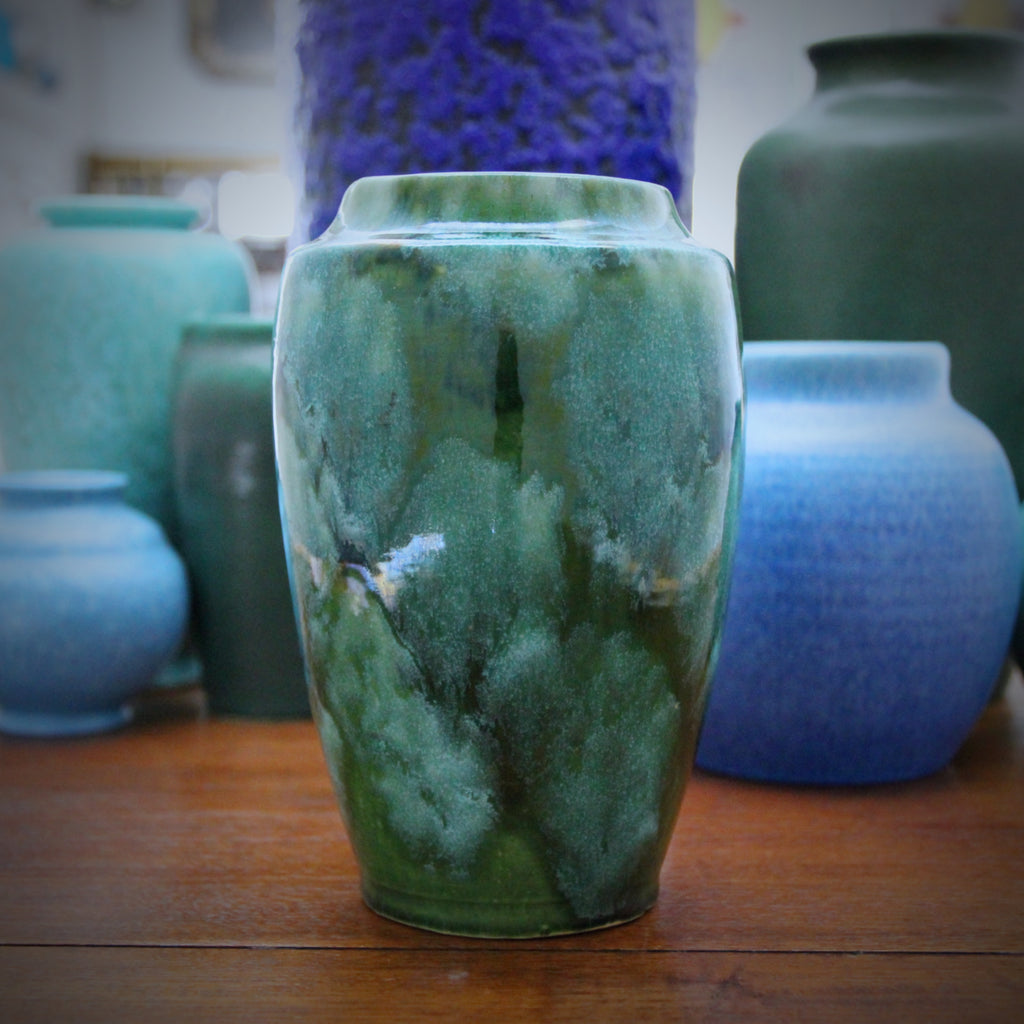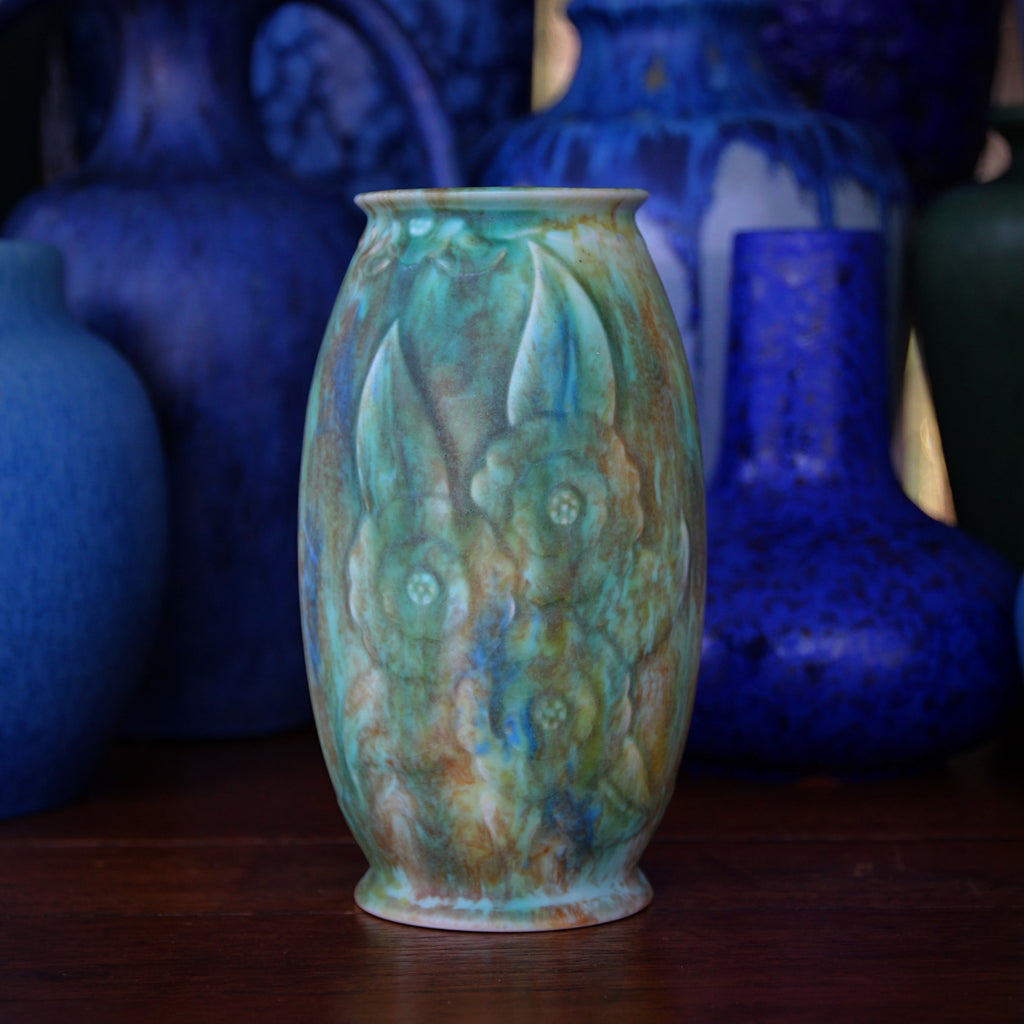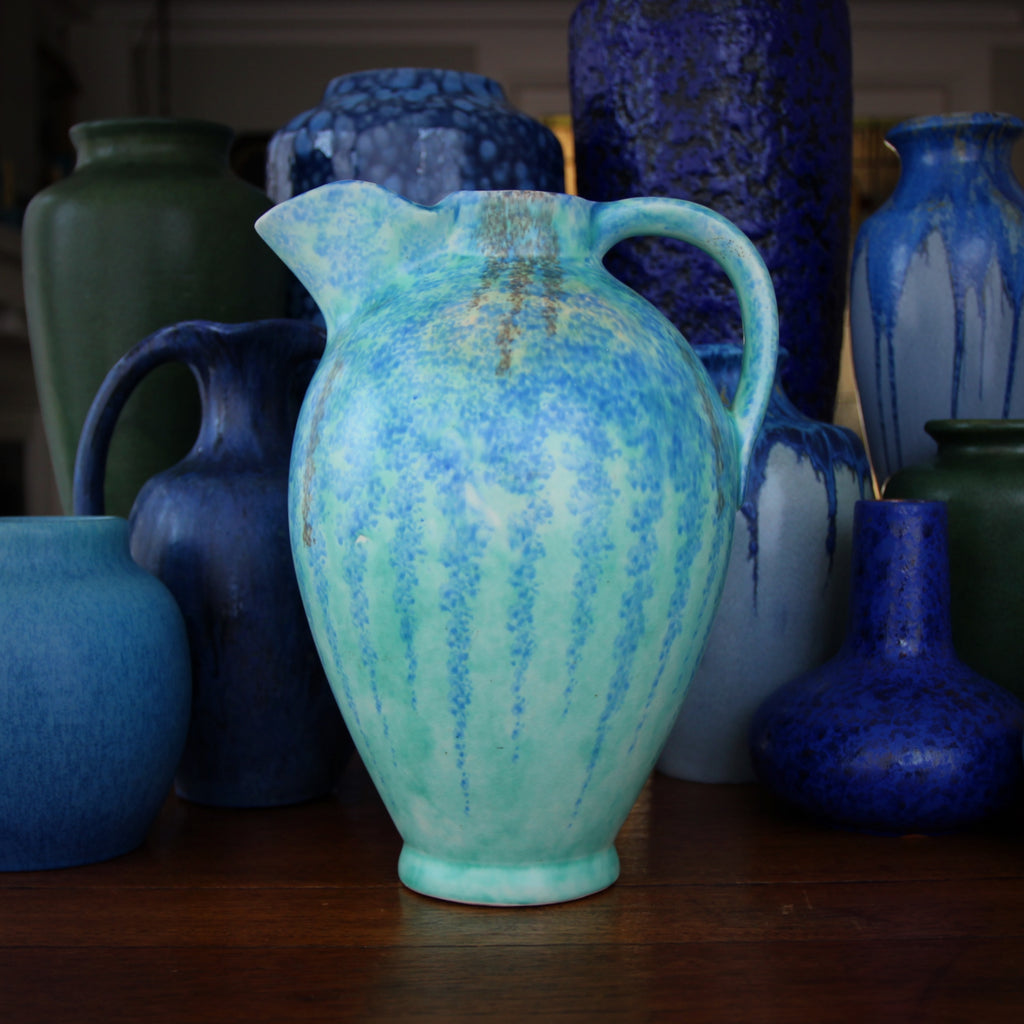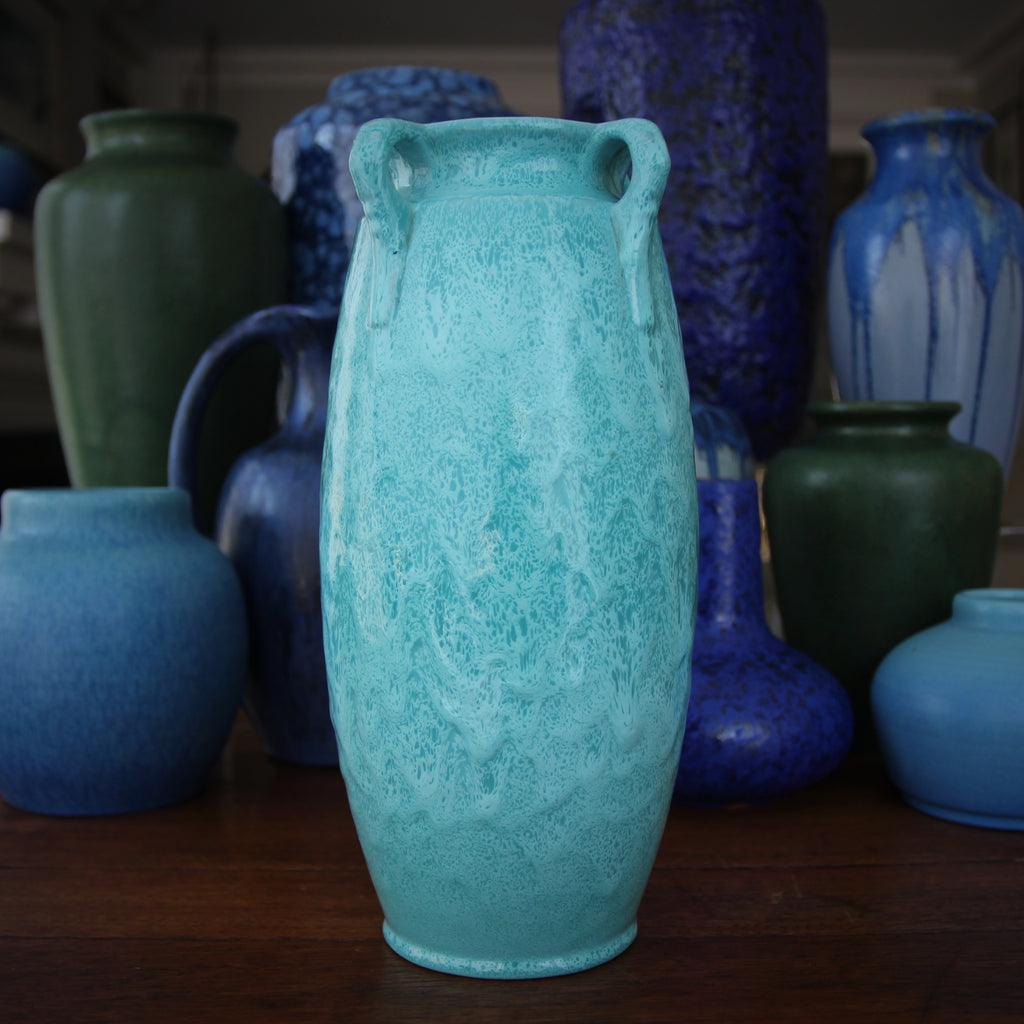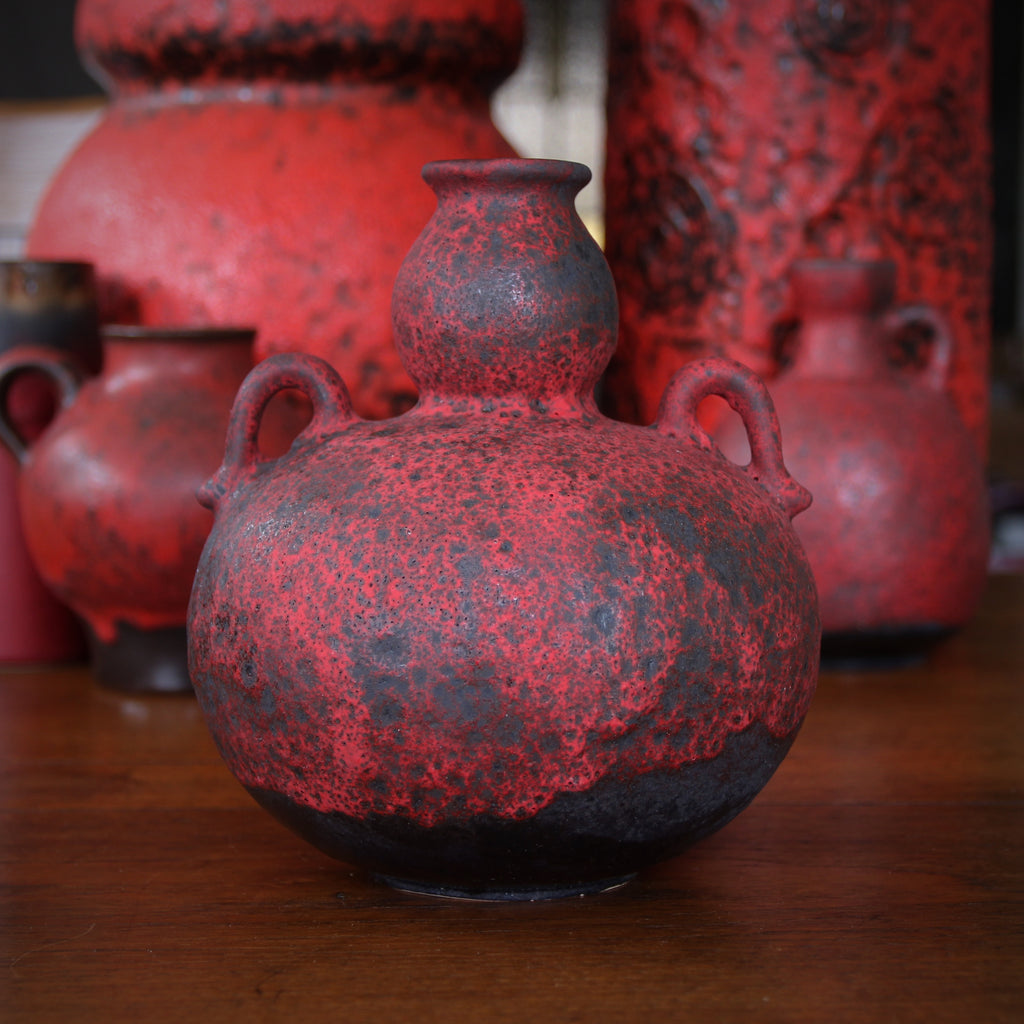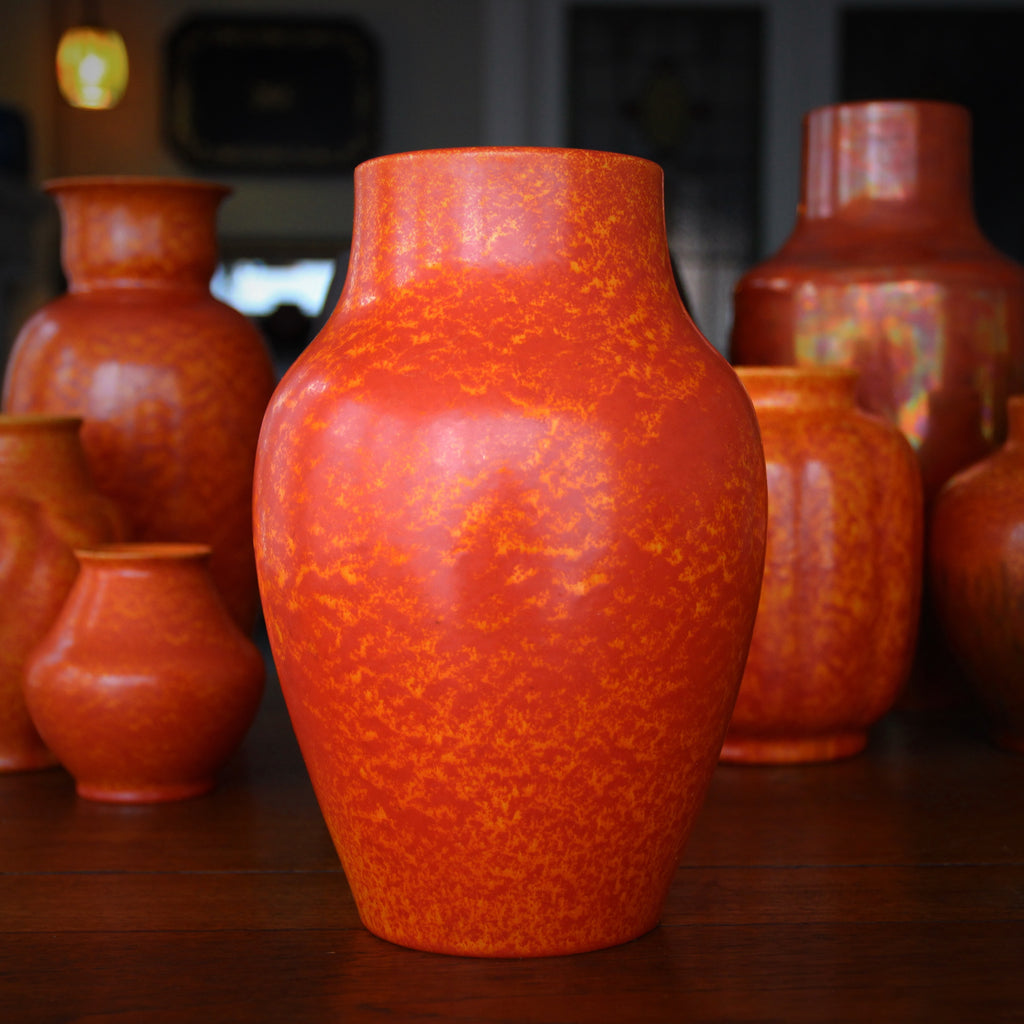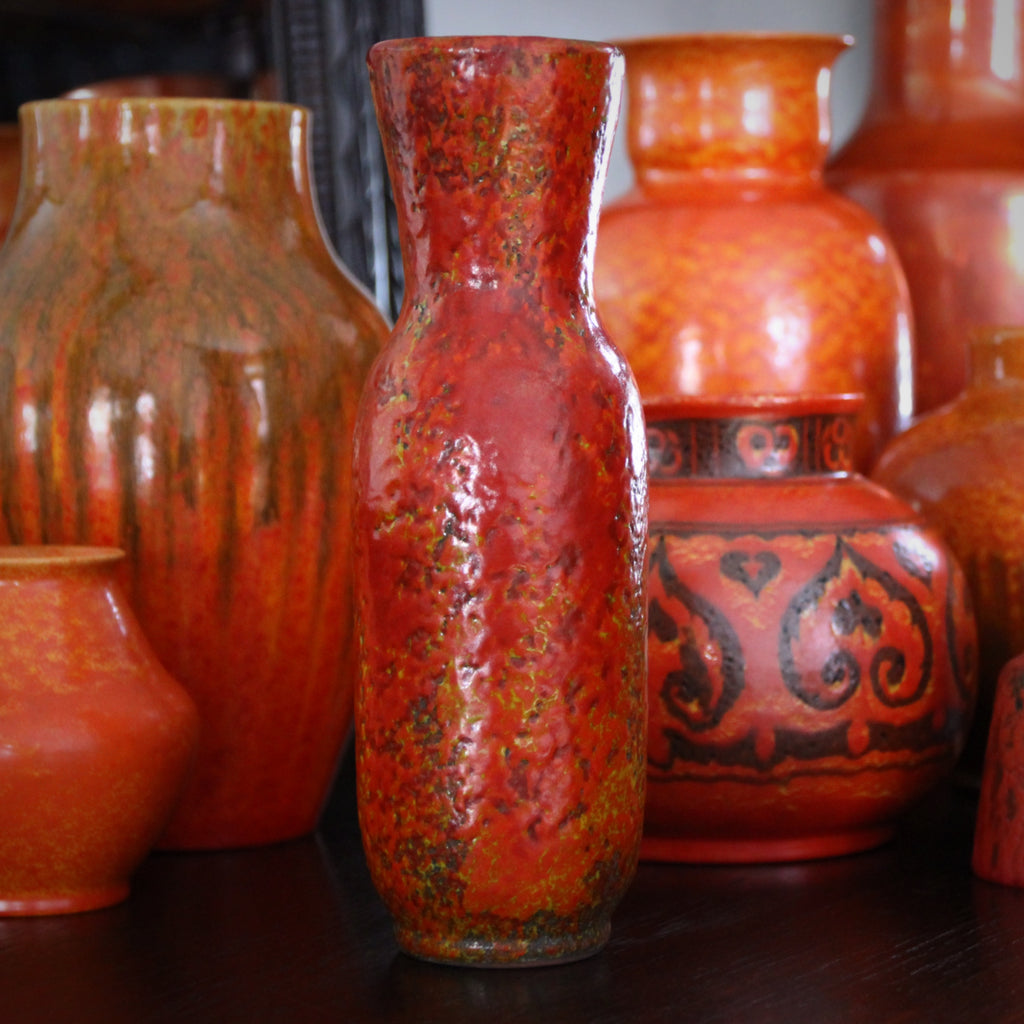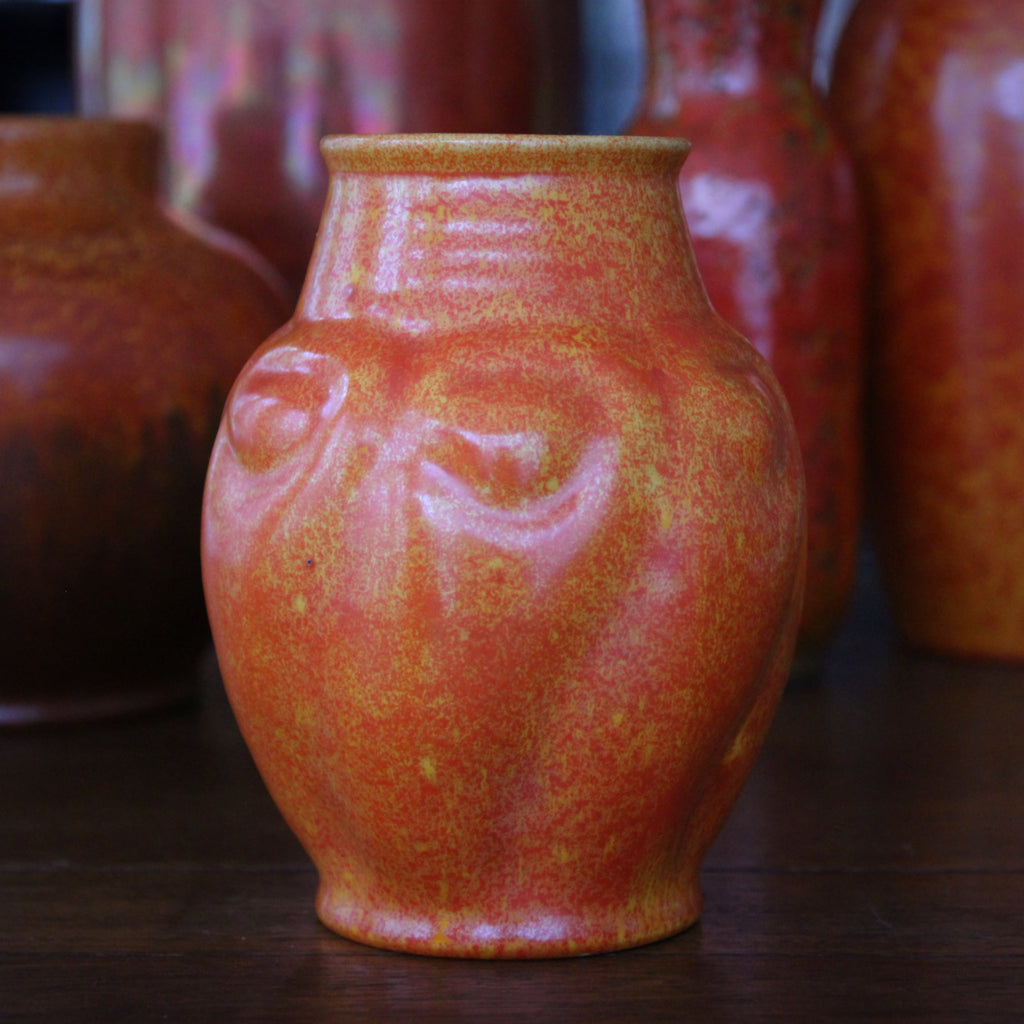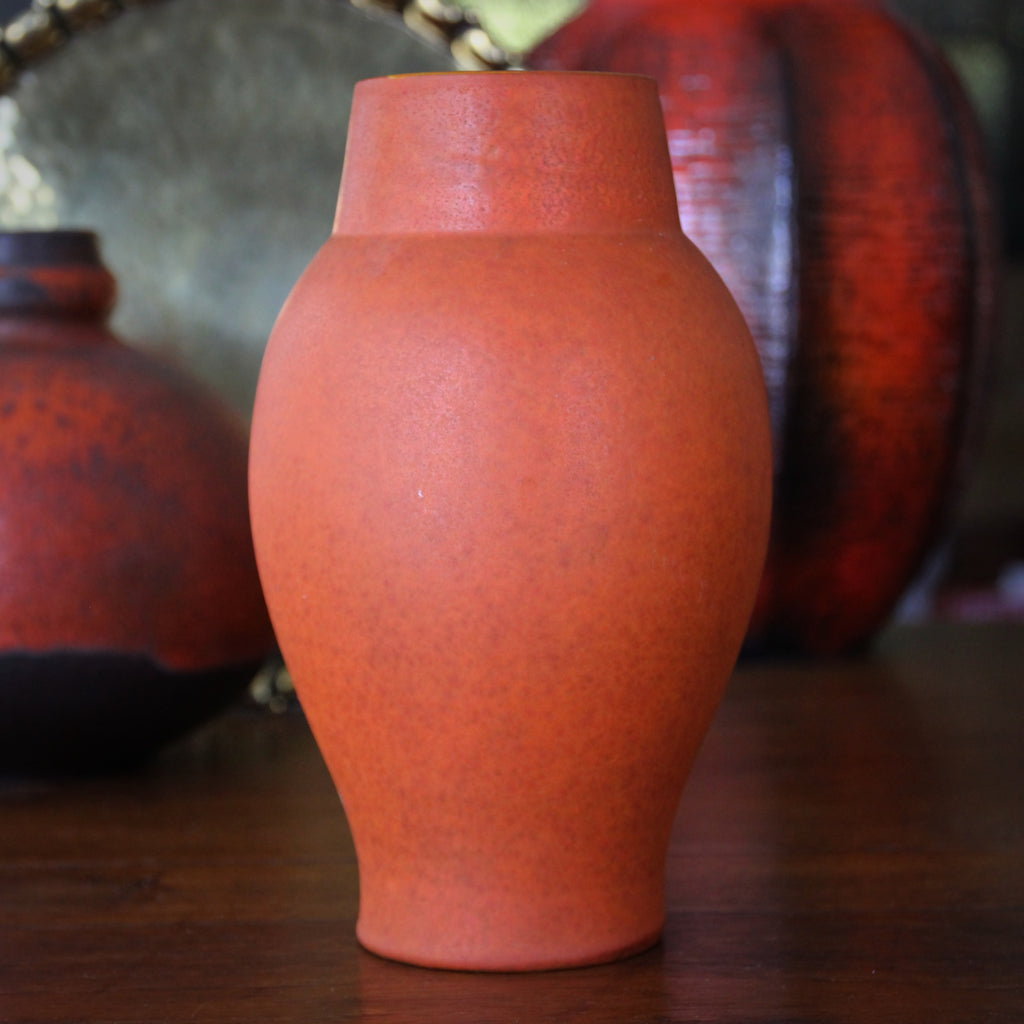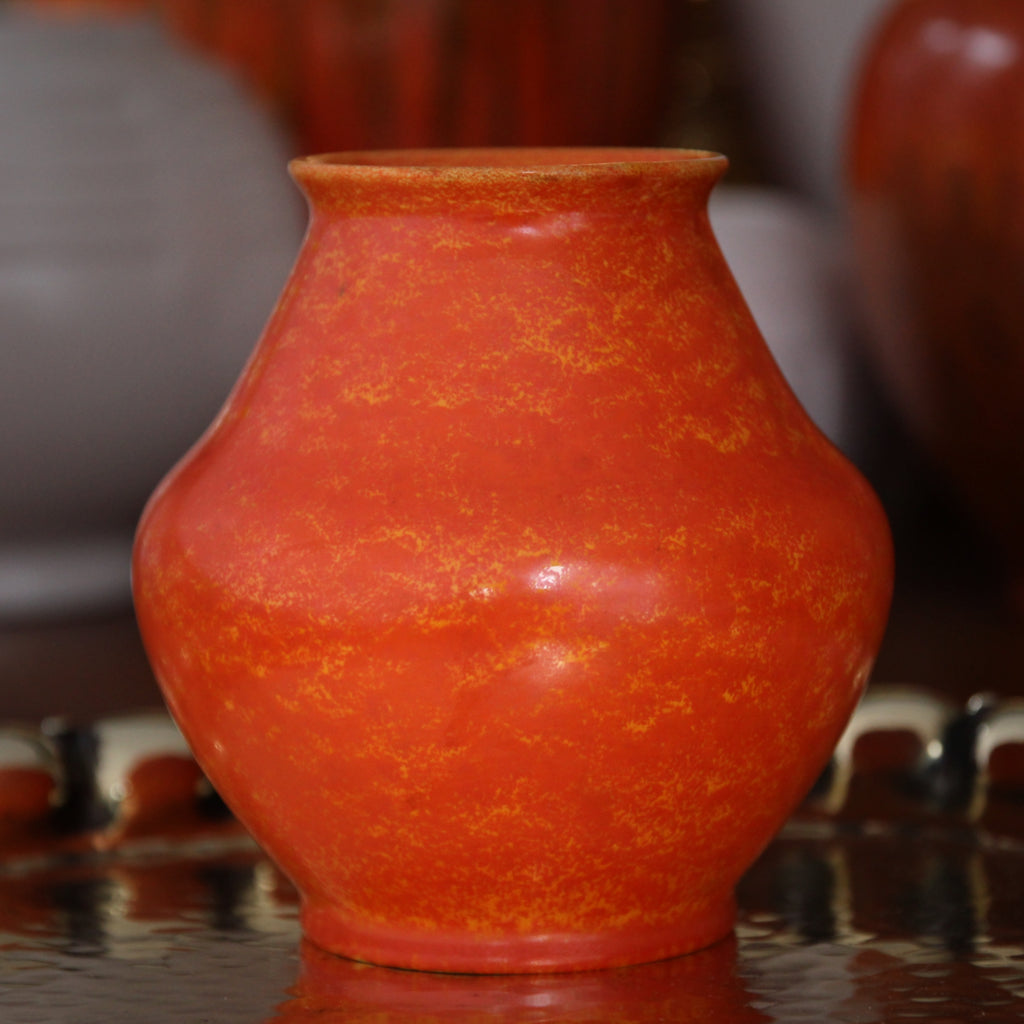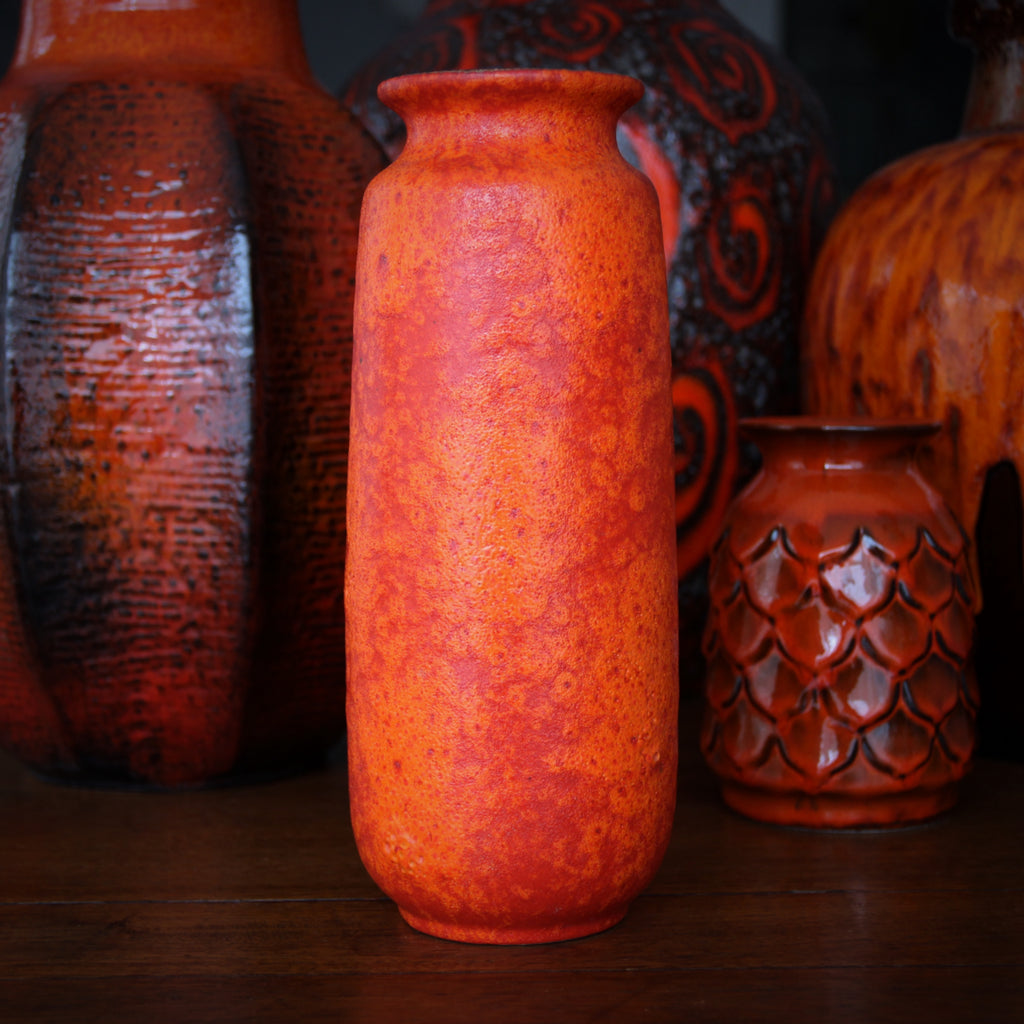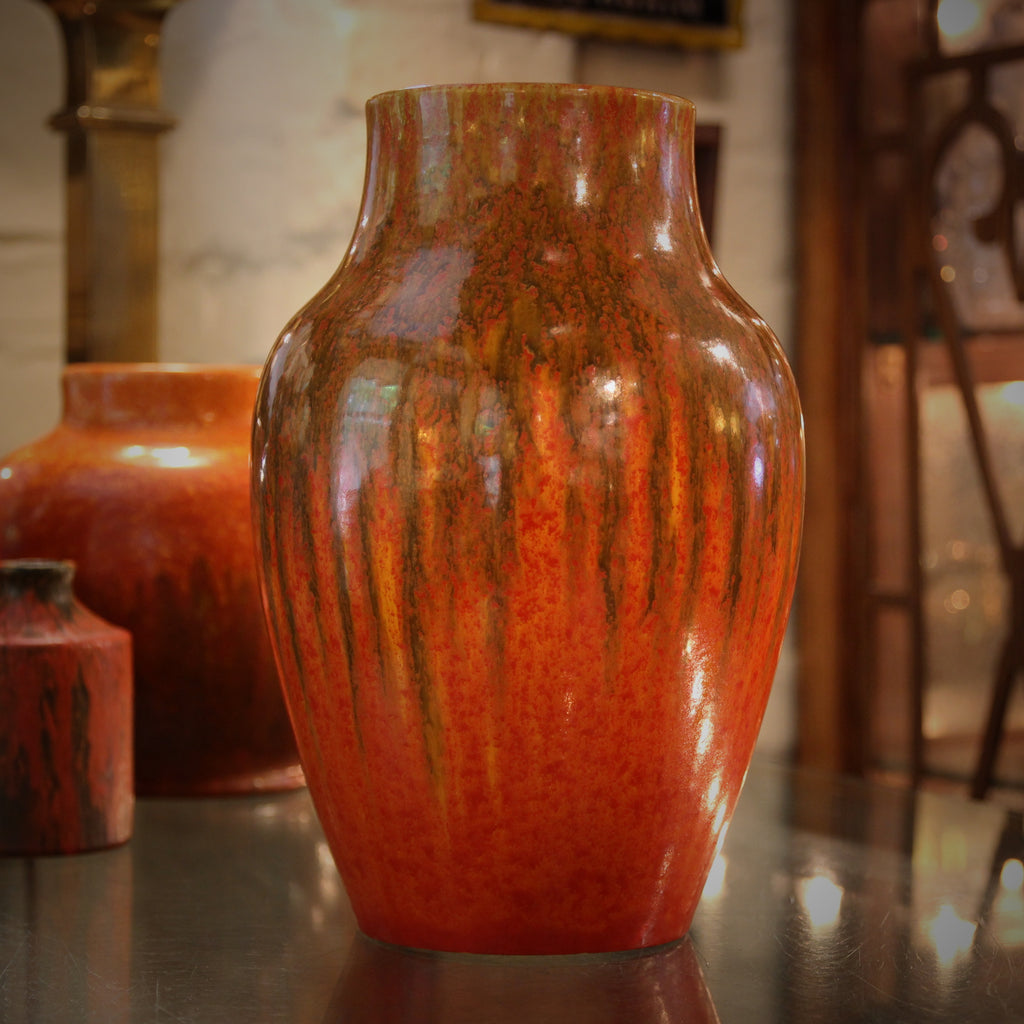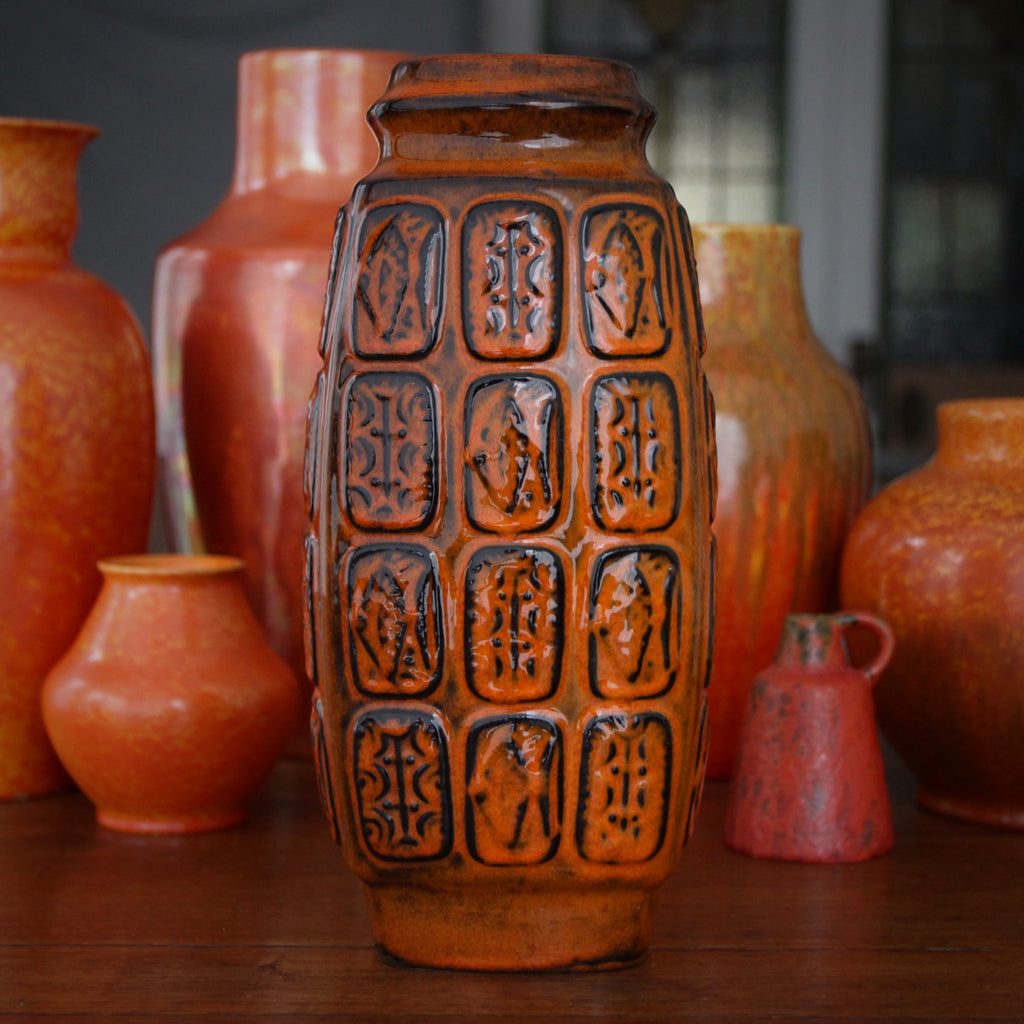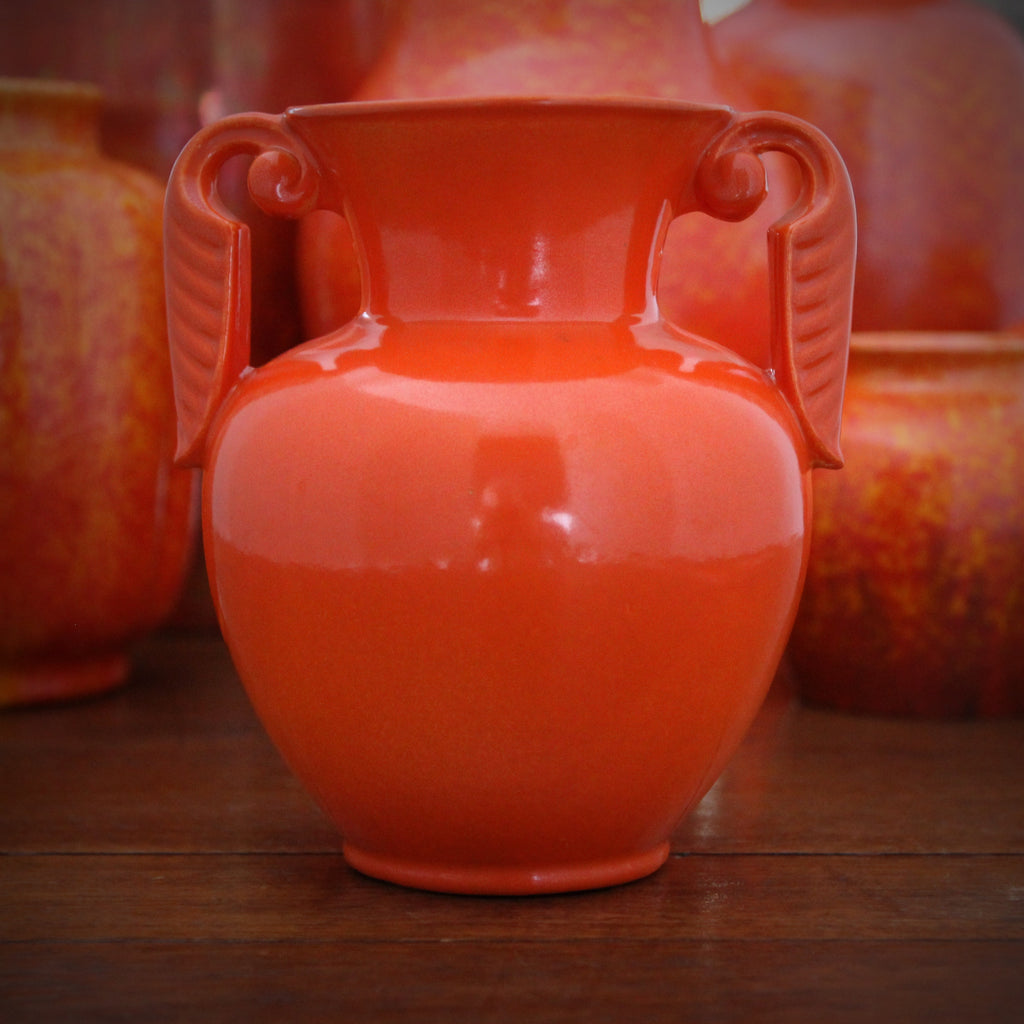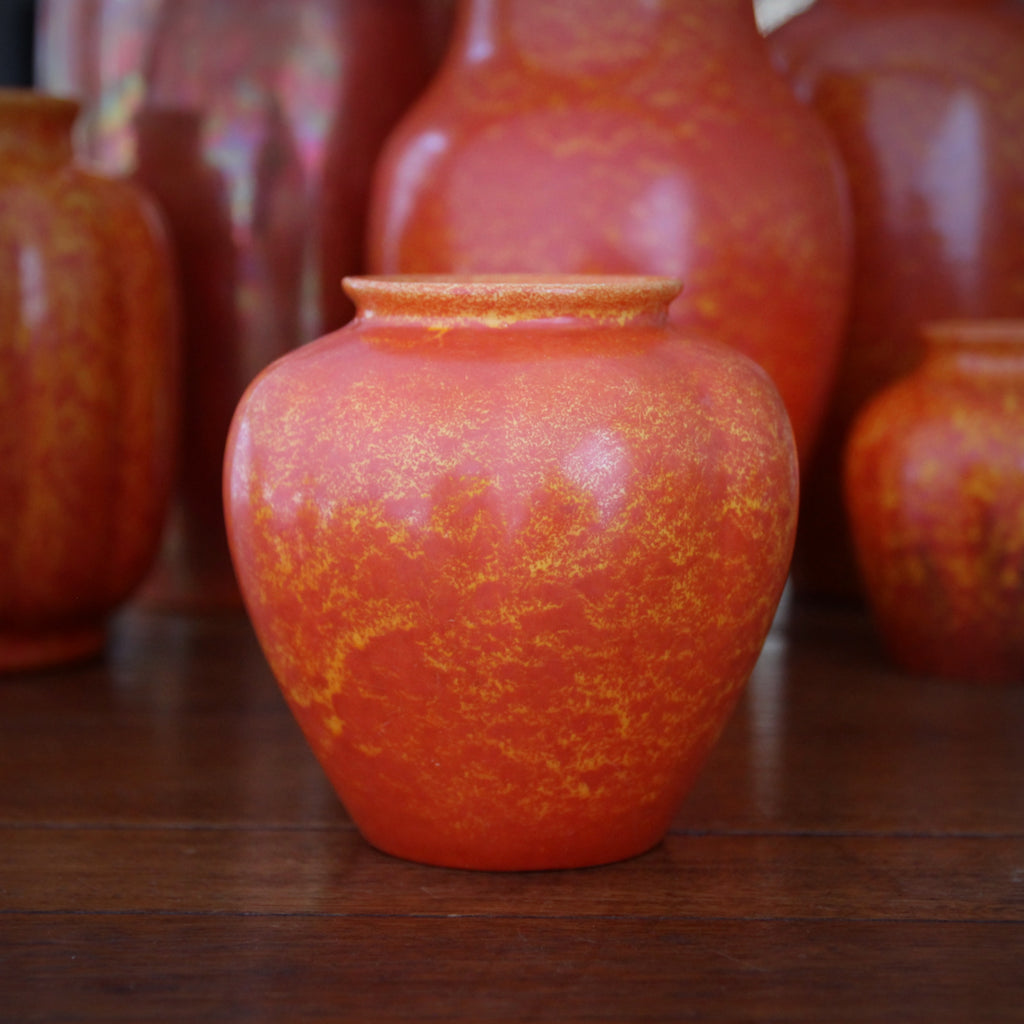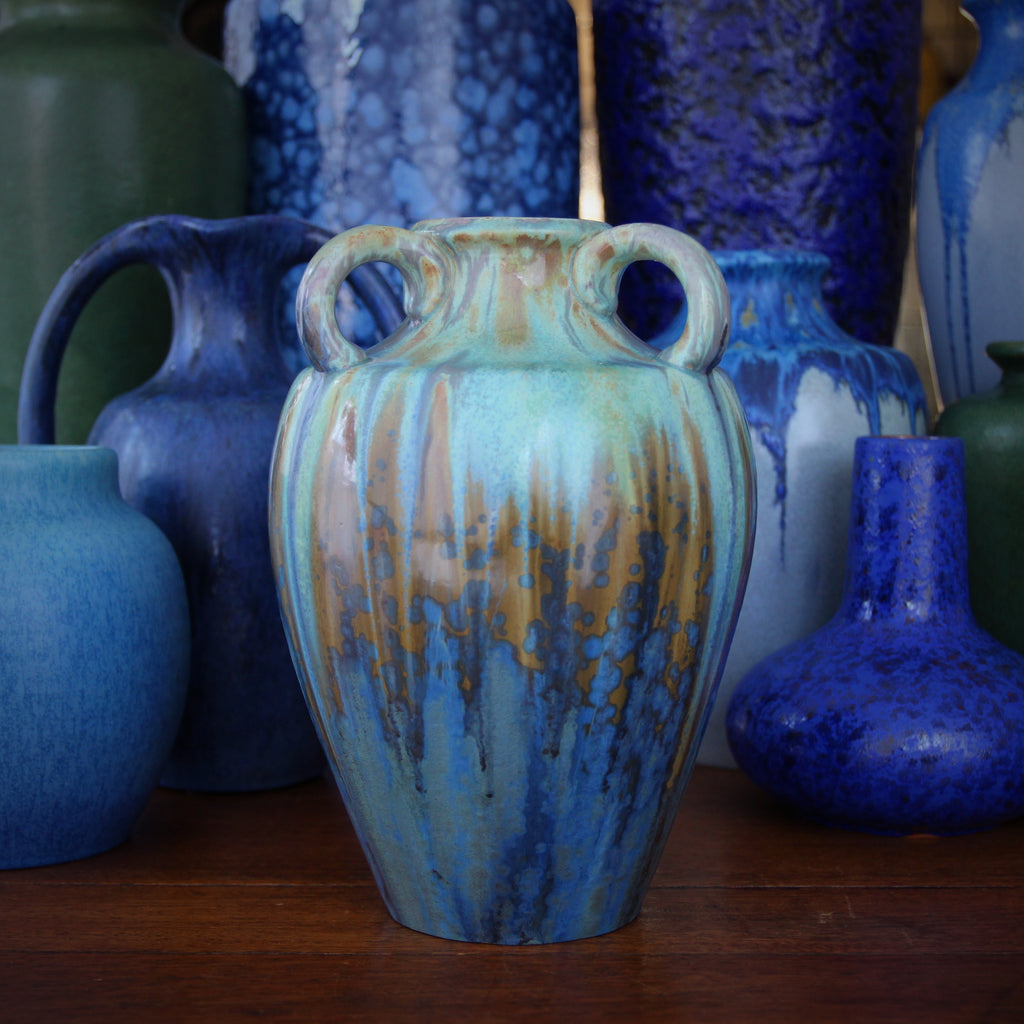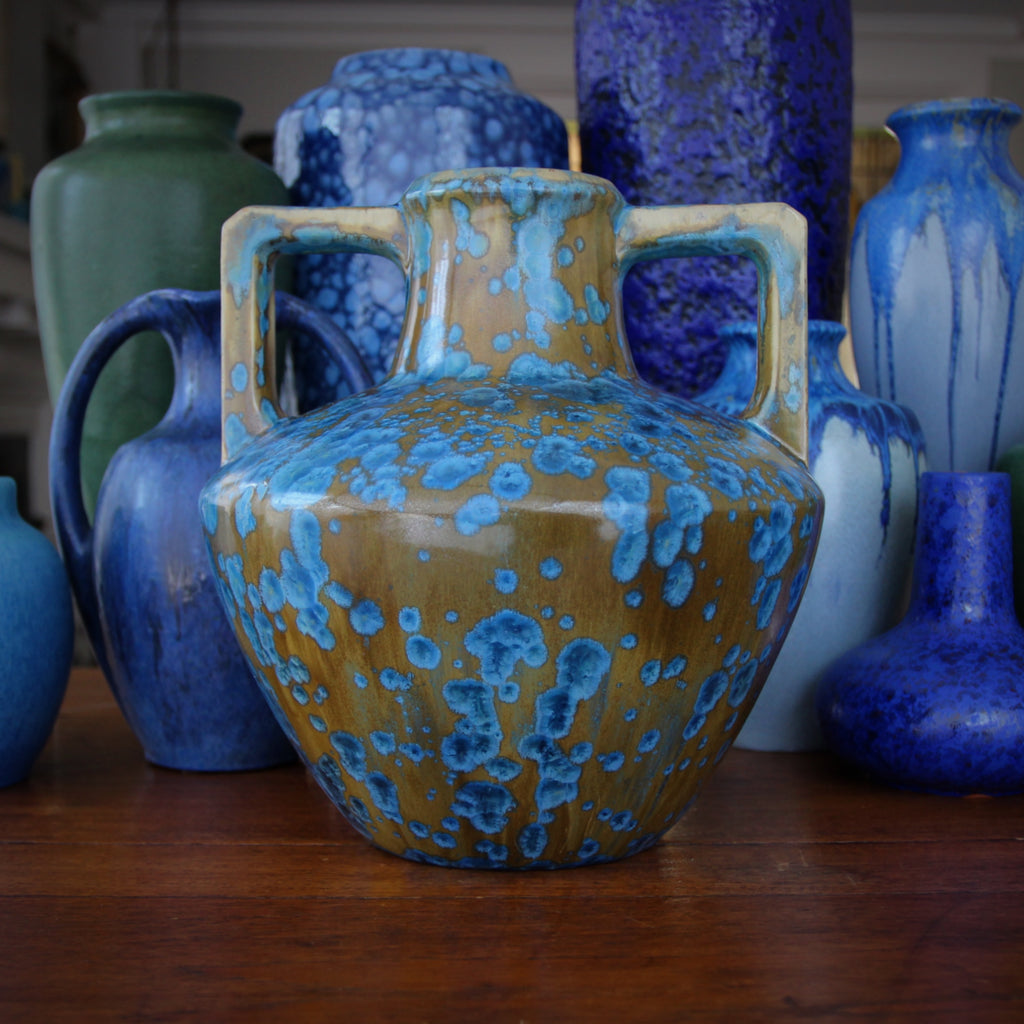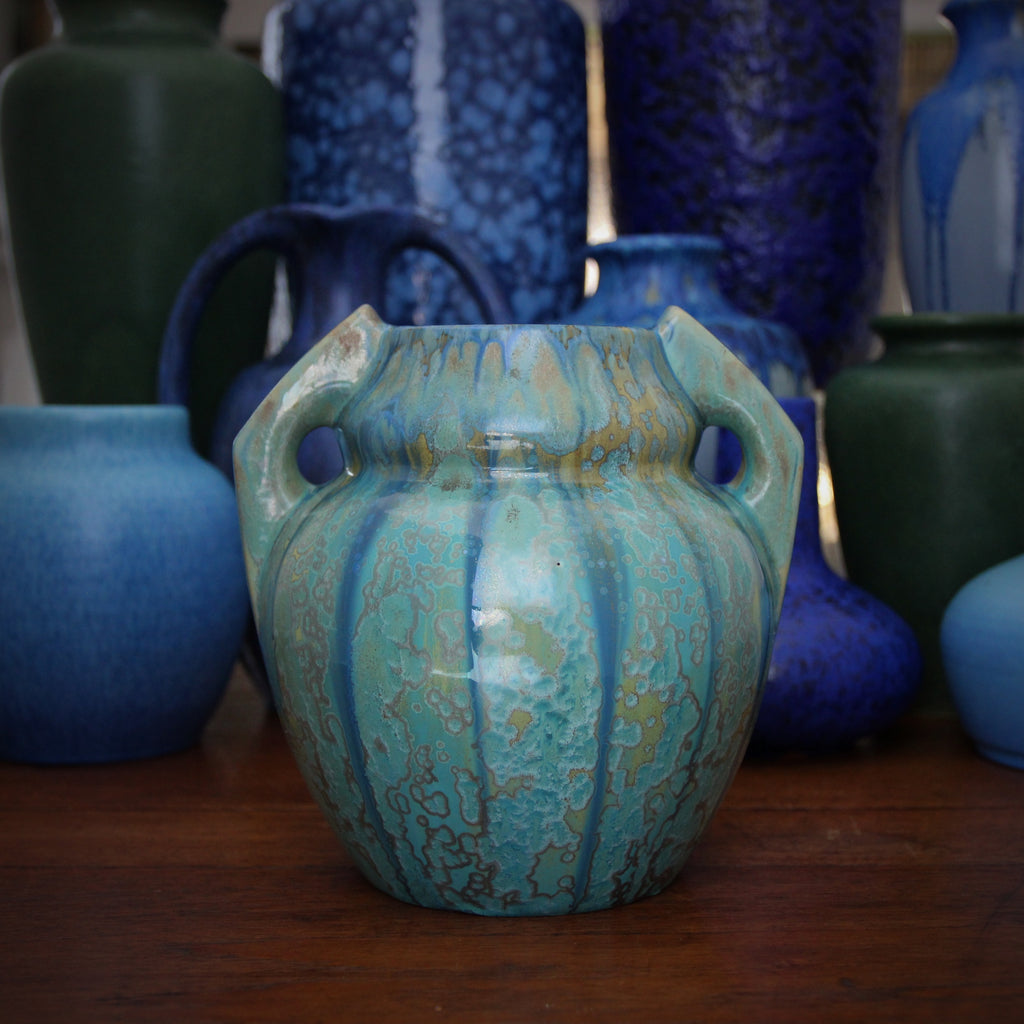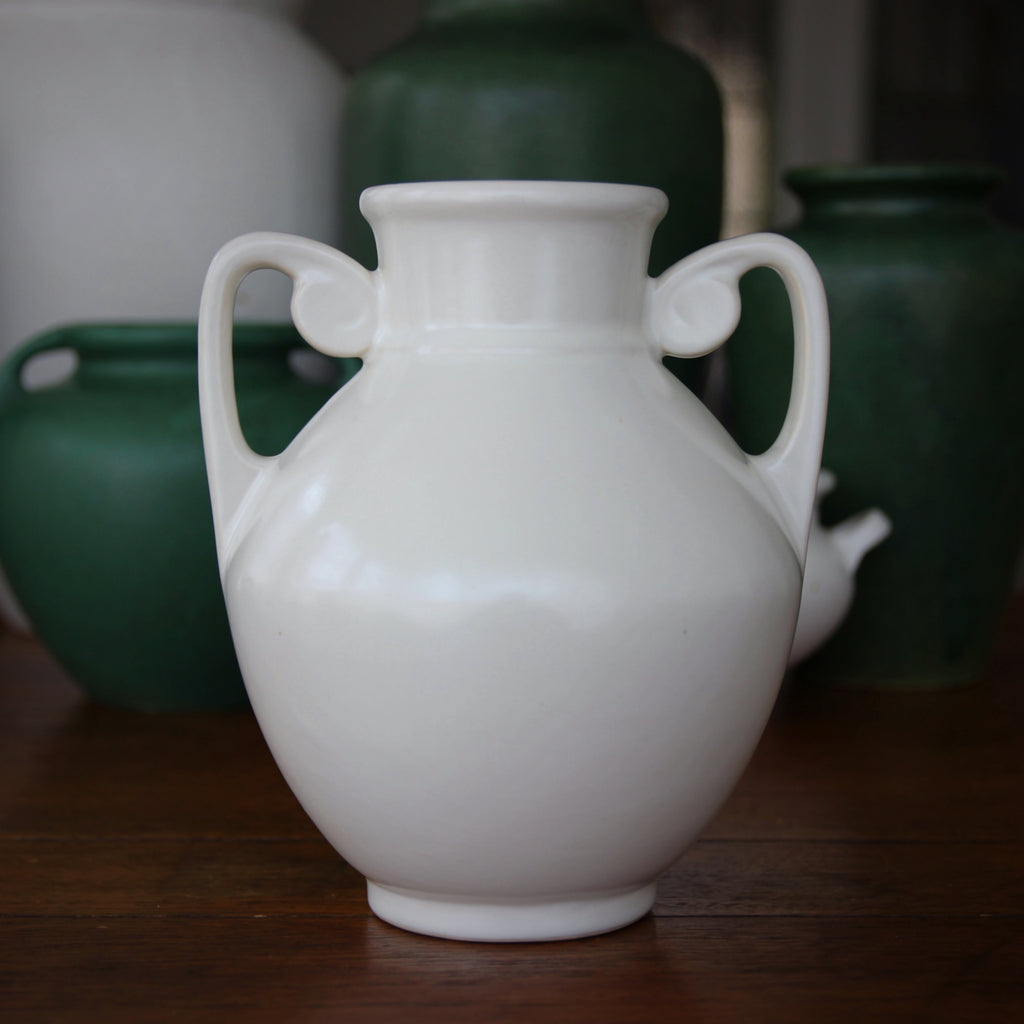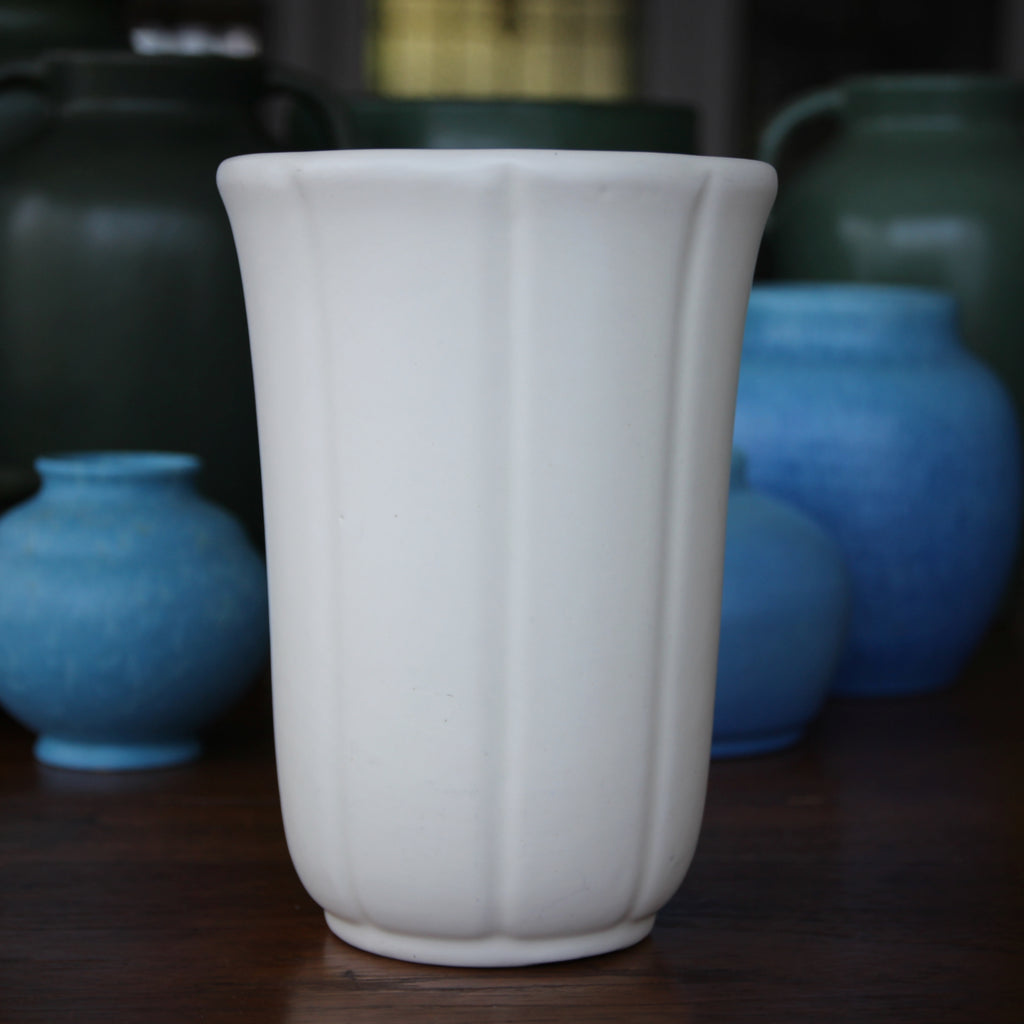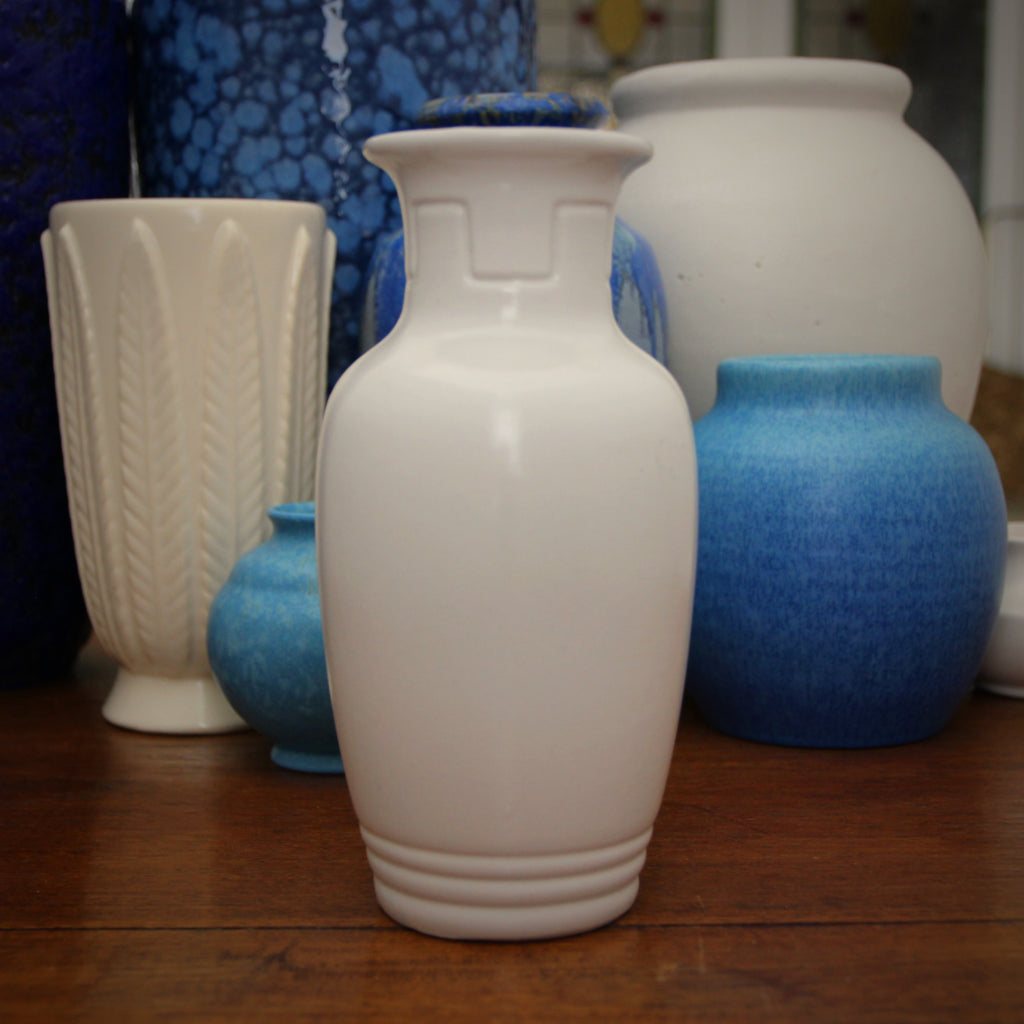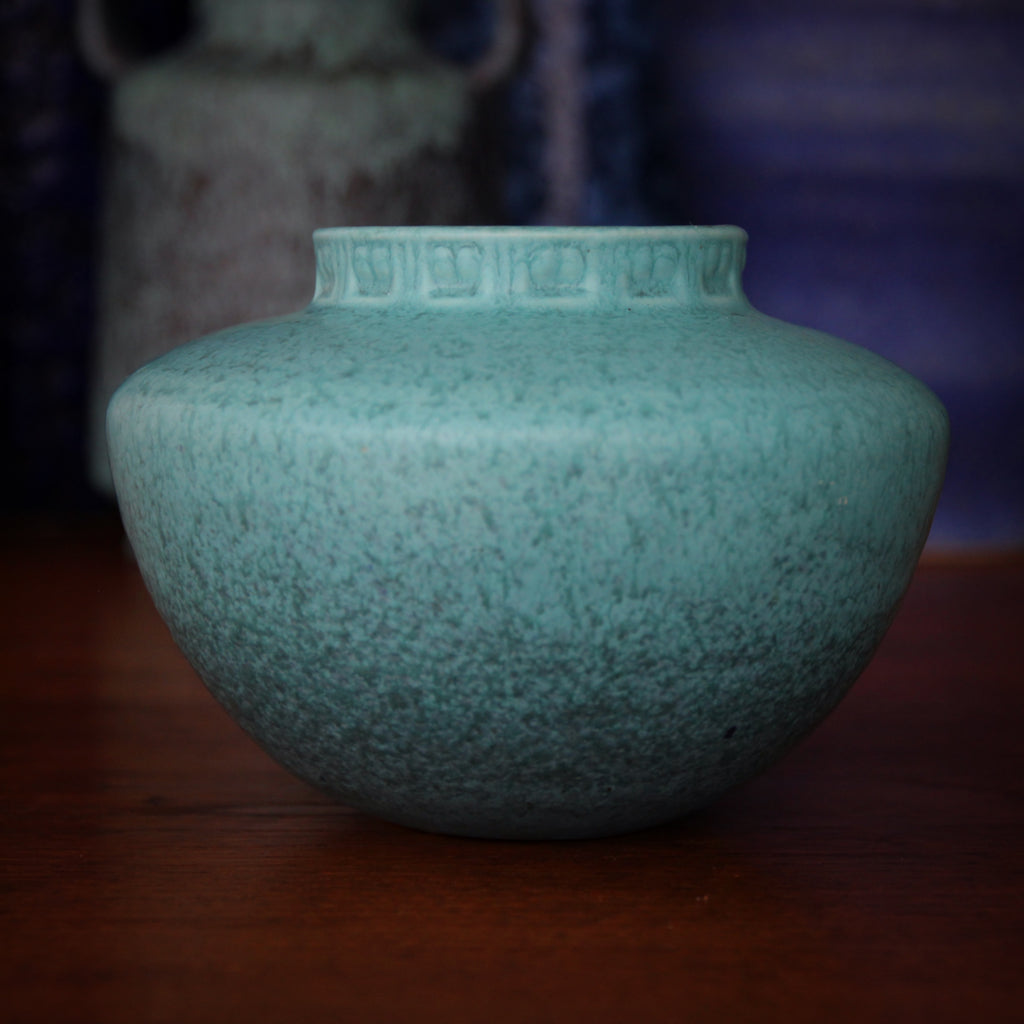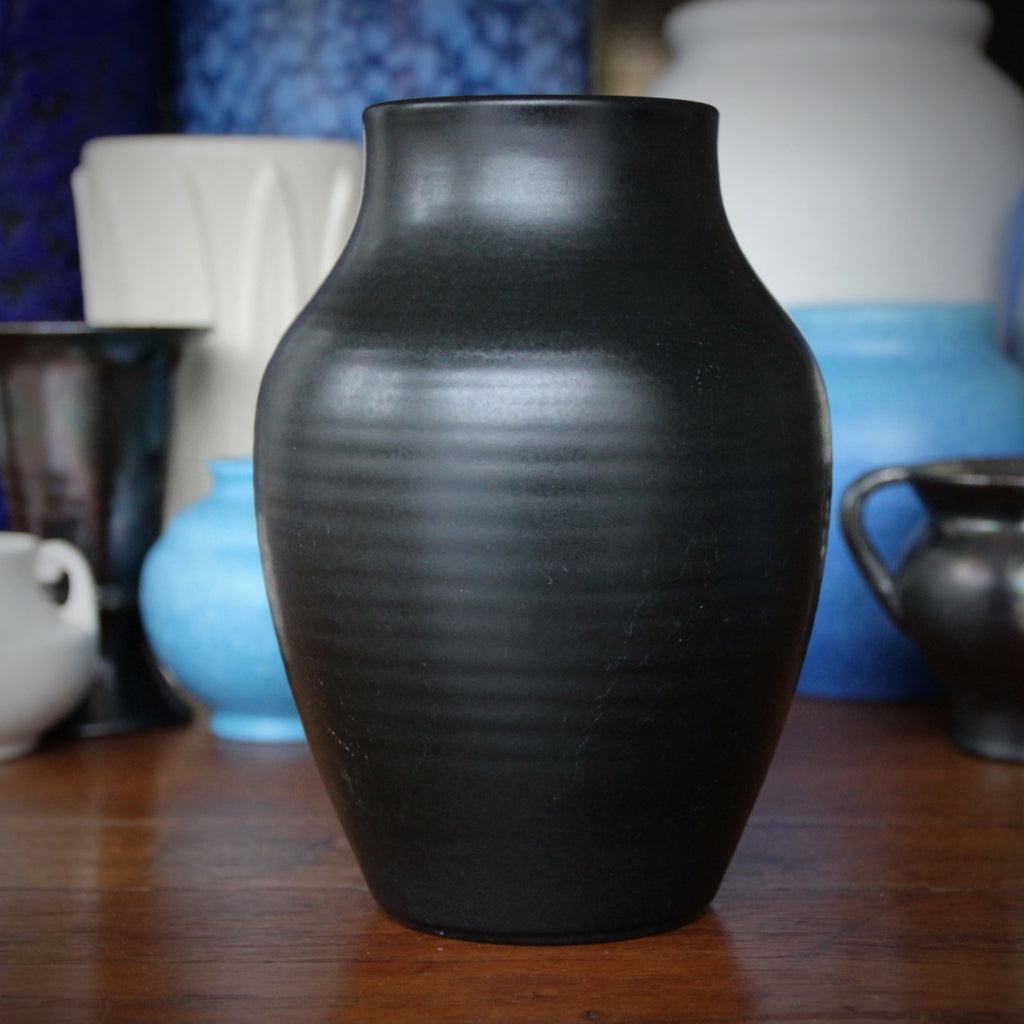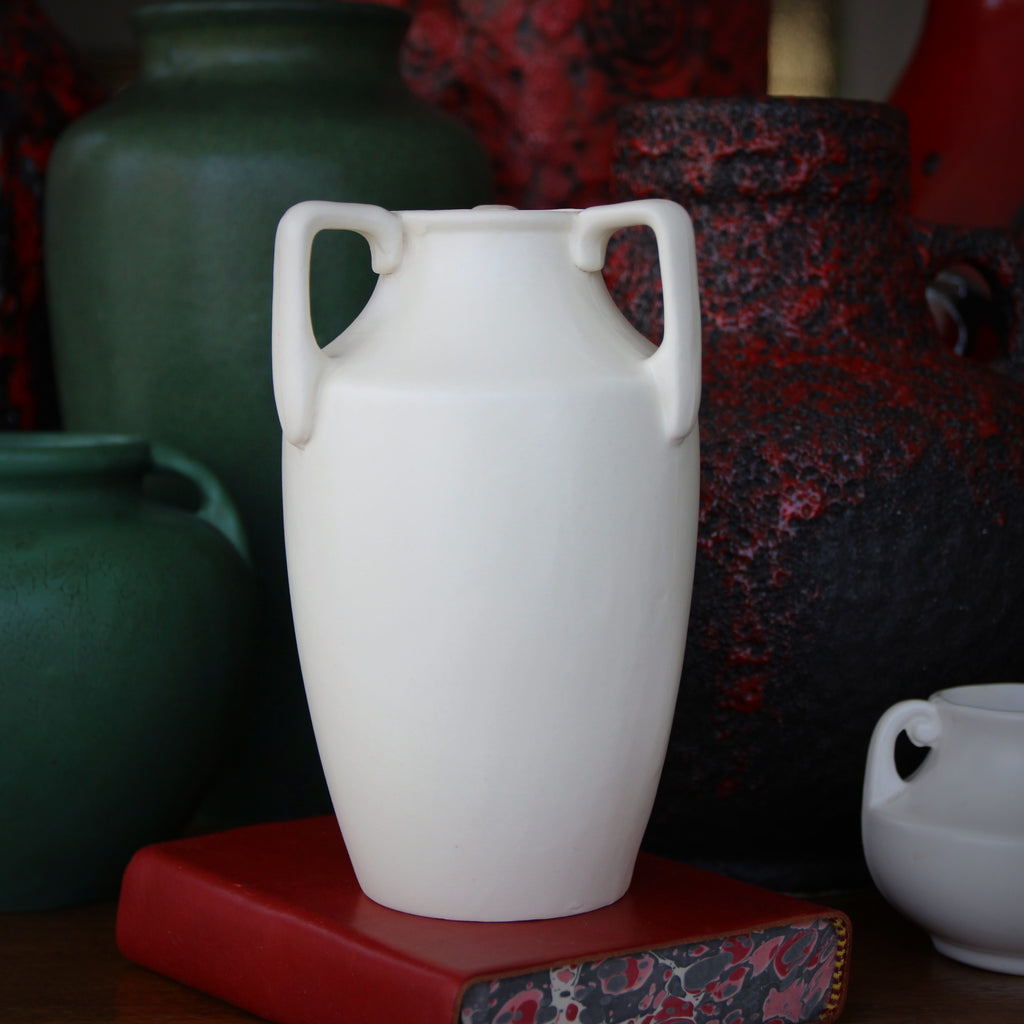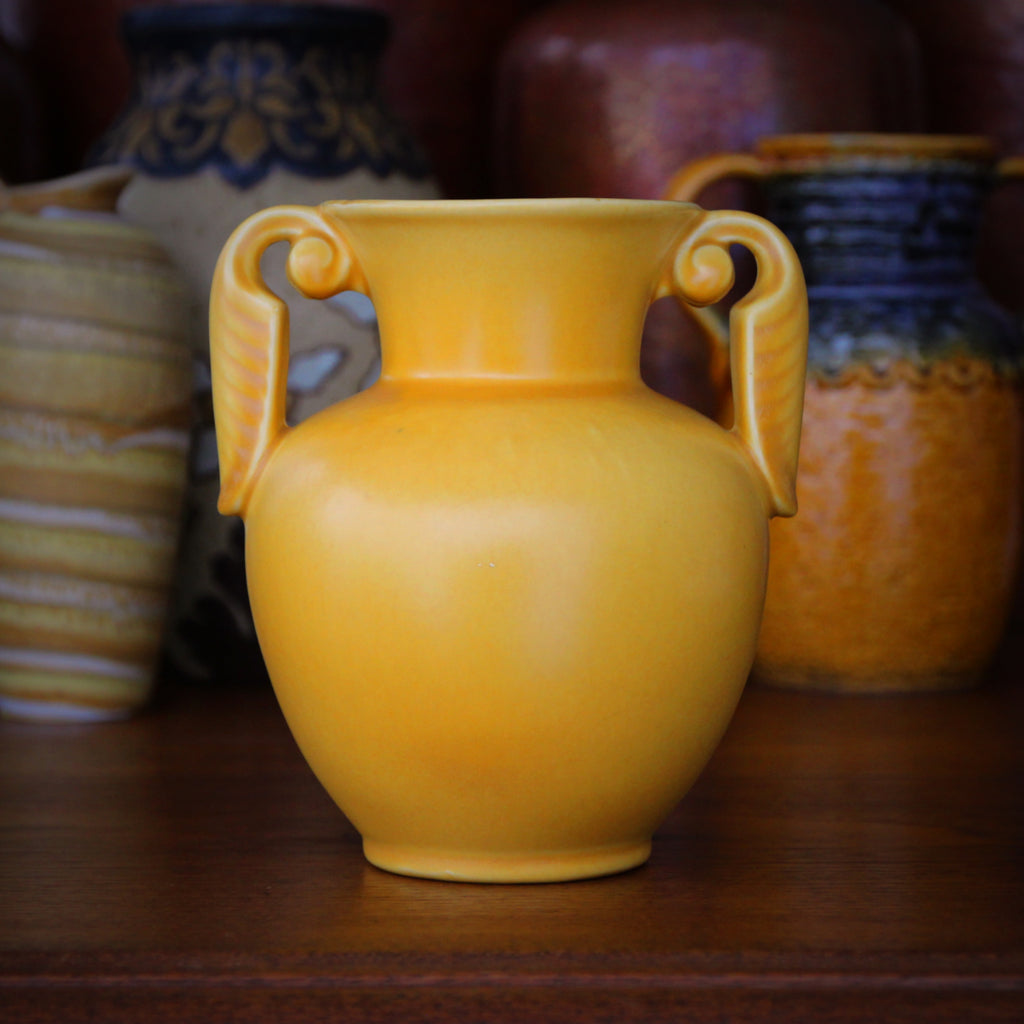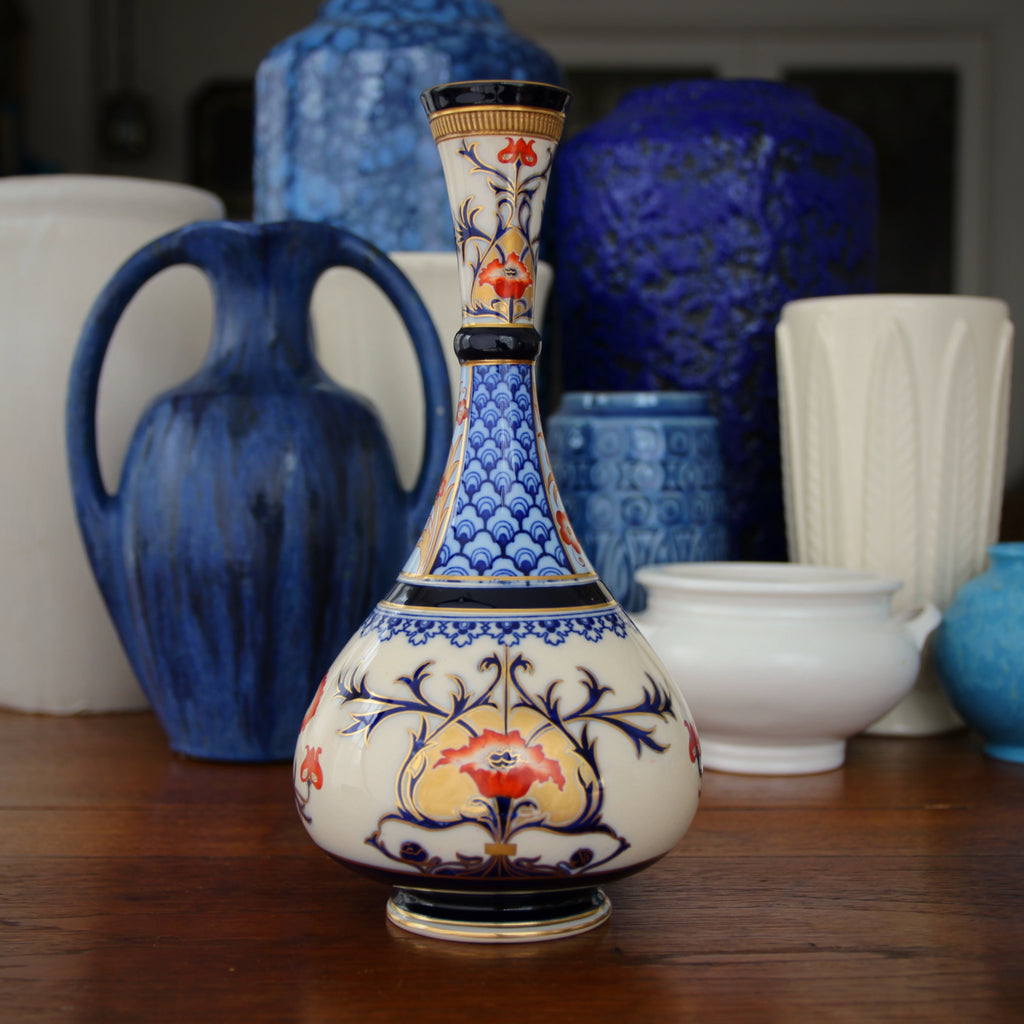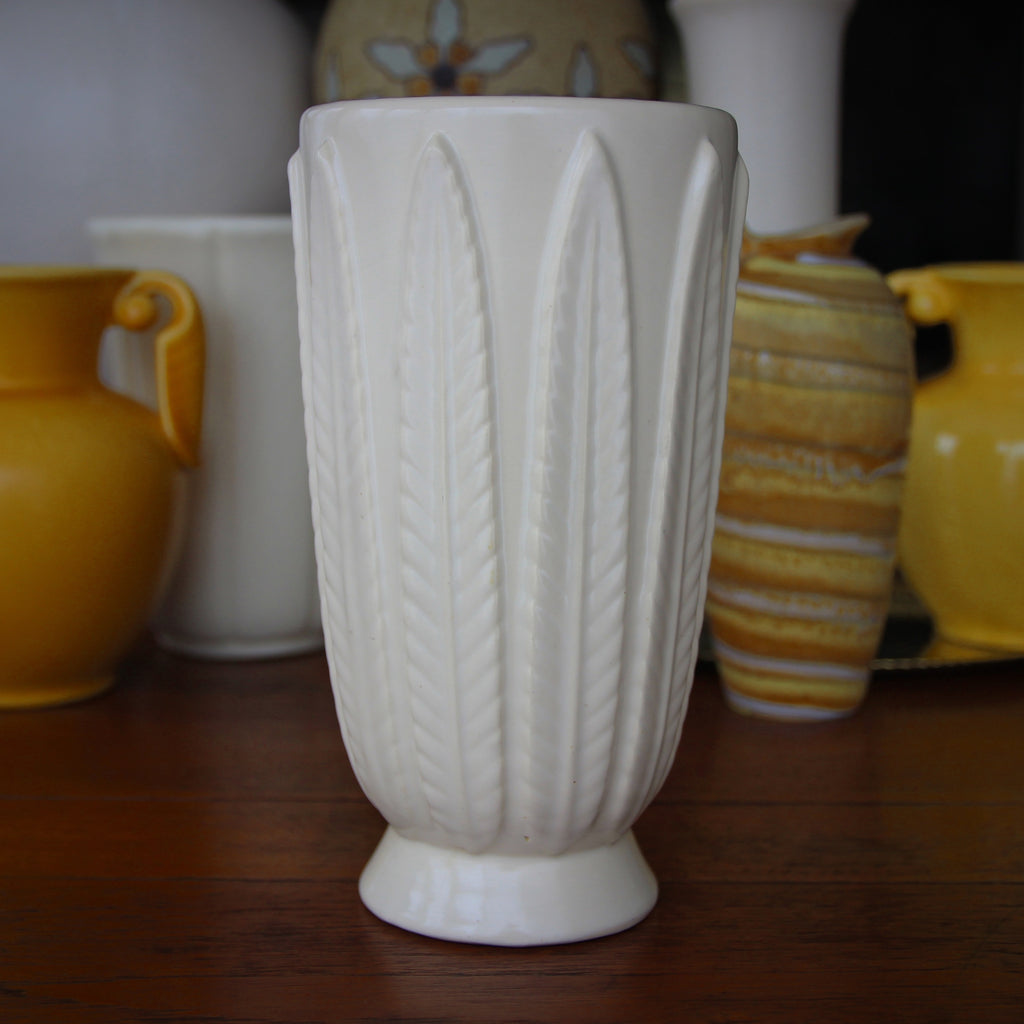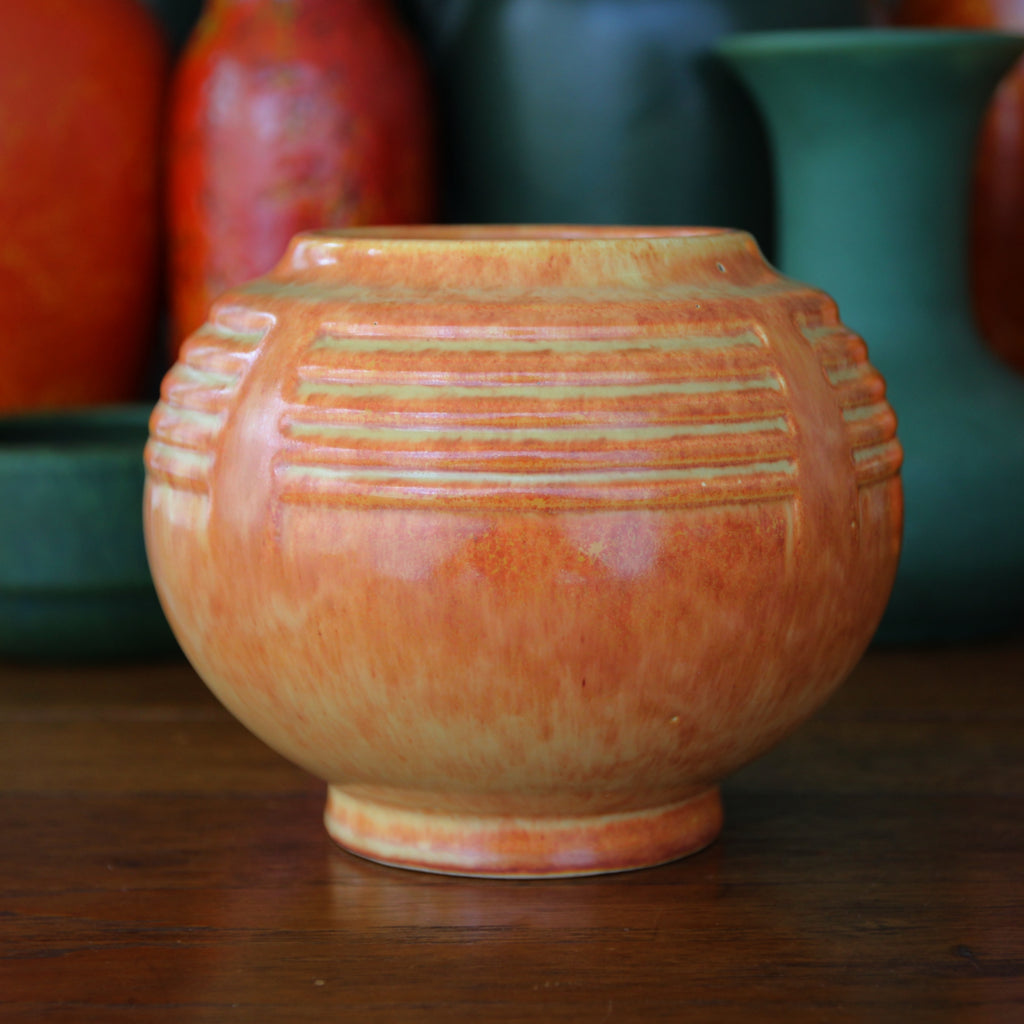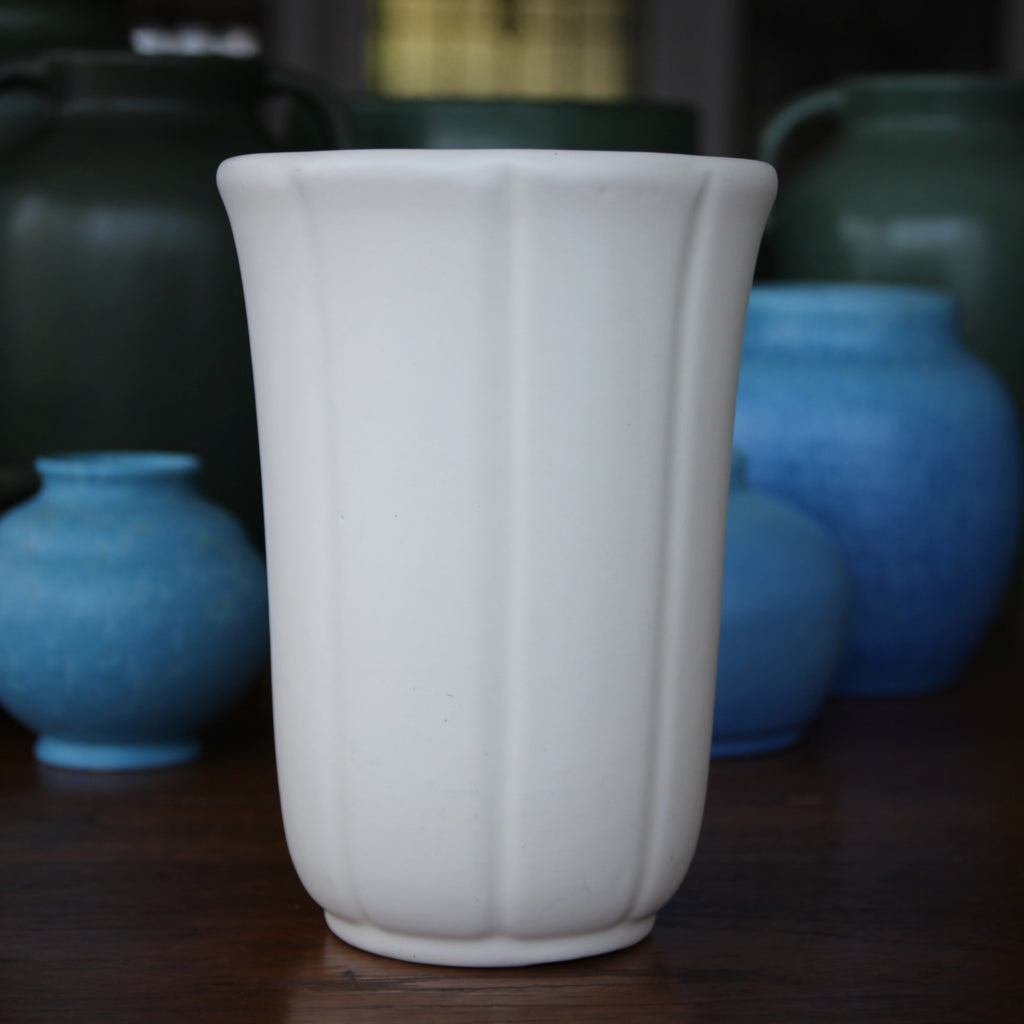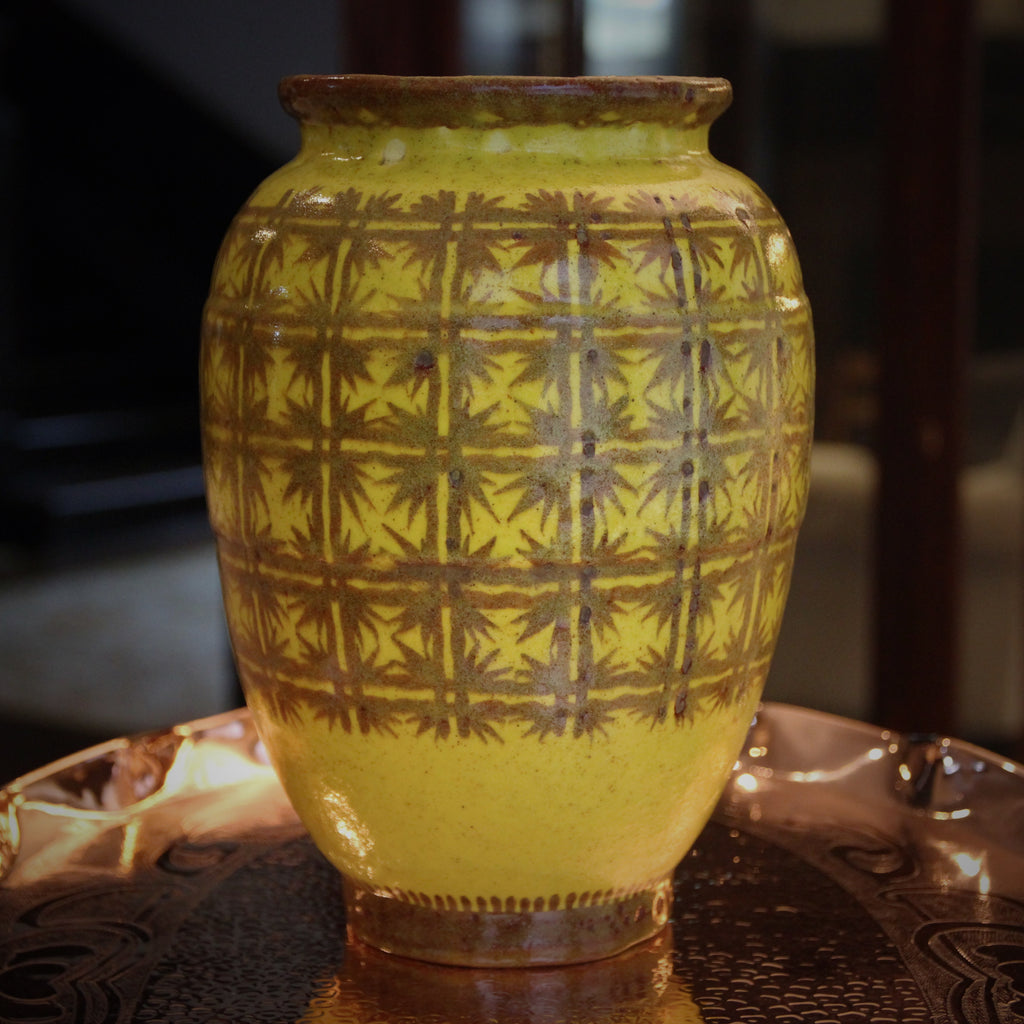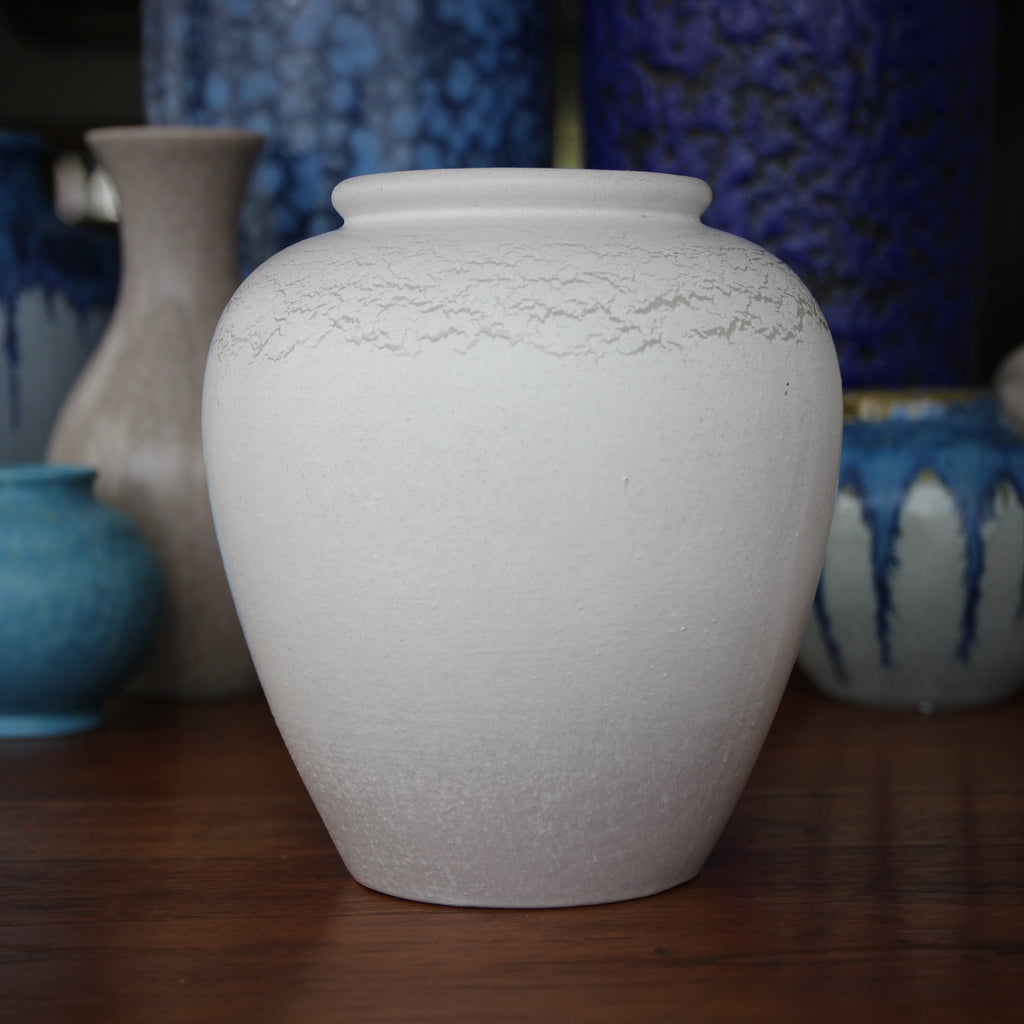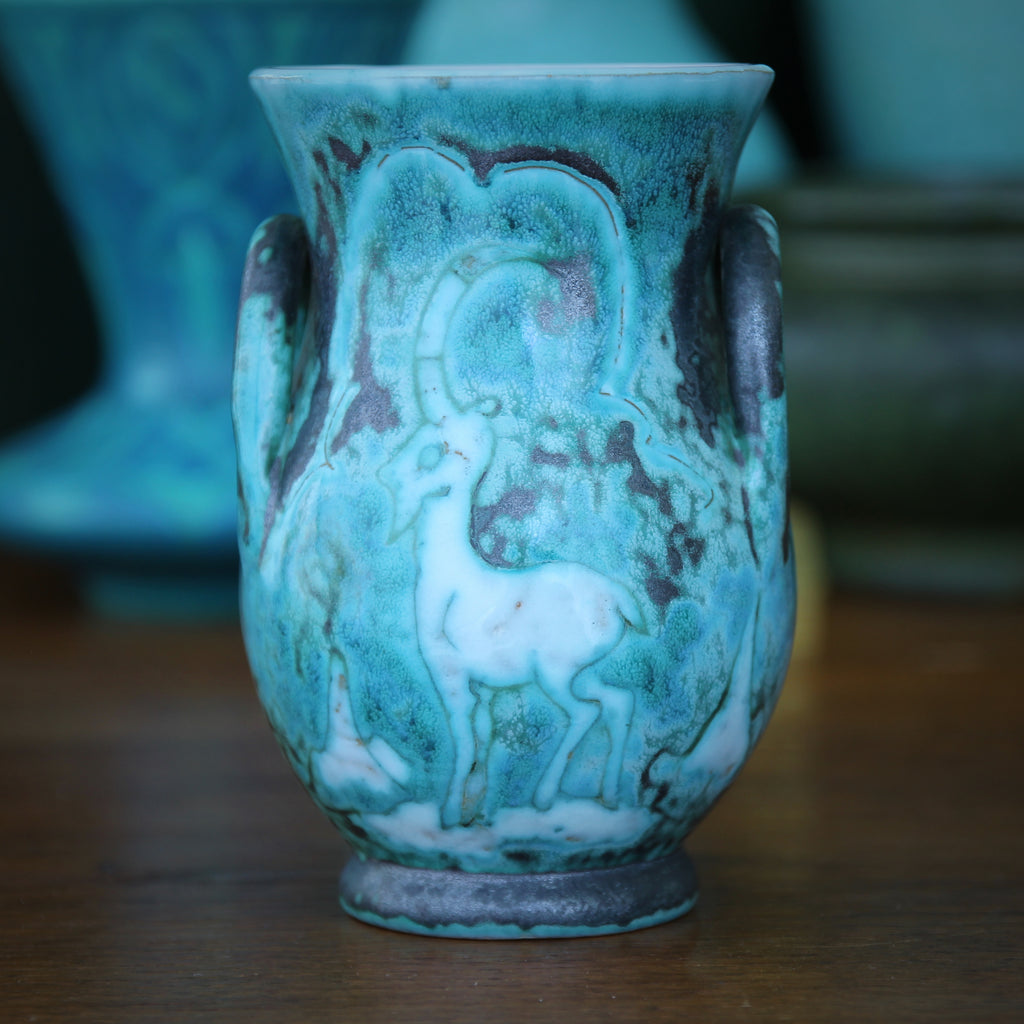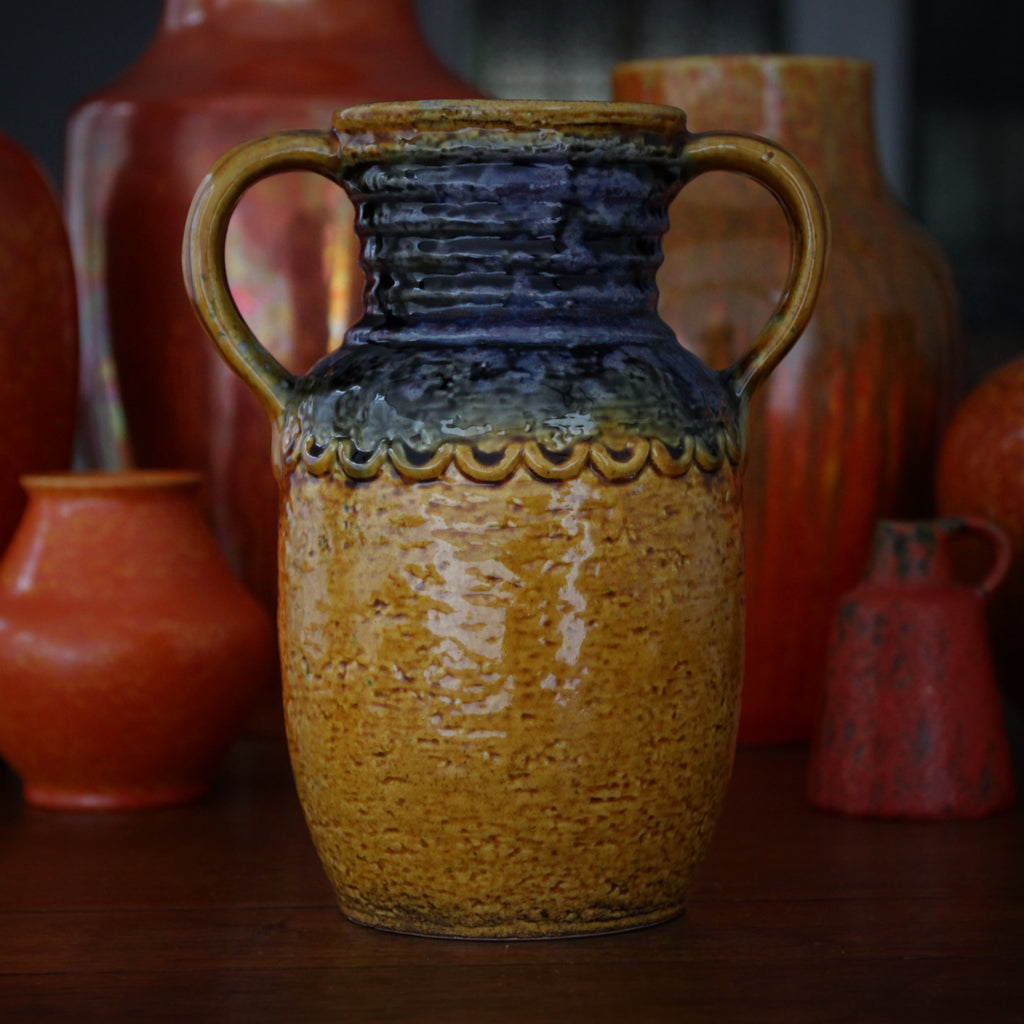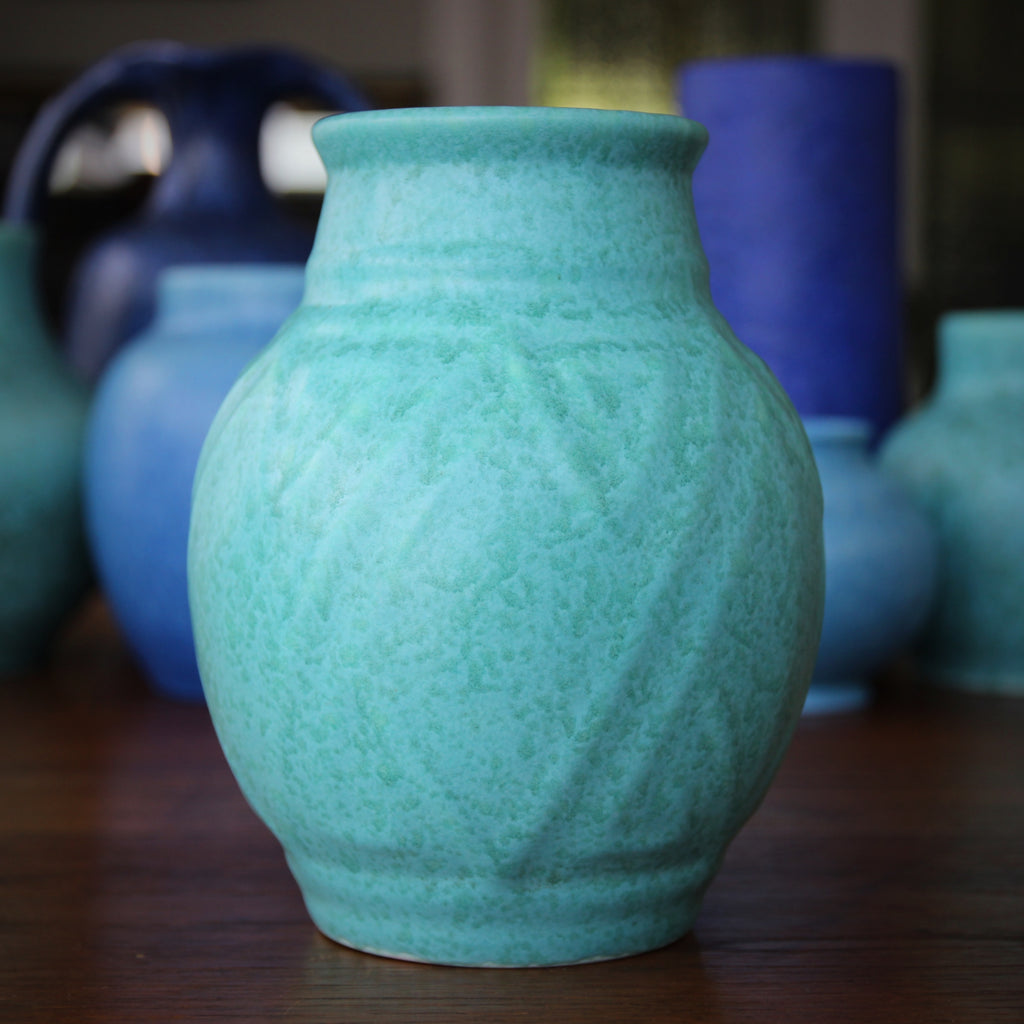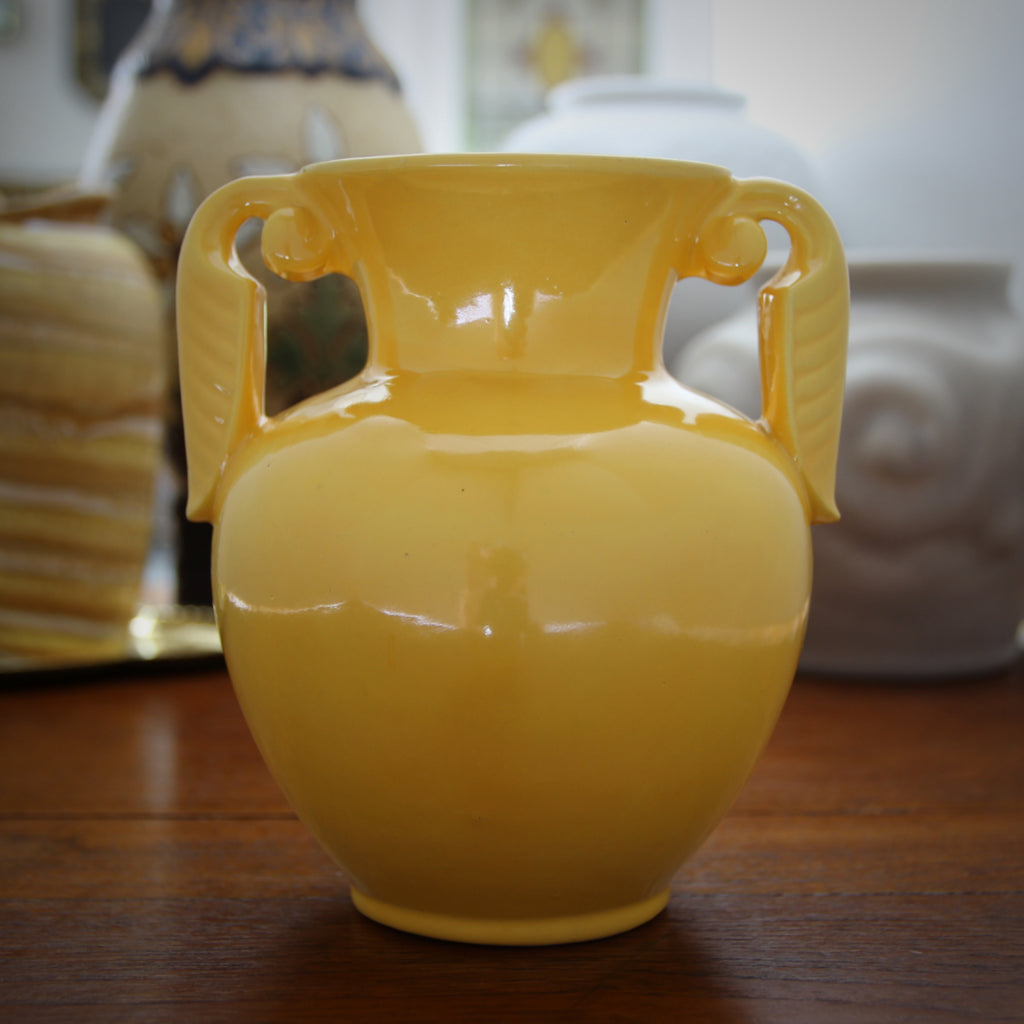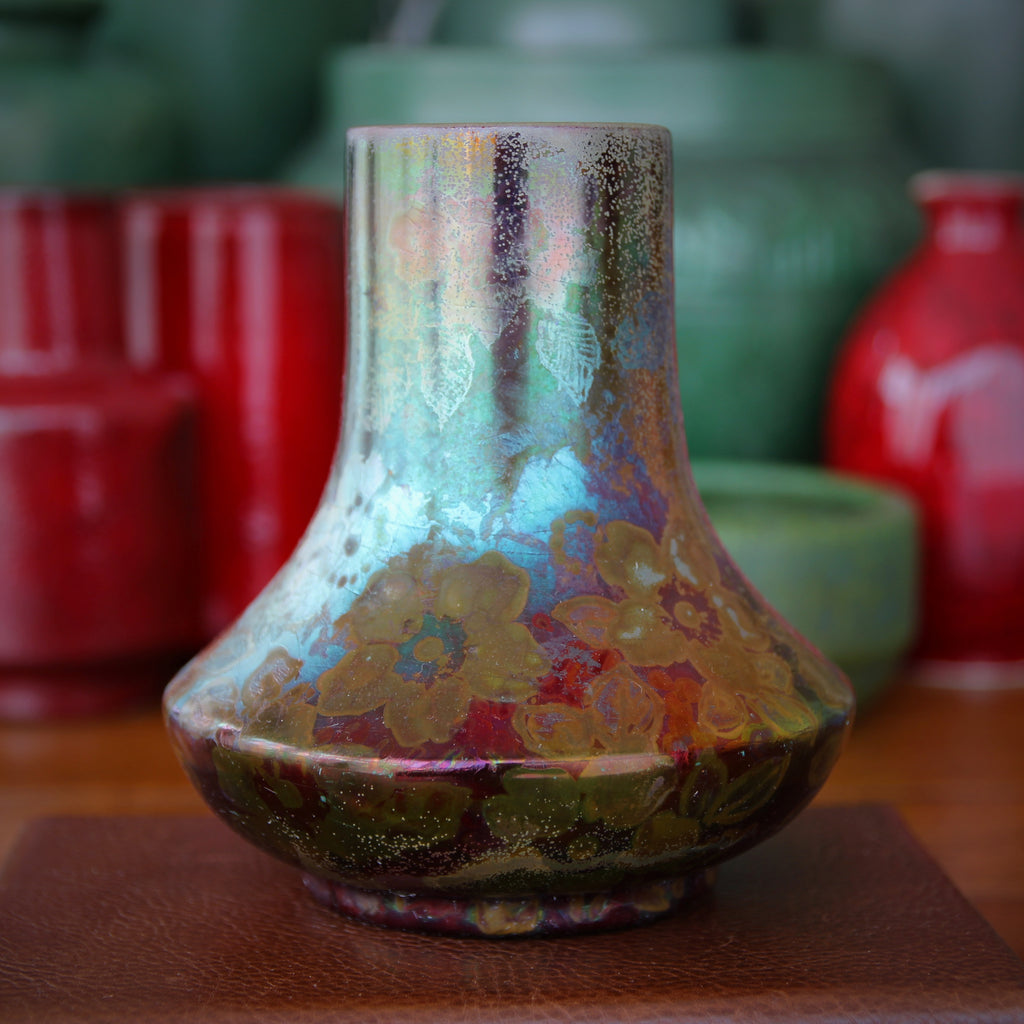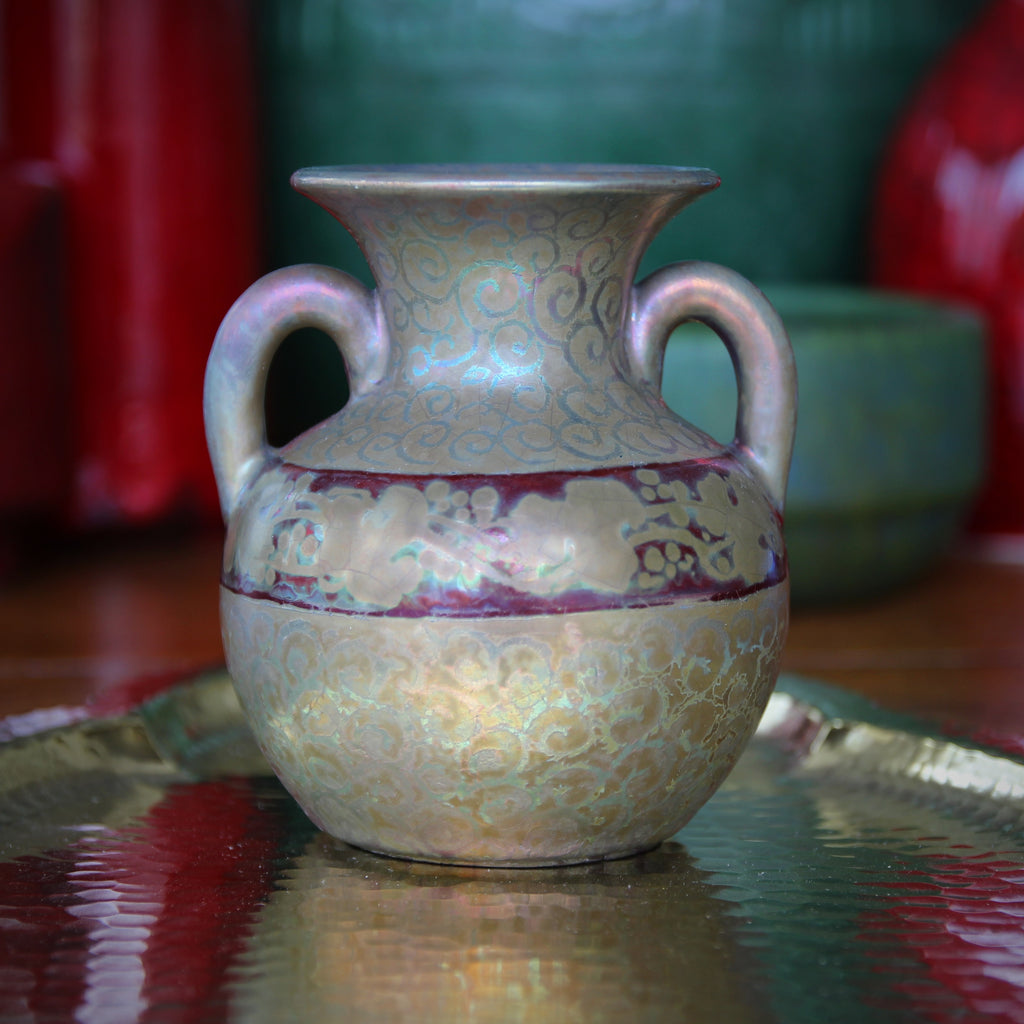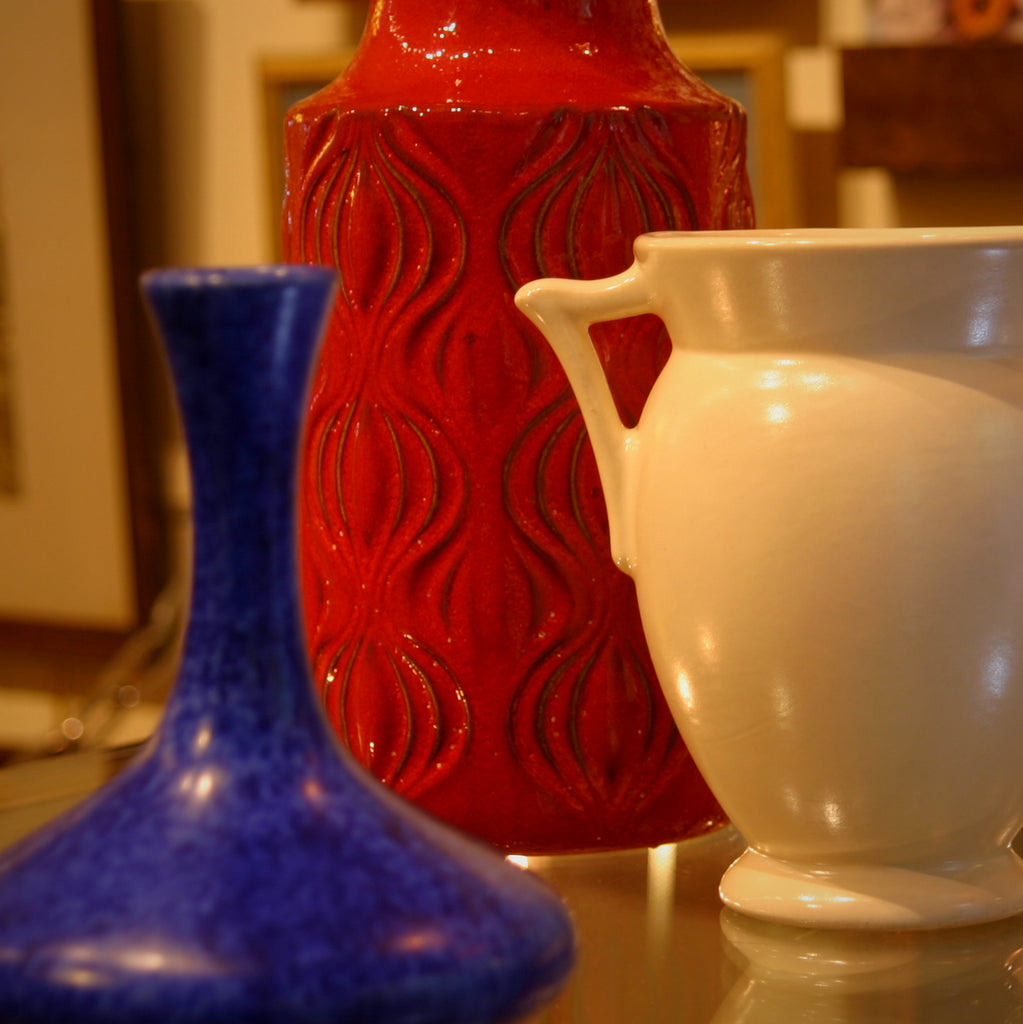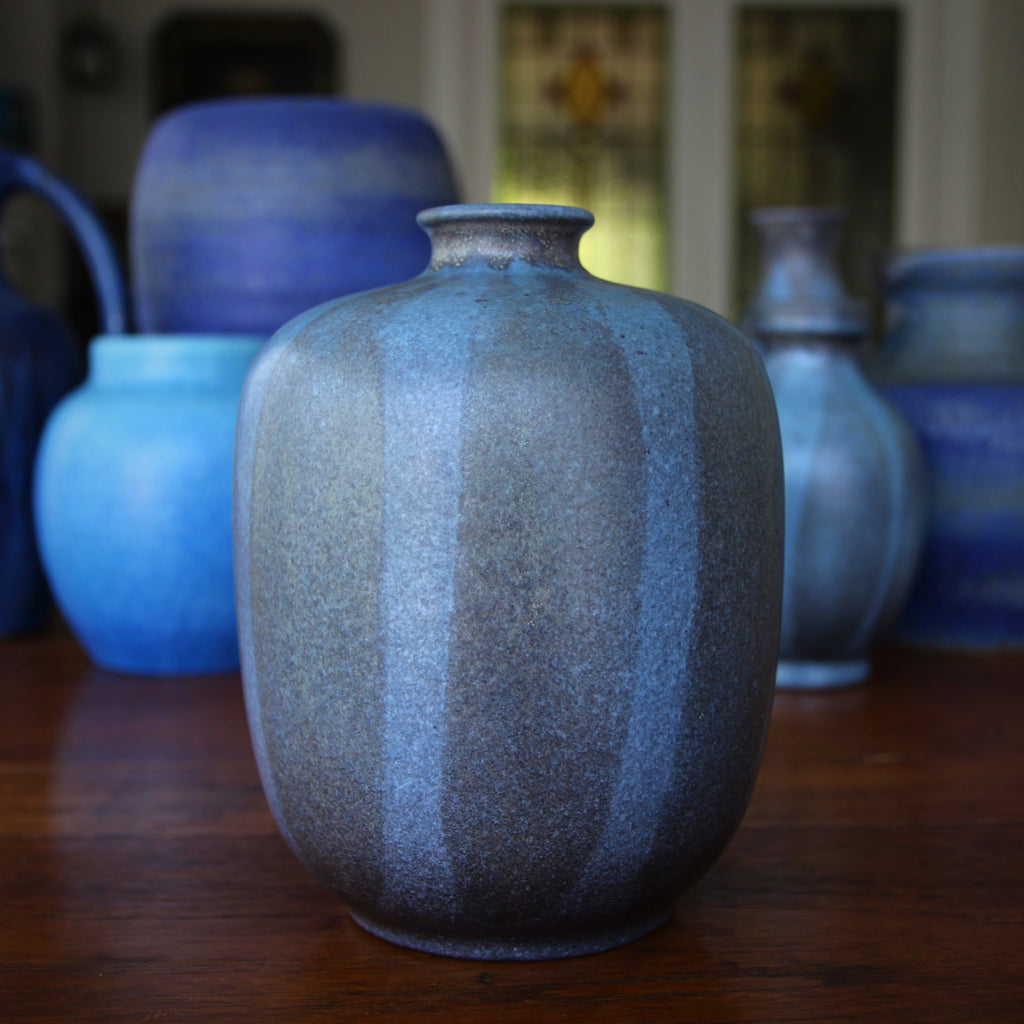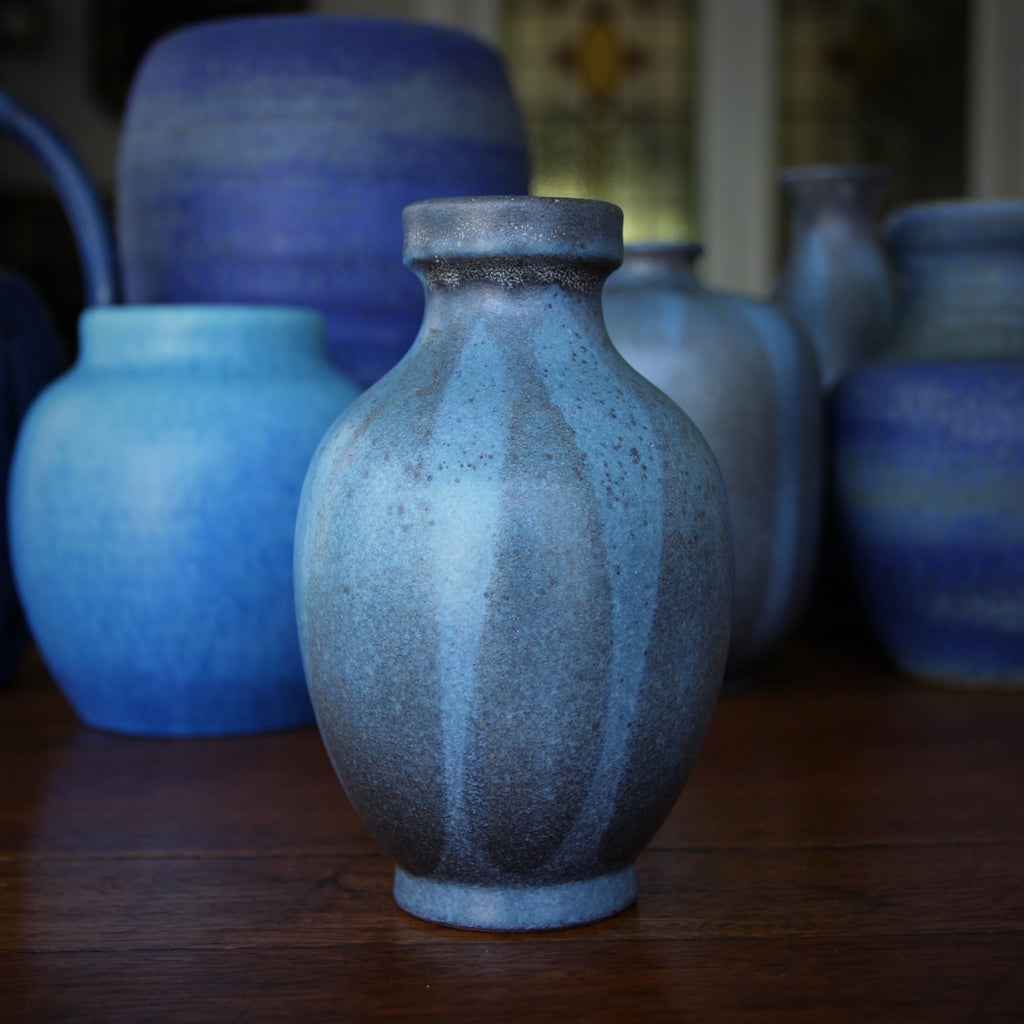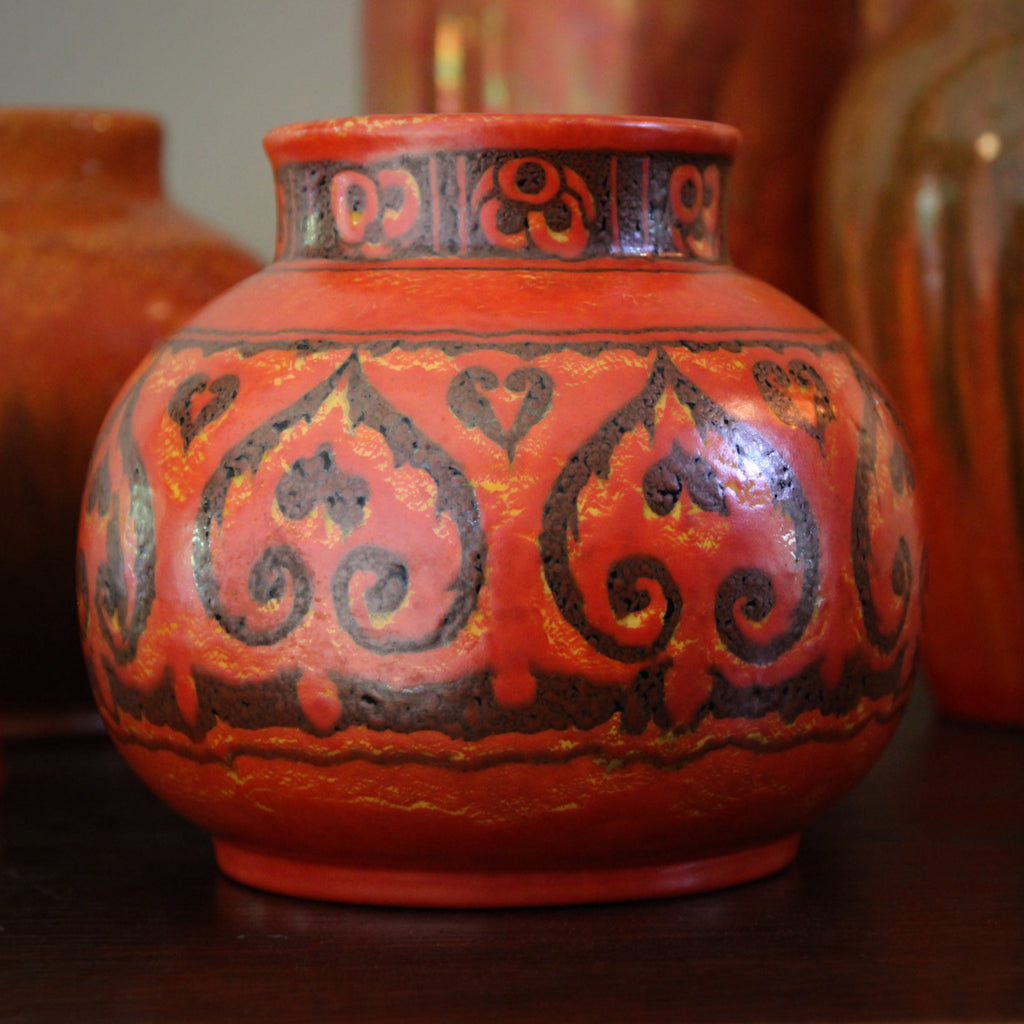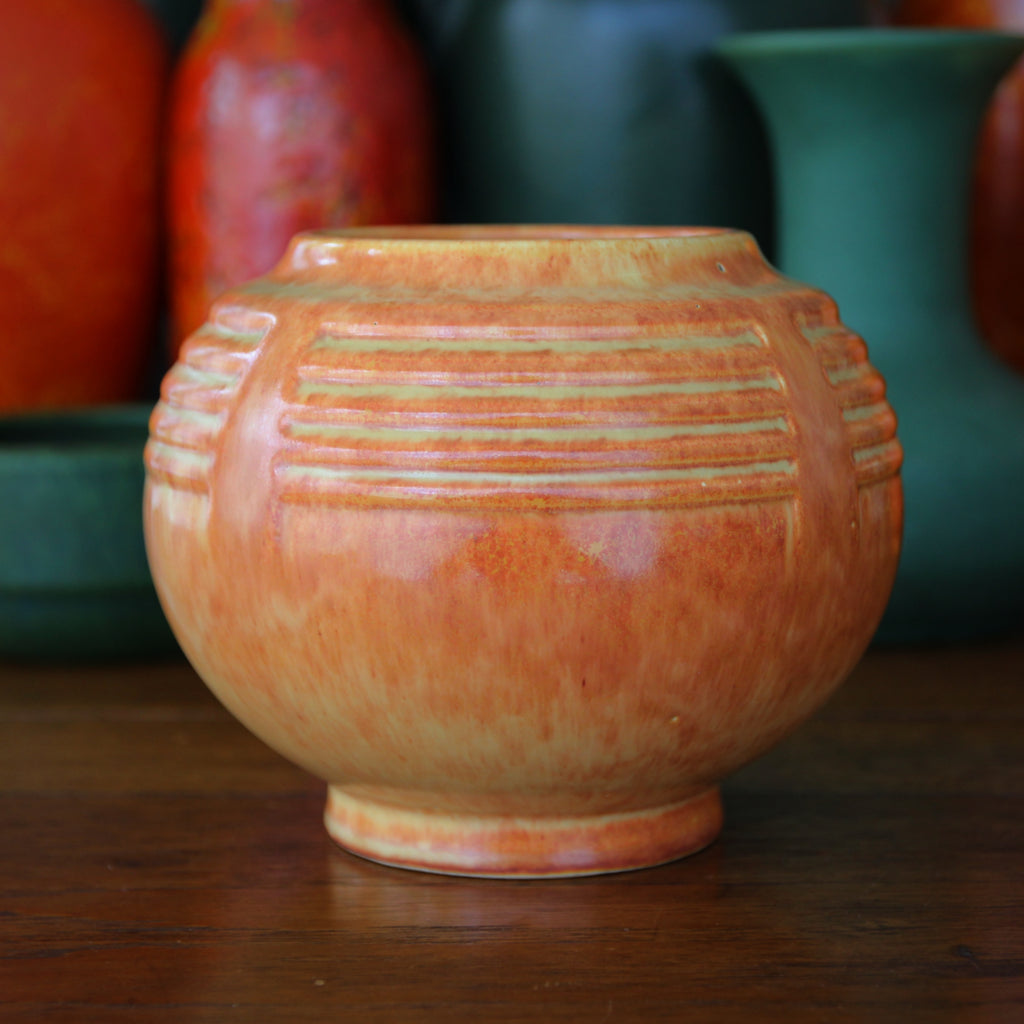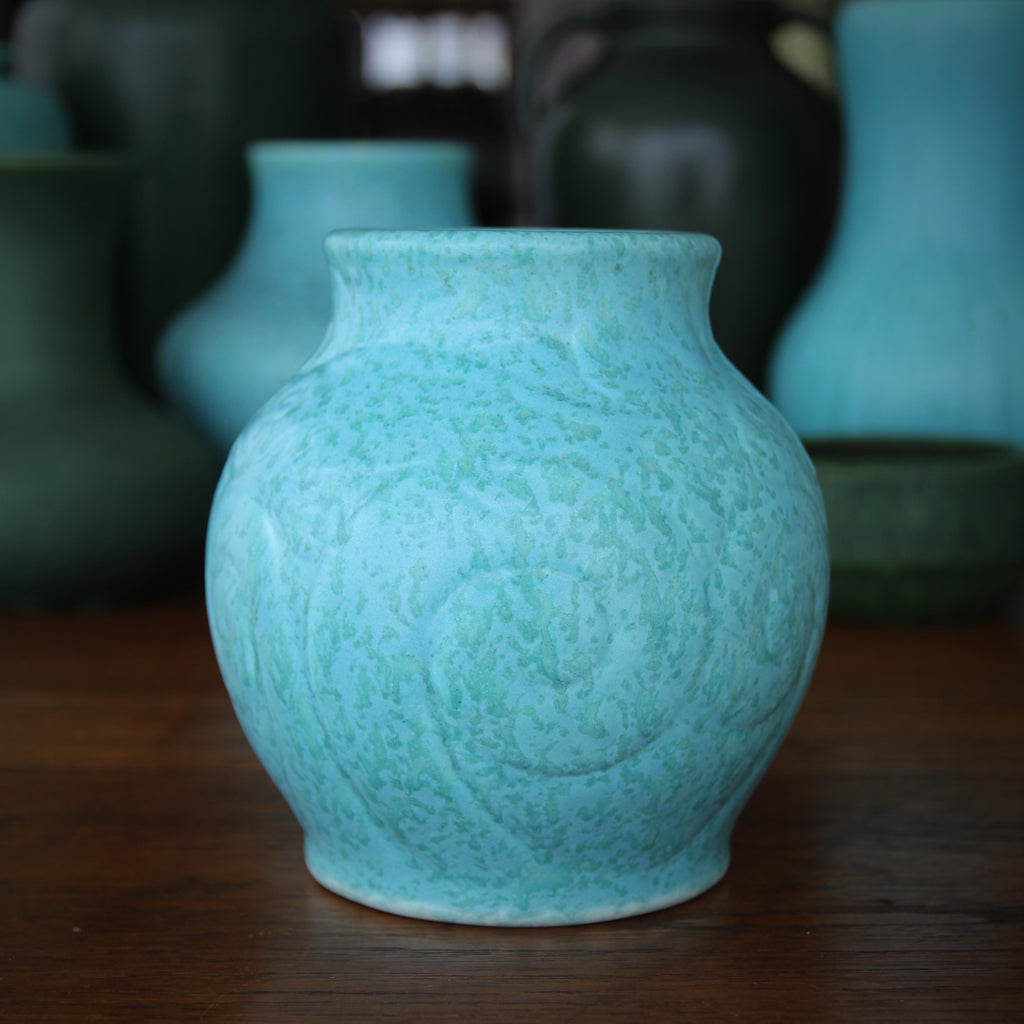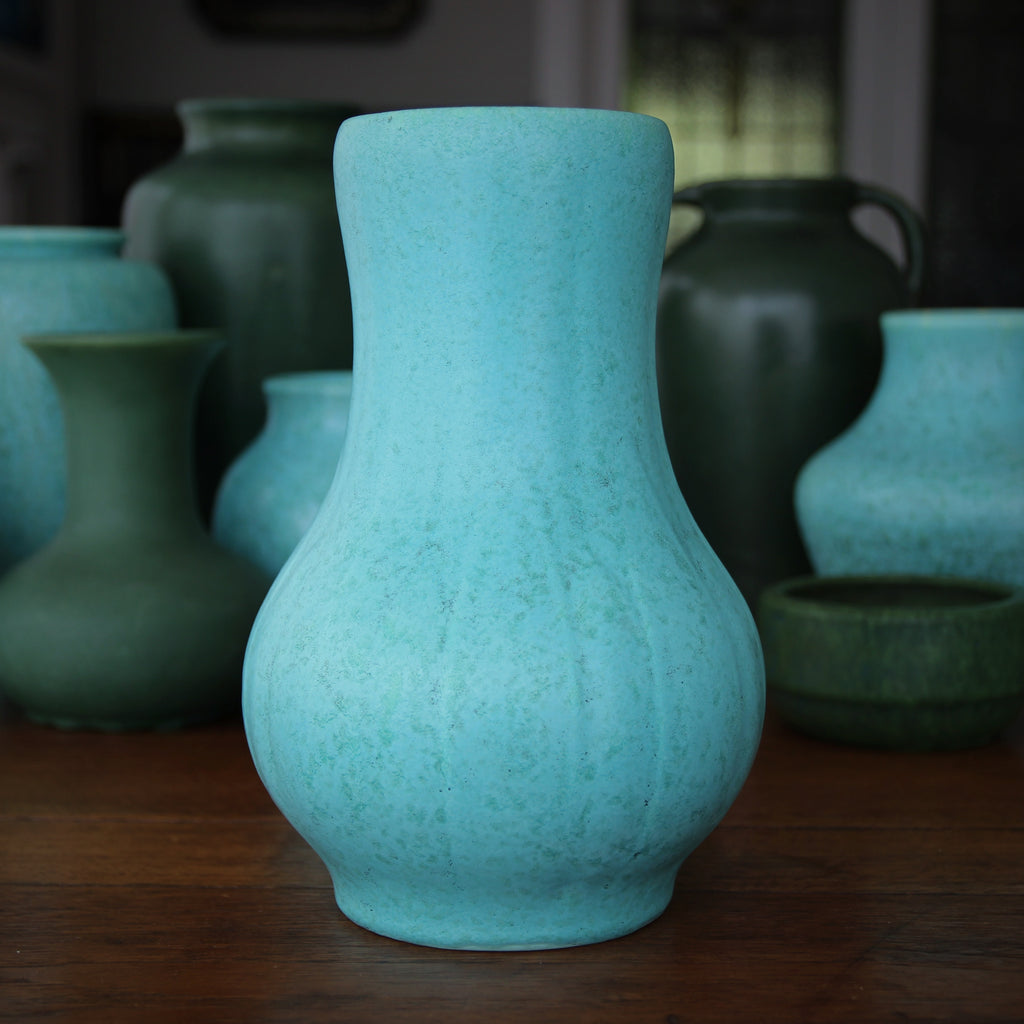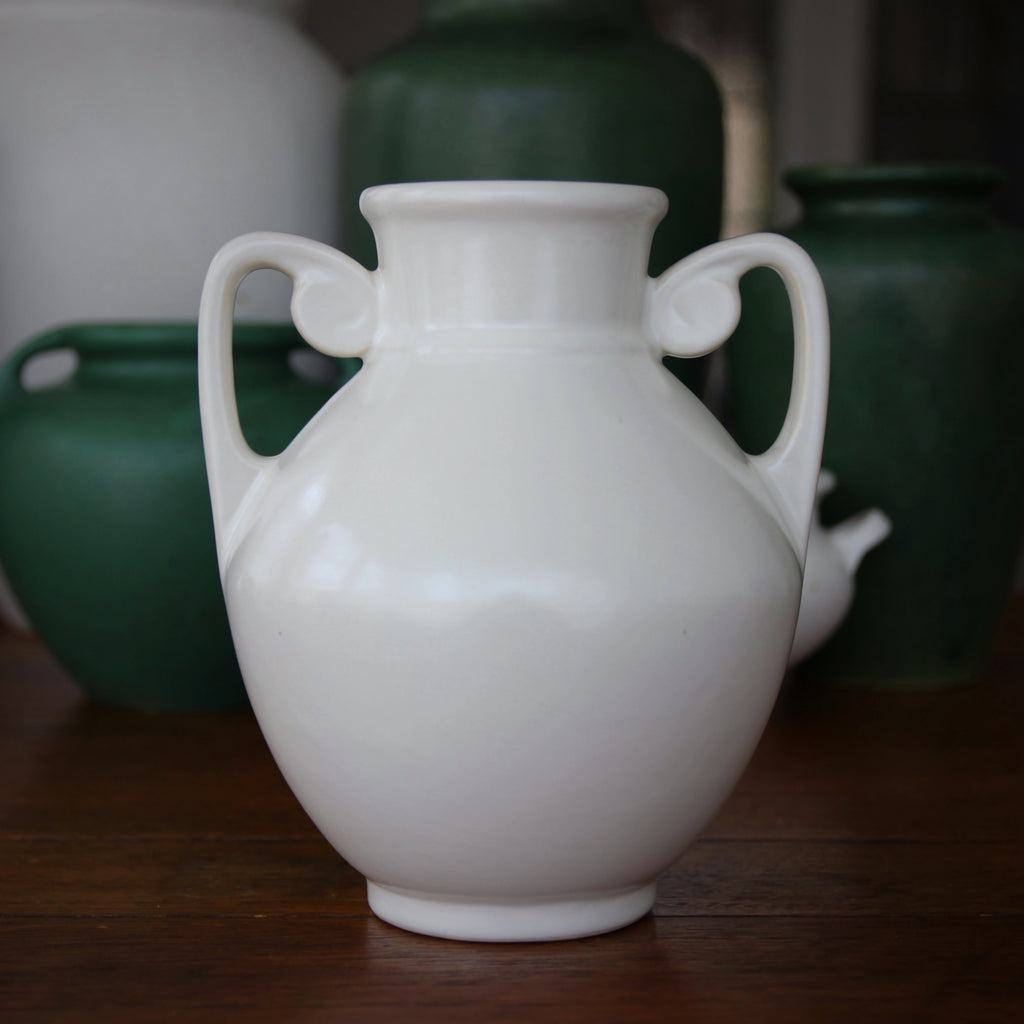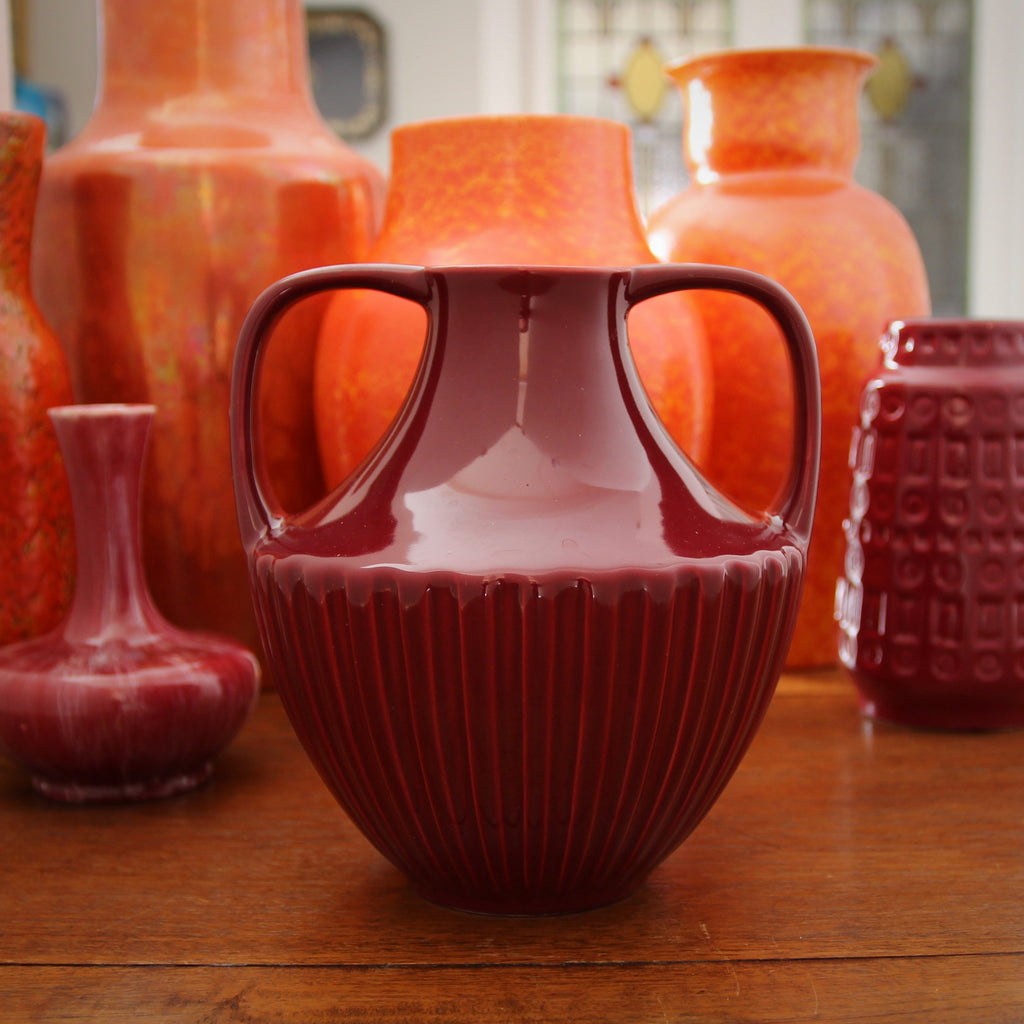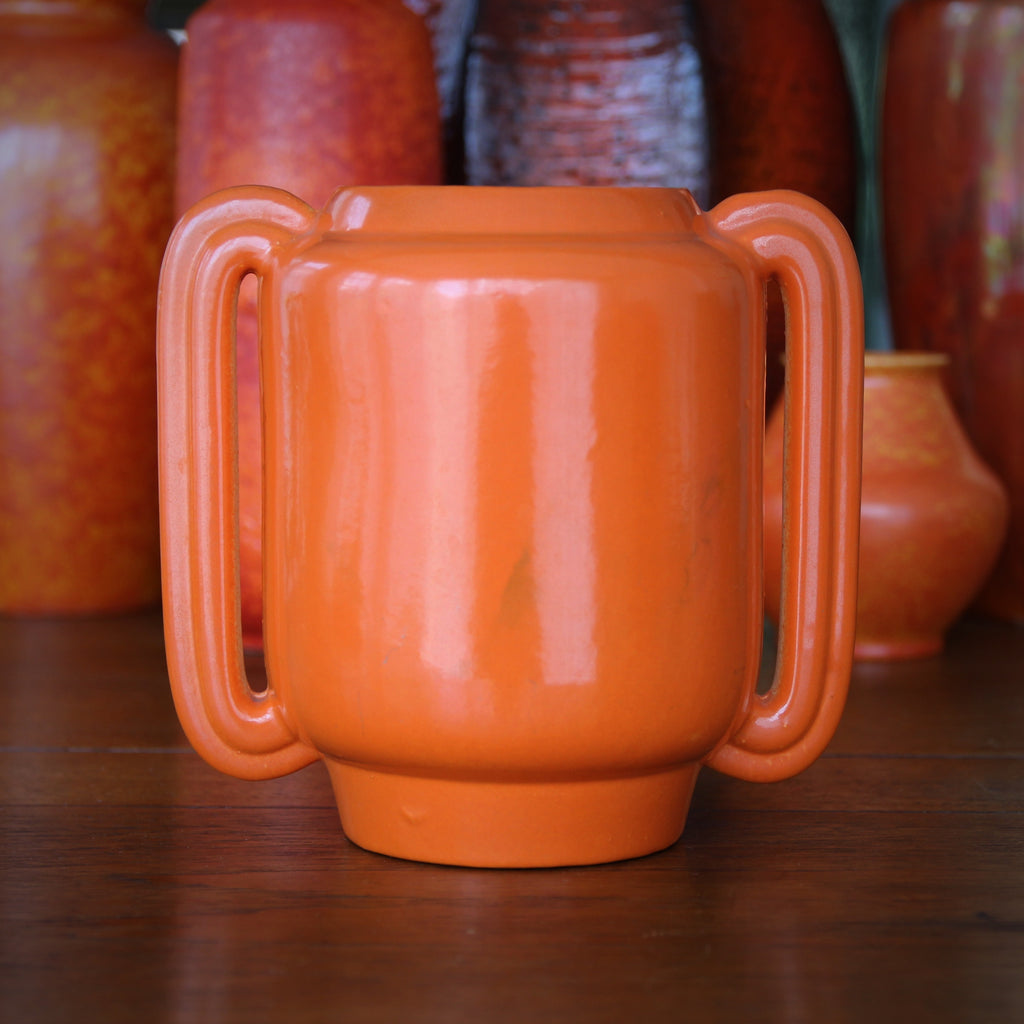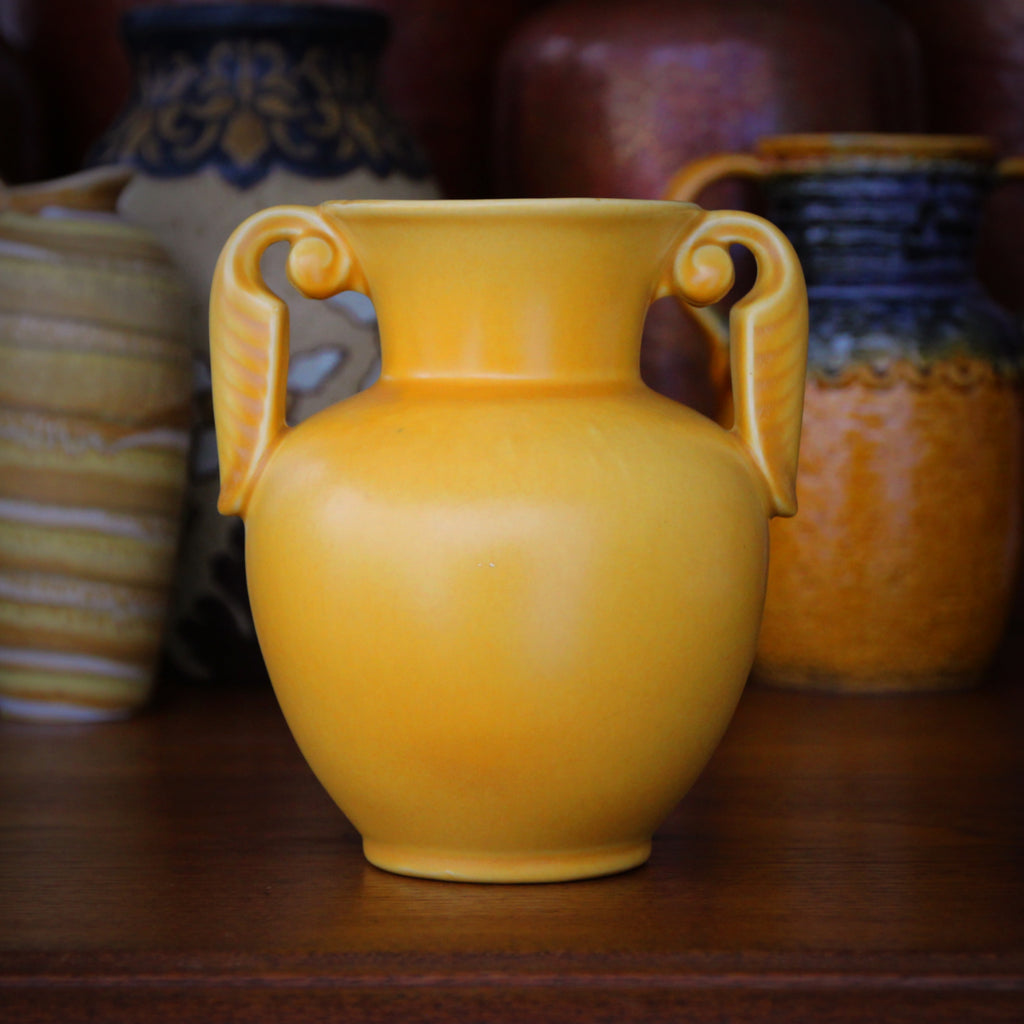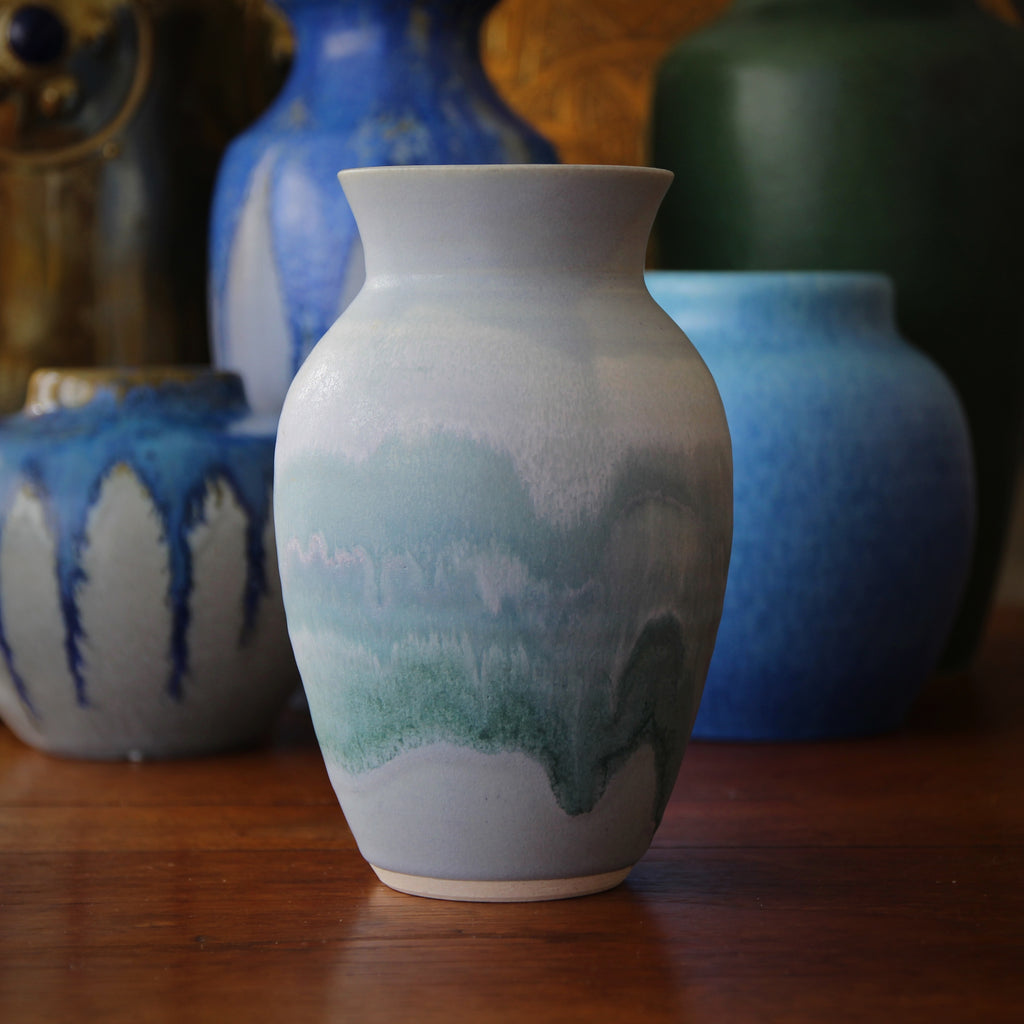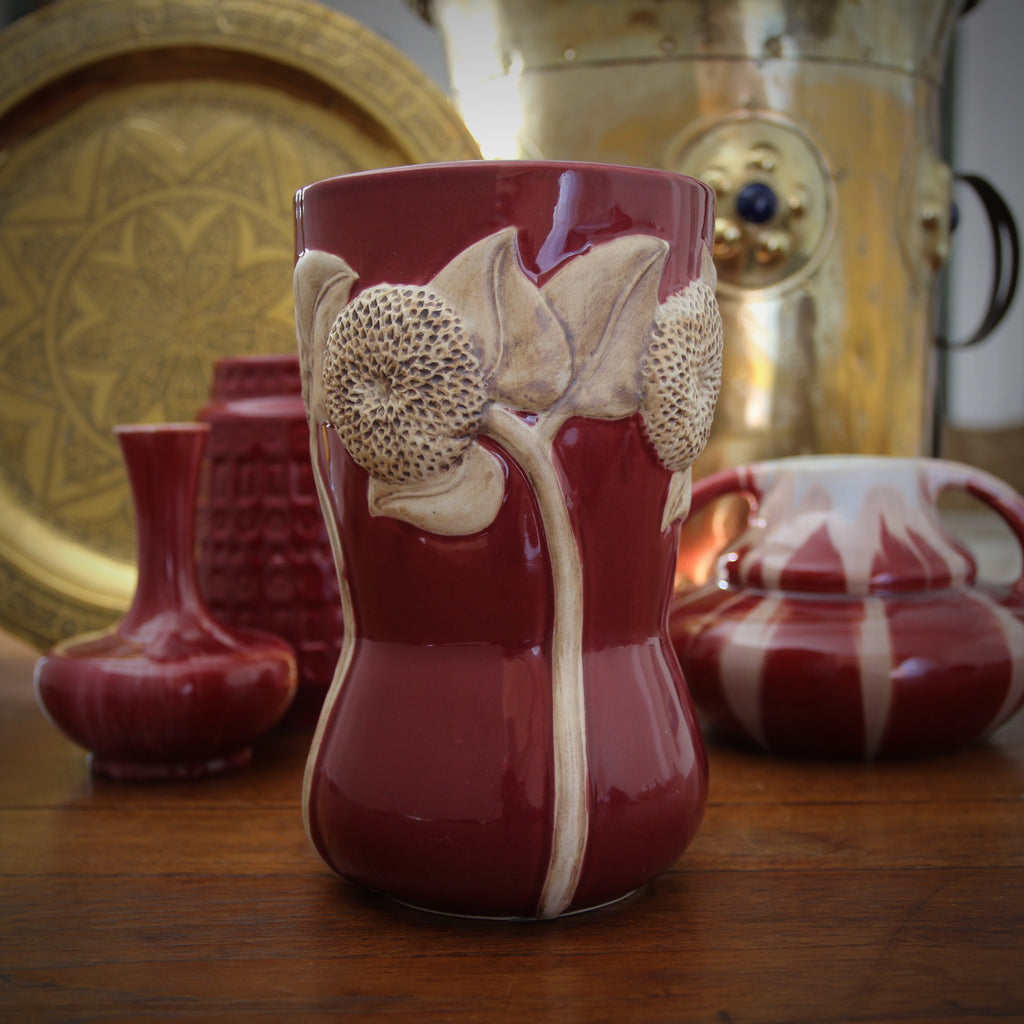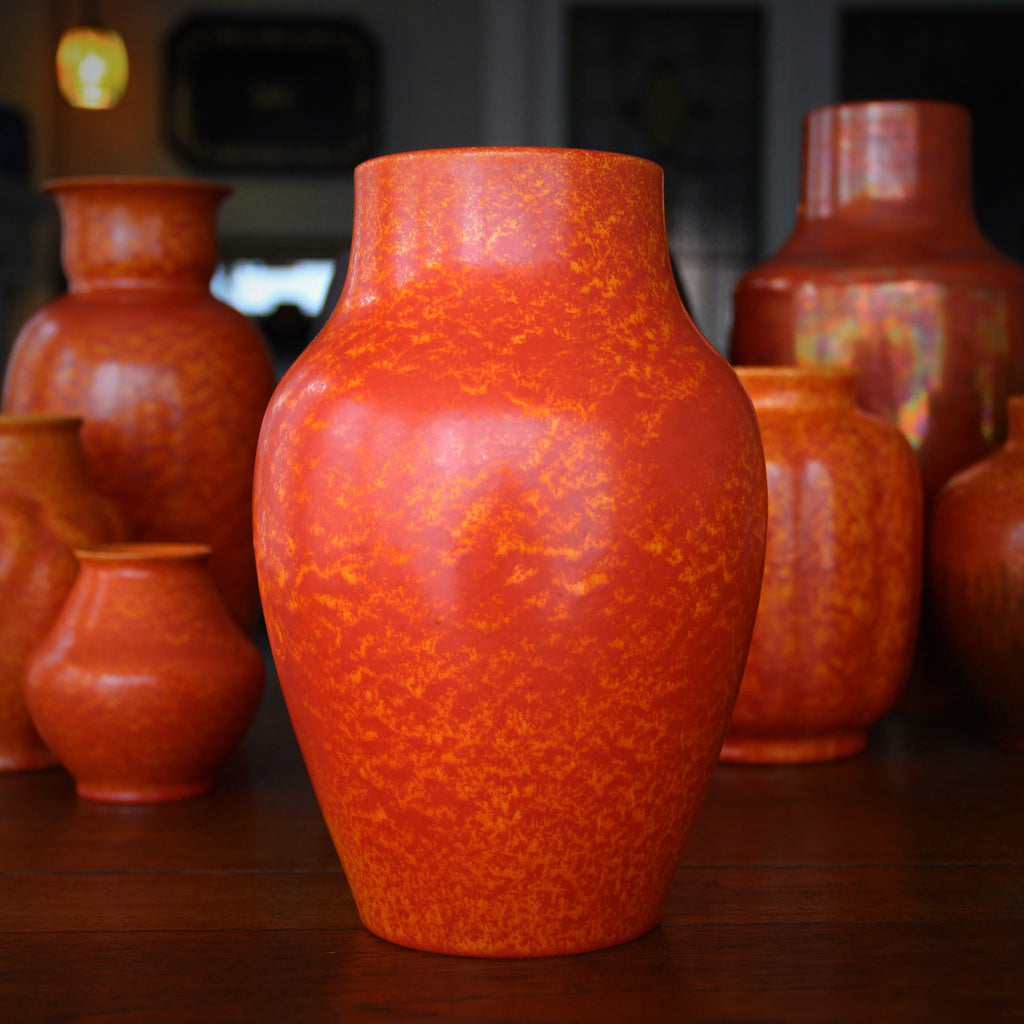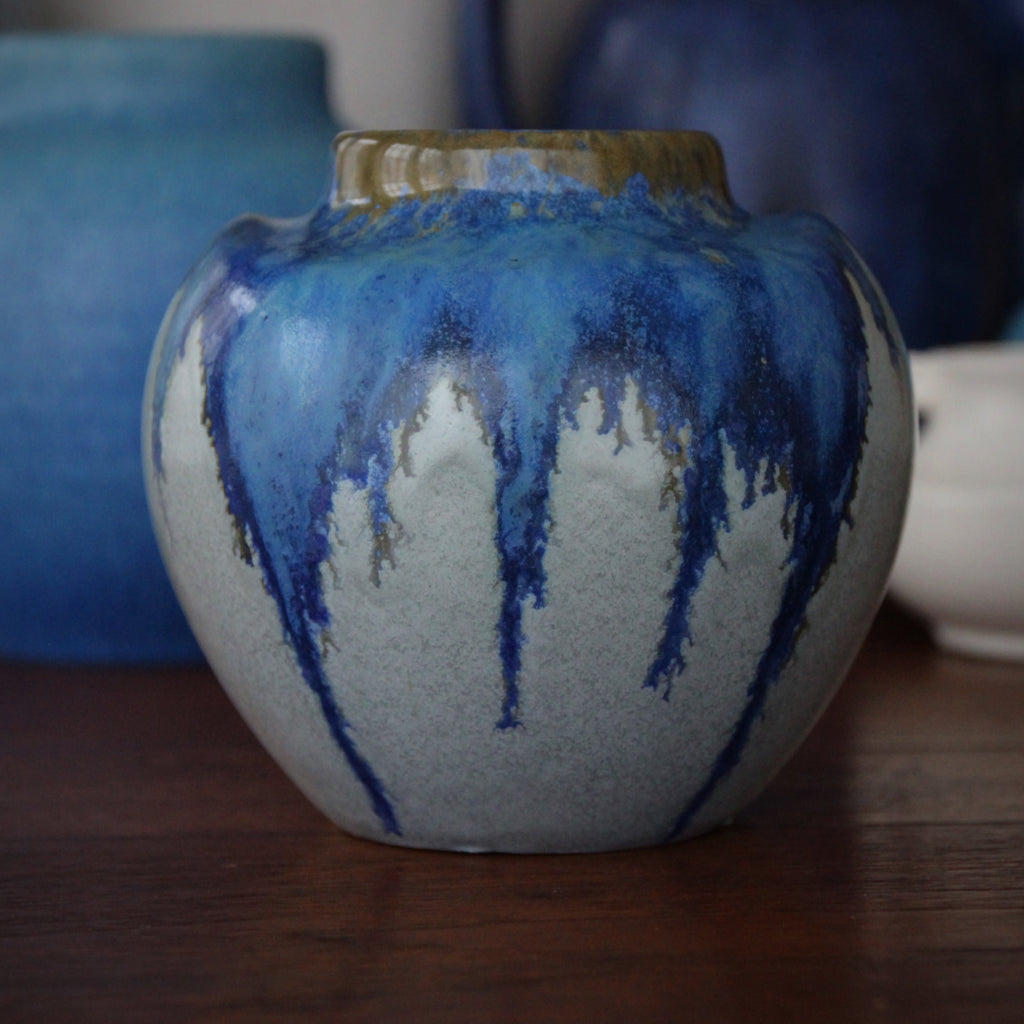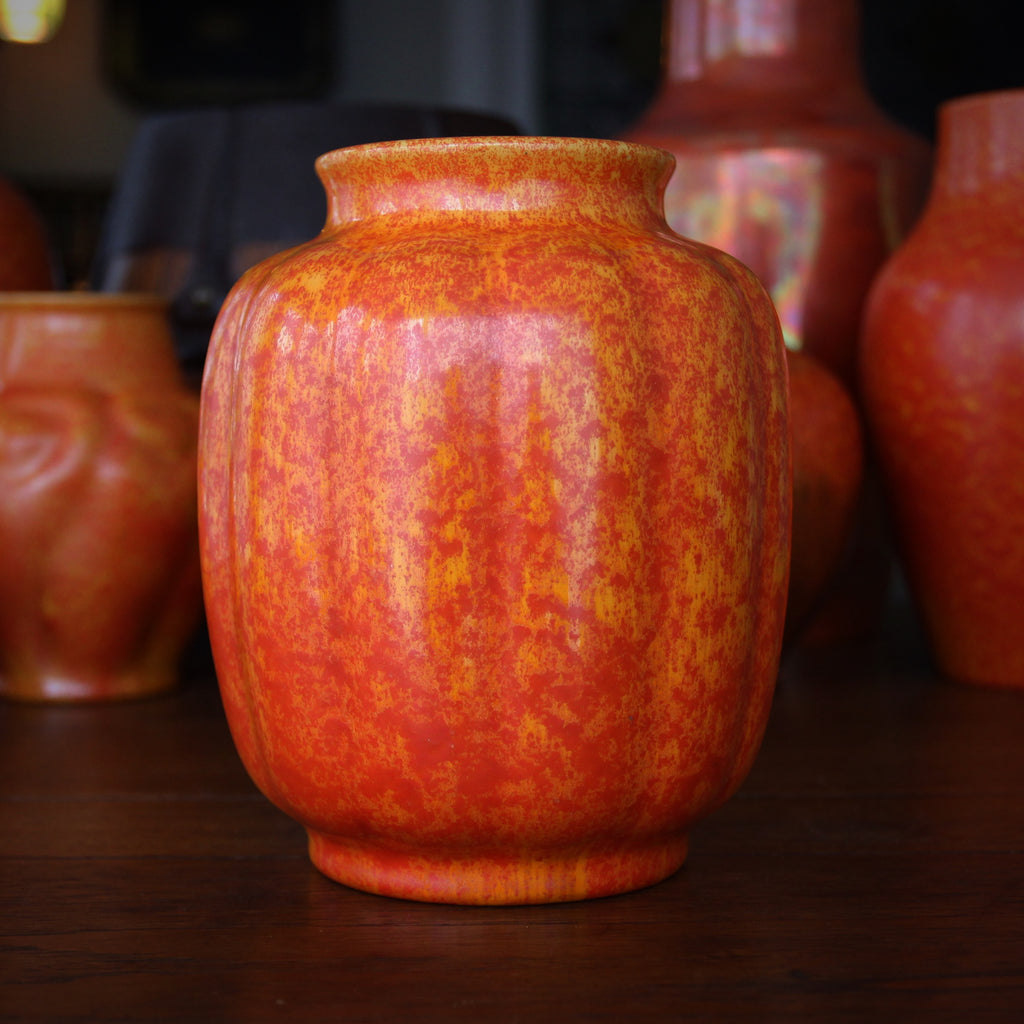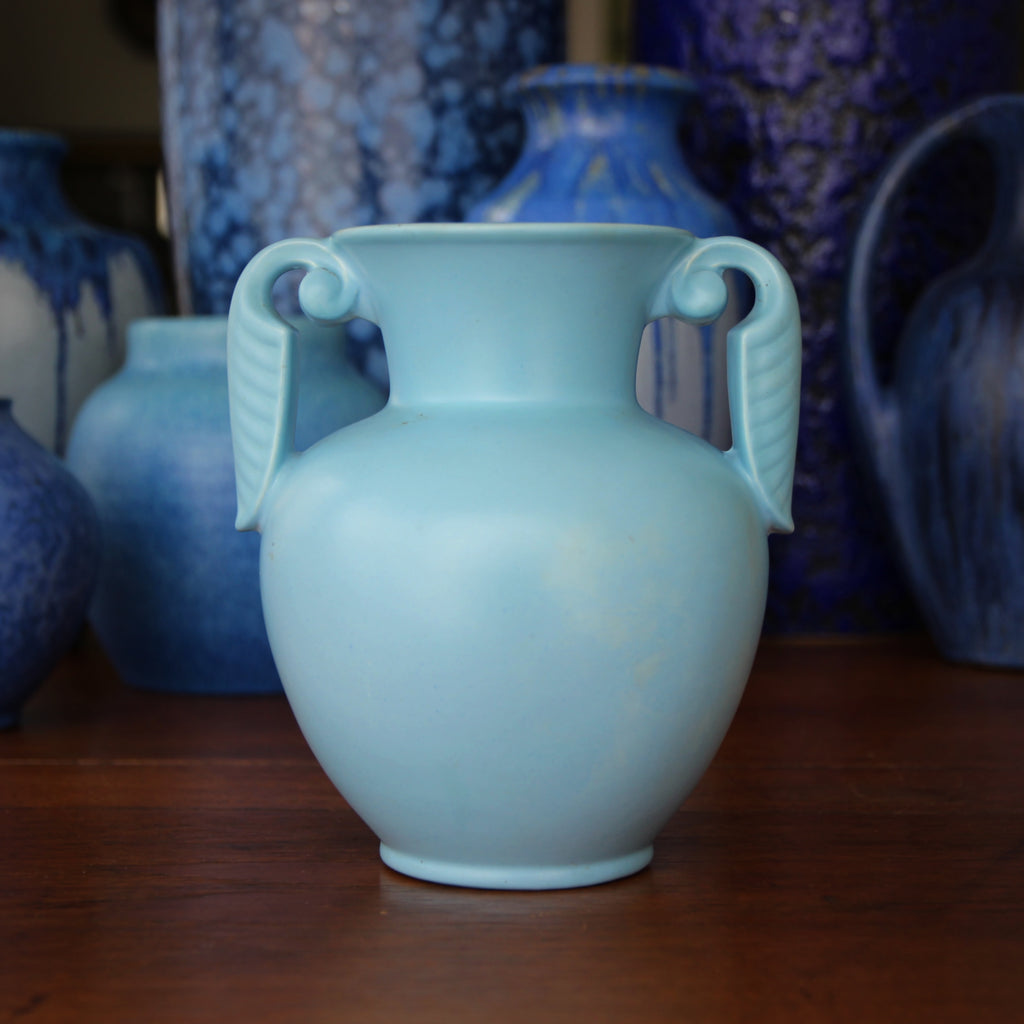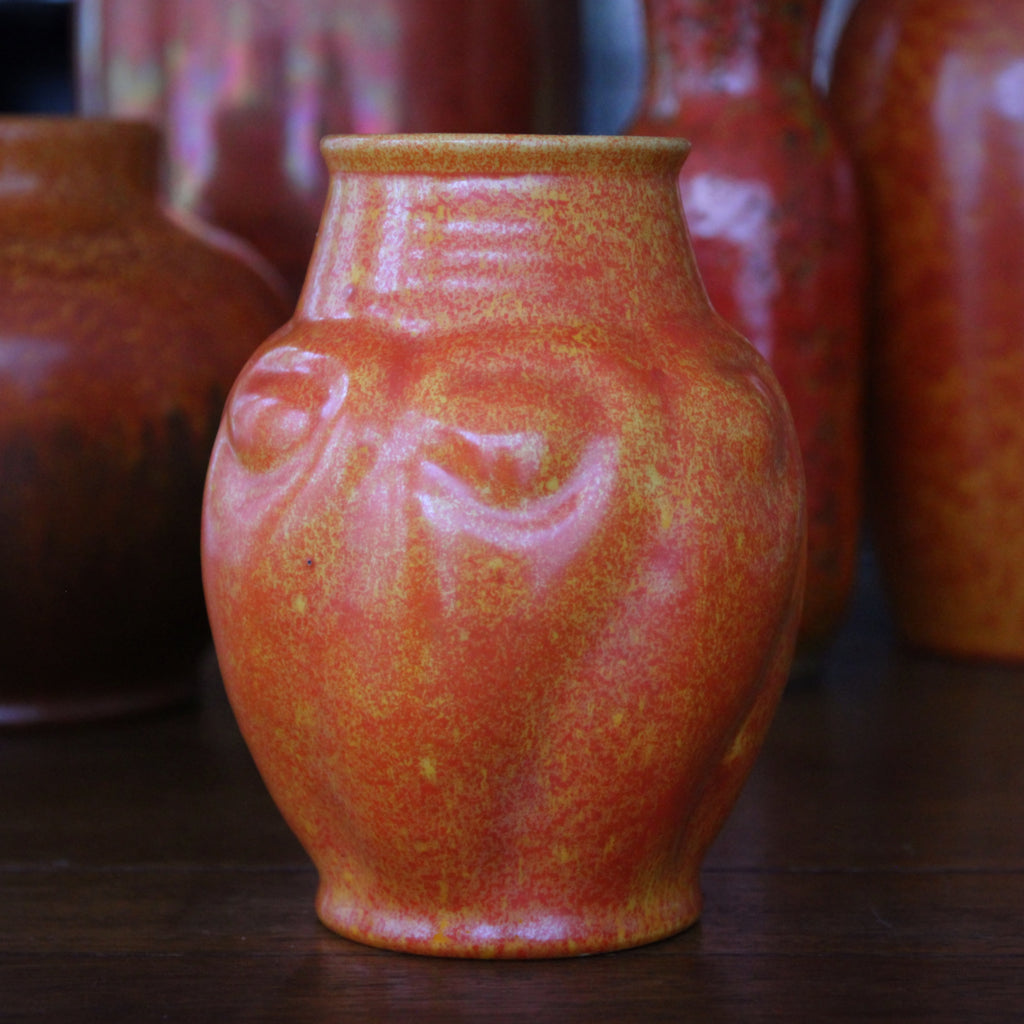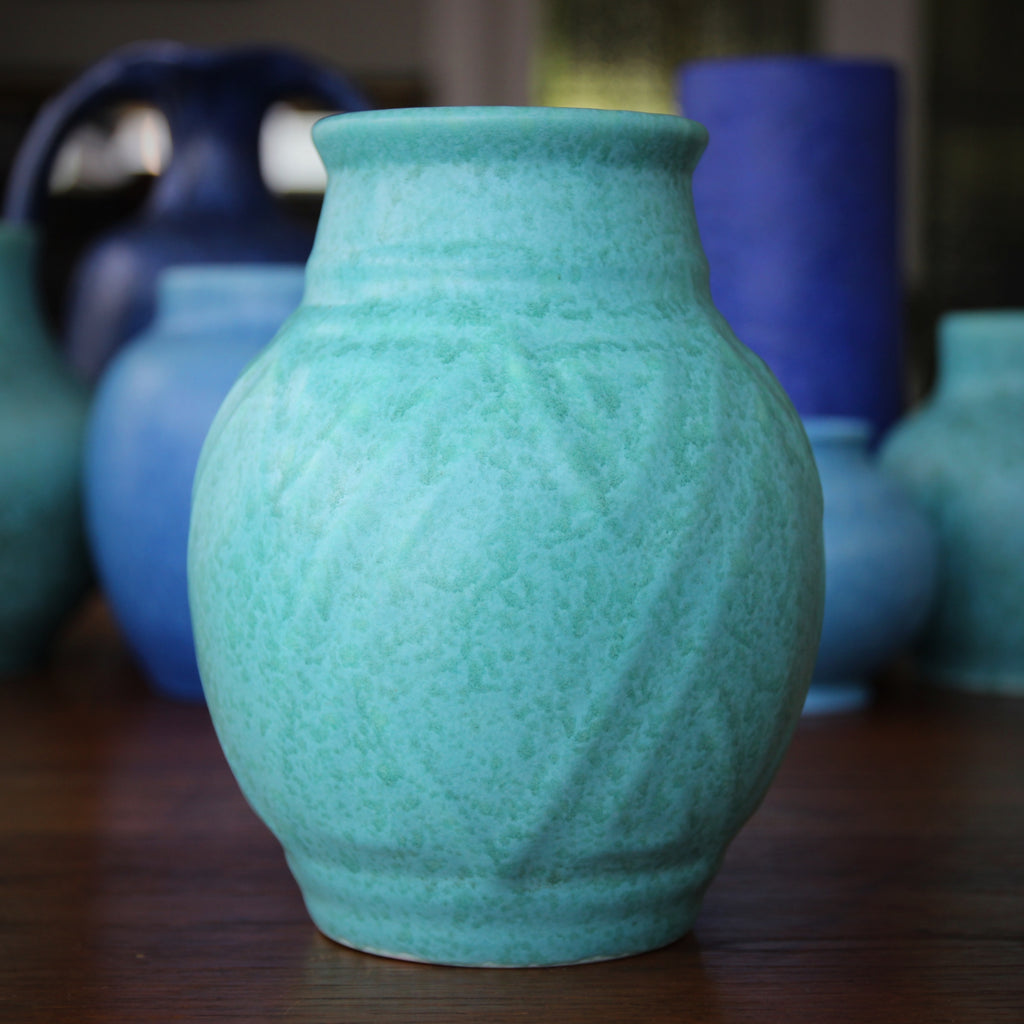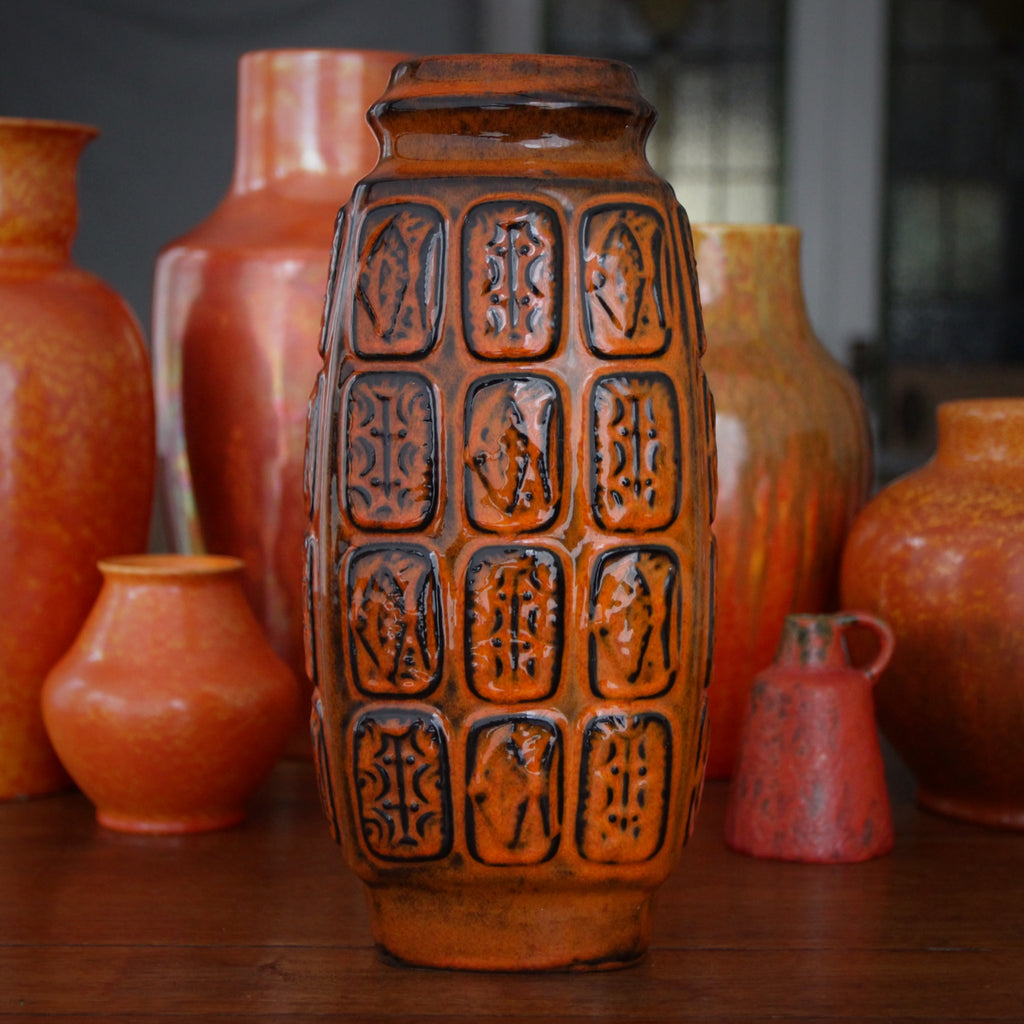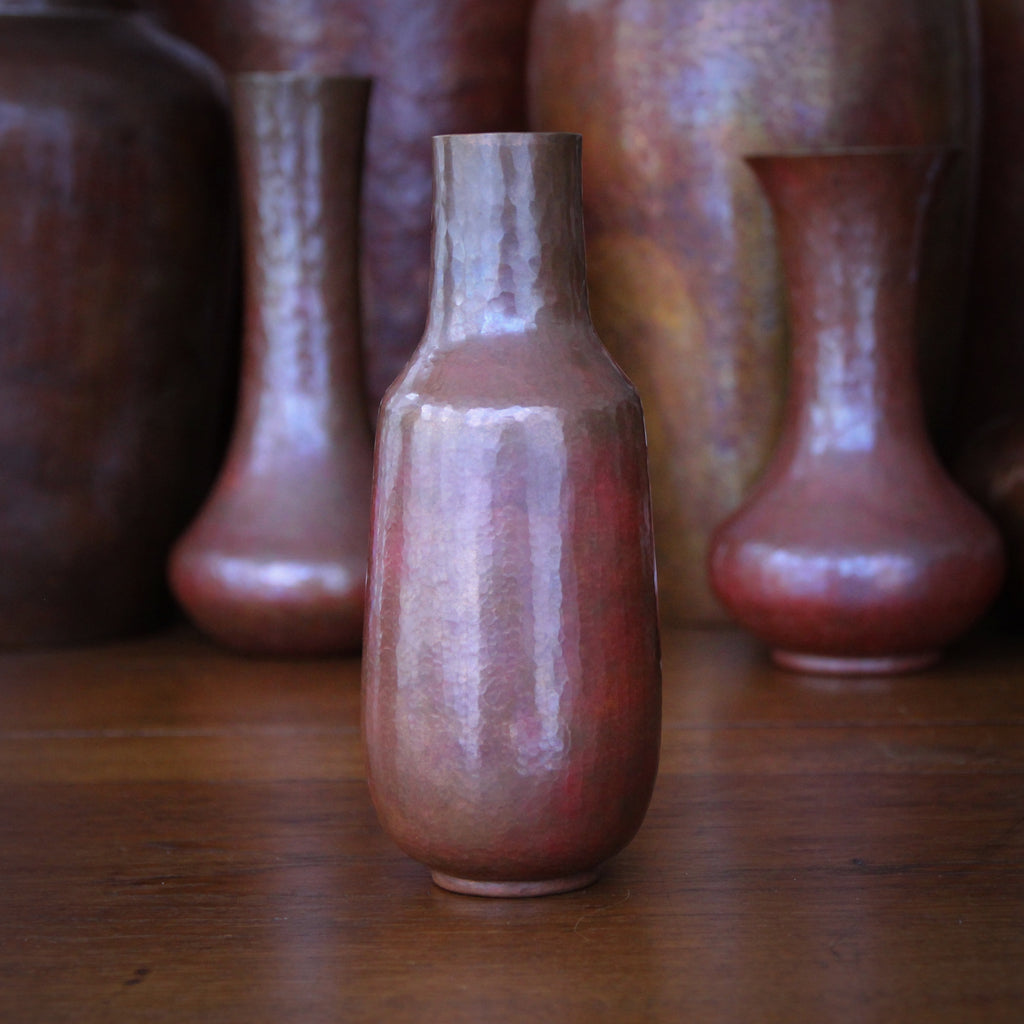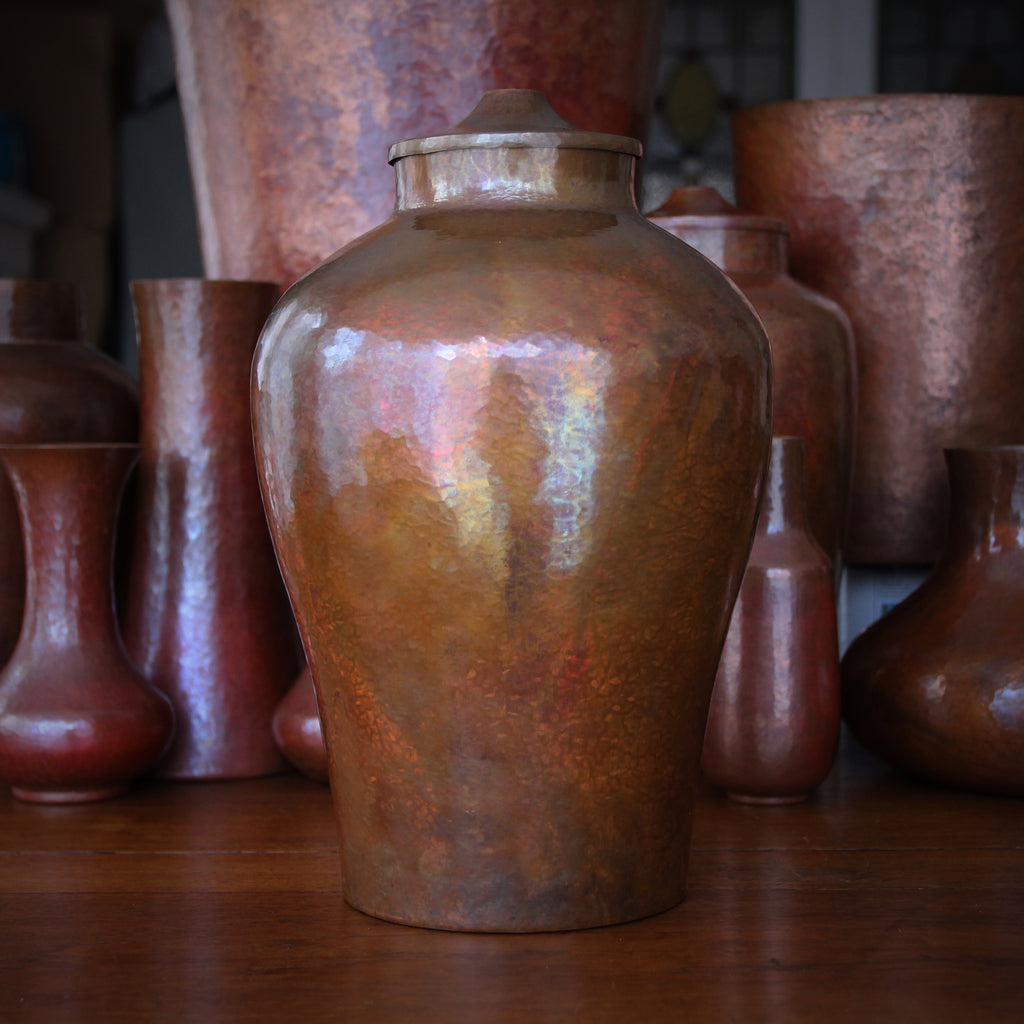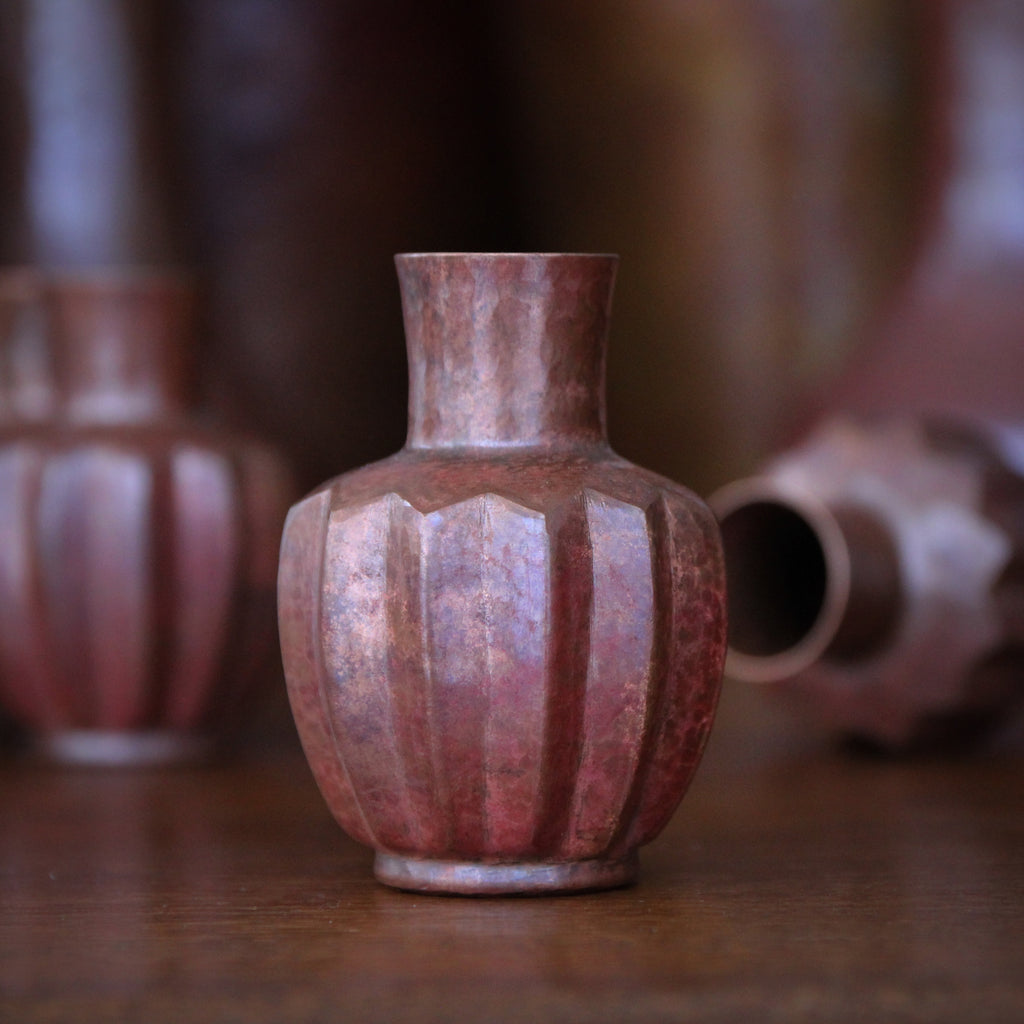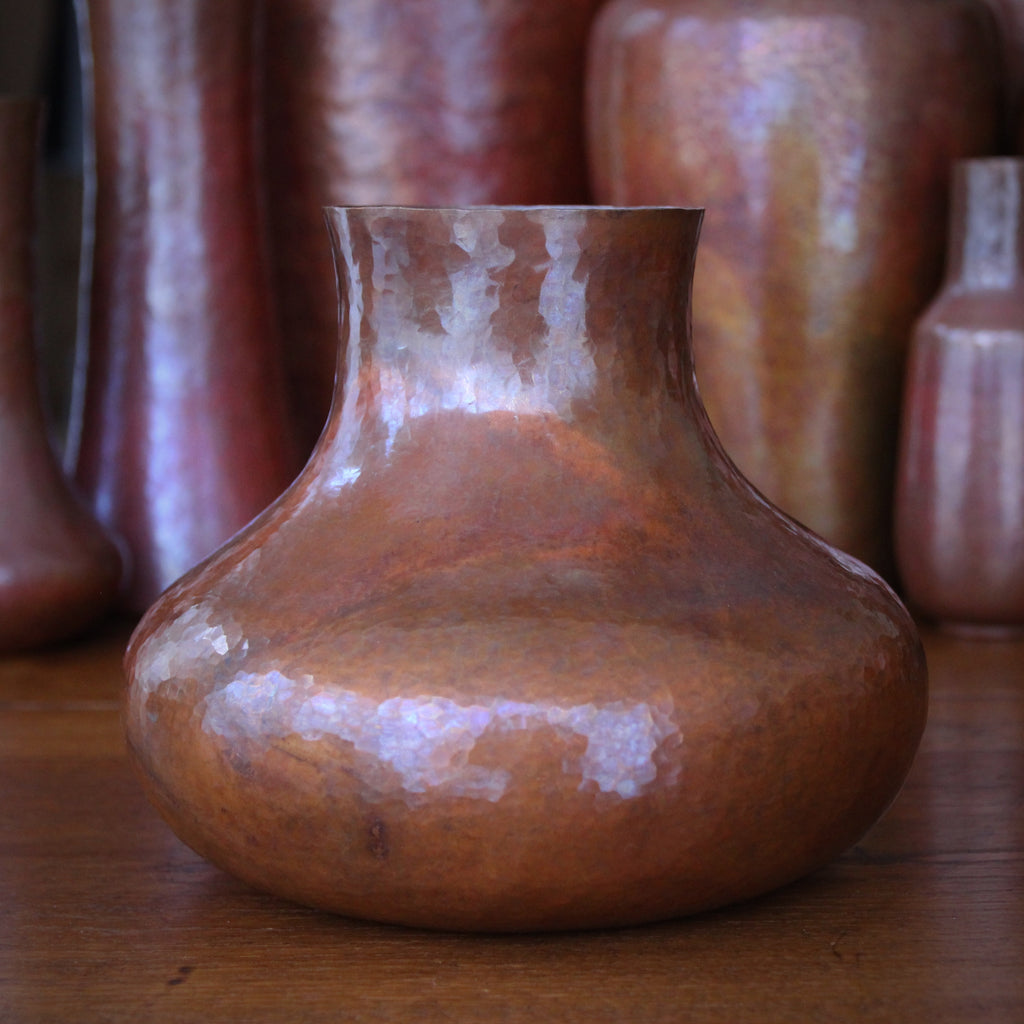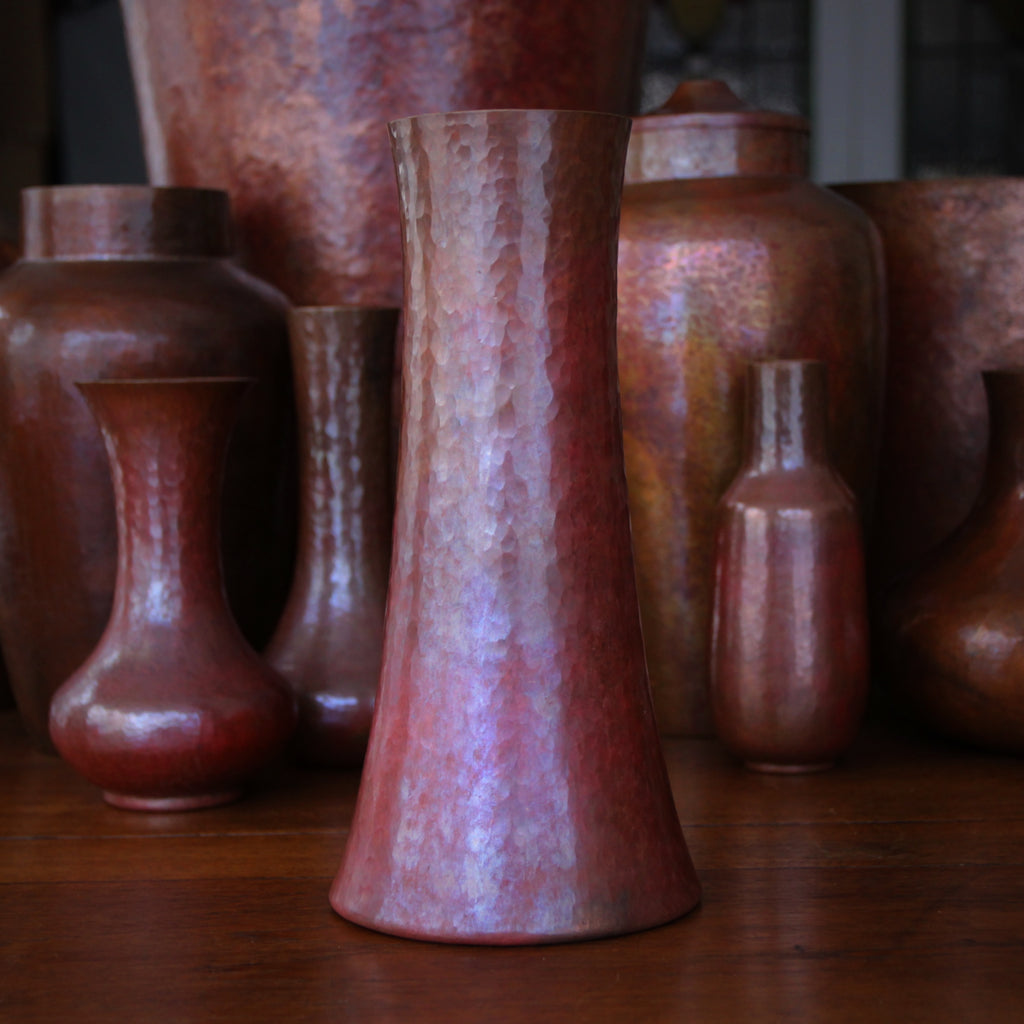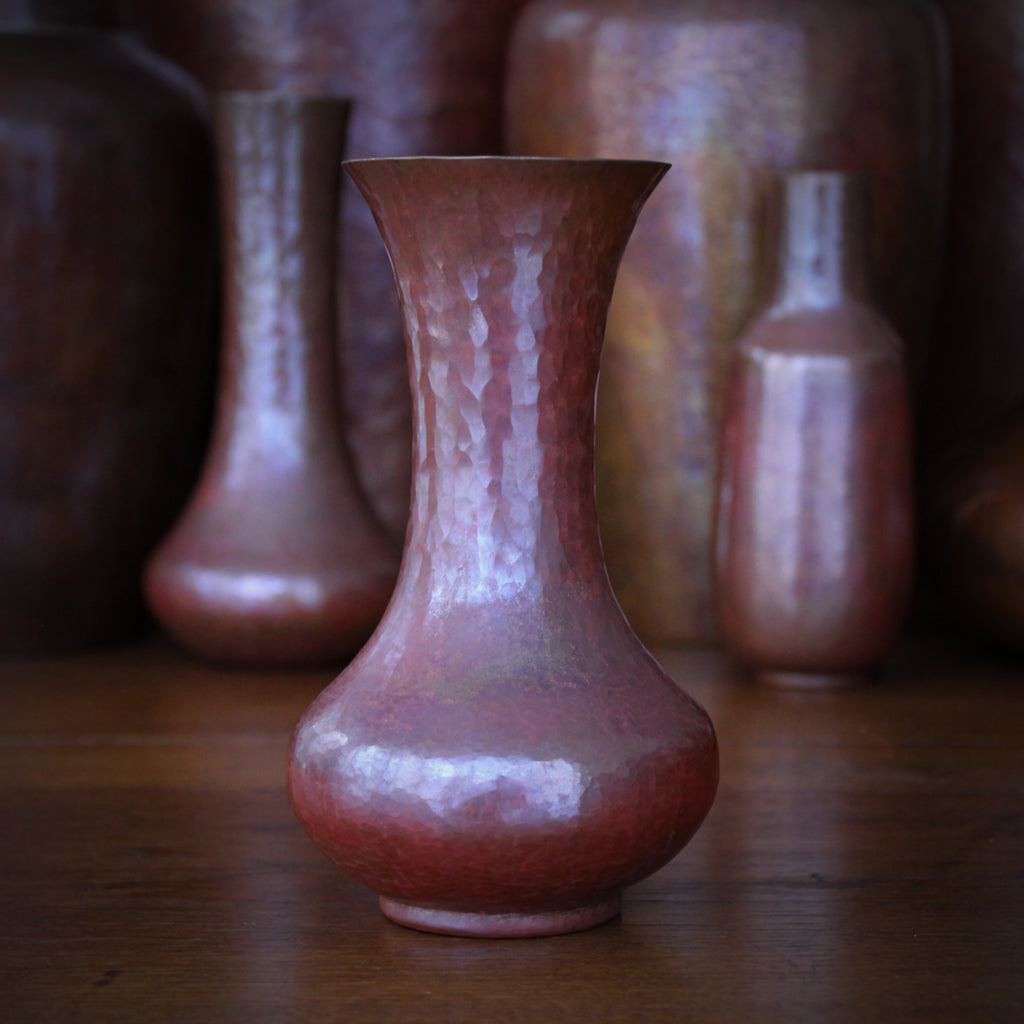JOURNAL — Vases RSS
Good Friday is the day on which most Christians commemorate the condemnation, torture and execution of Jesus. It is the most solemn day of the Christian calendar. For the faithful, however, the brutality and iniquity of the events are tempered by the truth to come: it is only after Jesus has died that He will rise from the dead. While Good Friday is a somber remembrance of Christ's loving sacrifice, Easter is the event which provides Christian salvation.
For Christians, may you have a Blessed and Holy Easter. A Happy Pesach to the Jewish faithful. And a warm Ramadan Mubarak to Muslims who are celebrating their holy month of prayer, fasting and good works.
Palm Sunday
It's Palm Sunday, one week before Easter. Palm Sunday commemorates the day when Jesus entered Jerusalem—to great fanfare—knowing that much was to happen over the coming week. On Holy Thursday, He celebrated the Passover with his apostles. On Friday He was condemned, abandoned, tortured, executed and quickly laid in the tomb before sunset. Then, on Sunday morning, He rose from the dead—appearing first to His follower, Mary Magdalene, who had come to the burial site to finish preparing His body for interment. At Christian celebrations today, congregants hold-aloft blessed palm leaves (or whatever greenery is available and affordable in their particular region). After services, the greens are taken home and mounted in places of prominence—for example, behind a cross or...
The Wearing of the Green!
May the road rise-up to greet you. May the wind always be at your back. May the sun shine warm upon your face and rains fall soft upon your fields. And, until we meet again, may God hold you in the palm of His hand. A hearty greeting on Saint Paddy's Day! And an Irish Blessing, too. For such a small country, Ireland has certainly dispersed its countrymen far-and-wide. Most of this, of course, reflects the Emerald Isle's tortured history—and the need for the much-oppressed Irish to seek better conditions and futures. Isn't that the reason most people move far from home? Two of my grandparents, barely out of their teens, left their humble dairy farms in Ireland to seek work...
Dreaming of Summer
Summer is still months away. In fact, Spring has not yet begun. But we can begin to dream of the idyllic Summer season: the warmth and the smells, the buzz of insects and the long, carefree afternoons. On reflection, I'm not quite sure when I last enjoyed a "long, carefree afternoon." Considering the news, the virus and the General National Tension, "carefree" has been a rare indulgence since . . . about . . . 2016. But the point isn't to have an idyllic day; the point is to dream of one. And that's where this piece of pottery comes-in. This "Empire Ware" English Art Deco ceramic jug was made in Stoke-on-Trent and is dated September 1933. The form is pleasant enough....
A Real Gem
Lush "pools" of color—emerald, jade, forest green and turquoise—dapple and slide-down the walls of this Brush-McCoy vase from the 1920's. The company called this glaze treatment "Onyx" and it was produced in various shades of reddish-browns and bluish-greens. The name, Onyx, is apt. Like the namesake gemstone, each piece is a unique and random (mostly uncontrolled) blend of colors. No two pieces are the same. The piece above really presents the rich and complex coloration and depth of the polished gemstone. The process involves multiple applied glazes which "activate" during the firing process, running, blending and creating new and unplanned color effects.
More English Deco
A bas relief bouquet of flowers and leaves rises from under a mottled melange of glazes—greens, blues and browns—on this English Art Deco flower vase from the 1930's. This is another good example of the "soft side" of the British Art Deco Movement. Whereas Art Deco often exhibited a streamlined, industrial and sharp-edged aesthetic of Futurism, the Brits seemed to develop the gentler, comforting side of the movement, as shown in the vase pictured here.
The vase, though indistinctly marked, exhibits the hallmarks of British Art Deco.
That Ol' Thirties Feeling...
British design from the Thirties—the English Art Deco movement—has a certain comforting "roundness" to it. Whether looking at graphics (like period Underground transit signage) or industrial design (like electrical household appliances) or ceramics works (like the decorative pitcher above), the British take on Art Deco mass production seems to have accentuated the "softer side" of the movement. Other countries, France and America come to mind, communicated a more angular, streamlined and "bold future progressiveness" in their Art Deco design—which is beautiful, futuristic and hopeful. English Art Deco—with its gentle plumpness, soothing colors, and the safety of no sharp corners—often puts me into a warm, relaxed and nostalgic mood. The "vase" above, fashioned in the form of a large pitcher, bears a softly-overinflated appearance—distended...
Spring Thaw
It's been a rather cold Winter, at least here in Pittsburgh. Lots of snow—which melts and refreezes into sheets of ice. But, despite the unpleasantness of the season, there is a cleanness to the Winter which I find refreshing (especially after the blinking energy of the Christmas Holiday Season). Nothing looks more innocent and pure than newly-fallen snow. Sound is muffled under the frosty, thick white blanket. The cold quells the smells which waft in the other seasons. And the chill drives many people indoors—making the streets and sidewalks just a little more peaceful.
The turquoise and white glaze on this West German Modernist piece—which appears to melt and drip down the sides of the vase—wears a certain wint'ry look.
Two Days Away
Saint Valentine's Day is a mere two days away. How about a lovely piece of art pottery for the lovely love of your life? This German piece, made by Otto Gerharz for Ruscha, captures the essence of Modernist beauty. A corseted, gourd-form shape—with two small handles—is a classic. Indeed, the form looks like it might have been excavated at an ancient archaeological site. The sensational glaze, however—crusty, dynamic, organic—is pure Modernism.
Following the Sun - X
For the last several days, we've been sharing a few of our favorite pieces of sunny, orange pottery. Nothing chases away the Winter Blues quite as well as a sideboard full or radiating orange ceramics! Let's end our parade of favorite orange ceramics with this handsome and commanding English Arts & Crafts piece by Pilkington Royal Lancastrian. This classic, high-shouldered vase was made in the 1920's. A curdled, deep orange glaze—over a brighter marigold—suggests molten lava running-down the sides of this vase. Its size, shape and coloration is certain to make it the center of attention—wherever you place it.
Following the Sun - IX
So far we've shared ceramics offerings from West Germany, England and the United States. Shown above is a Modernist piece from Hungary, made by the Toféj Kerámiauzem in Bodrogkerestzúr, a small village about 140 miles East of Budapest. It was made in the 1960's, in the decade after the Soviets invaded and decided to turn the previously small village into a center of industrial production (which included ceramics manufacture). It has a uniquely thick, mottled glaze and is finished with the workshop's signature yellow interior.
Following the Sun - VIII
The Arts & Crafts movement—indeed the entire Art Nouveau movement—employed various elements of nature in its designs: animals, botanical motifs, natural materials and glazes with earthy, organic sensibilities. Through the voluptuous curves of this English Arts & Crafts vase, shown above, peek the curling "fiddleheads" of fern fronds, seemingly ready to unfurl. The sensuous bas relief is dressed in a mottled glaze of orange and yellow. The piece was made by Pilkington Royal Lancastrian in the 1920's or 1930's.
Following the Sun - VII
Here's something a little different: a Dutch Modernist vase, finished in a matte burnt-orange glaze. But look closely. The glazing nearly throbs with life and texture. It's not "earthy" like terra-cotta, baked mud or a substance harvested from the environment. It's a masterful attempt to meld art and nature.
But there's more to this handsome vase than its coloration alone. The vessel's form is wonderful, too. It has a beautifully-conceived shape which appears distended—ever so slightly—as though it's been gently inflated with air, like a balloon. This tension of form gives the vase energy and life. Add a radiant glaze and you have a sensational piece which will look great either as part of a collection or standing alone.
Following the Sun - VI
This modestly-sized piece—about the size of a softball—provides the perfect counterpoint while sitting along the front row of a nice collection of orange ceramics. It's the right height and volume to provide variety of shapes and dimensions to your collection. And its deep orange glaze, mottled with a rich yellow underglaze, amps up the piece's presence.
Following the Sun - V
Matte glazes have always been my favorite, especially those which are organic, complex and highly-textured. This two-tone glaze—bright orange over vermillion—provides a random and dynamic finish to an otherwise streamlined (and unemotional) form. The color looks good enough to eat! It was made by Scheurich in West Germany in the 1960's or 1970's.
Following the Sun - IV
The organic, caramelized glaze—which drips languorously down the neck, shoulders and sides of this large English Arts & Crafts vase—only serves to heighten the molten sensibility of the underlying glaze. A mottled, rich orange seems to flow and curdle over the yellow glaze below. The effect is like the Sun, being coated in a dripping, cosmic sauce. And the impressive size of this vase ensures it will be a handsome "statement piece" wherever it is displayed.
Following the Sun - III
When I've travelled in German cities, I've always enjoyed taking the subway—the U-Bahn—to get around town, quickly, cheaply and enjoyably. In the German subway stations, two things never fail to catch my attention: 1. the fact that there are no turnstiles at the station entrance (fare payment is based on the honor system) and 2. the stations are often clad in fabulous Mid-Century Modern glazed tiles, not unlike the vases and other ceramics I've collected and sold over the decades. After Germany's defeat in World War II, the country was desperate to get its economy going and its people back to work. Labor was plentiful, under-utilized and cheap. Ceramics production—which is a highly labor intensive industry—took-off in Germany after the war. And the Germans...
Following the Sun - II
Sunny orange pottery was not only to be found on the other side of the Atlantic. The Thirties Art Deco urn, shown above, was made by Stangl in Flemington, New Jersey. The classic urn form, dressed with two drooping, foliate handles, combines Classicism with strong Deco style. The deep orange glazing adds additional weight to the piece—which will create a strong statement wherever it is displayed.
Following the Sun - I
Have you had enough of winter, yet? The Beijing Olympics have yet to begin and, already, I have seen enough snow. And let's not start talking about the cold!
Here's a little antidote: a collection of orange-glazed ceramics from LEO Design. For the next several days, we'll be sharing a few of our favorite pieces of sunny, orange pottery. Nothing chases away the Winter Blues quite as well as a sideboard full or radiating orange ceramics!
My favorite glazes boast organic, one-of-a-kind glazes. The nature of such glazes makes them hard (or impossible) to control.
Three Day Weekend - Part III
Let's end our three day French getaway with this handsome Art Nouveau vase, topped with three "ring-form" handles and dressed in a dynamic olive, turquoise and blue crystalline glaze. It was made around 1910, in the shadow of the Château de Pierrefonds in the Commune de Pierrefonds.
Crystalline glazes are difficult to manage. Since they cannot be controlled easily, they do not lend themselves to commercial production—where speed, consistency and predictability result in greater profitability. Also, small variations in kiln temperature or firing time can produce wildly different (and unpredictable) results—sometimes resulting in manufacturing loss.
Three Day Weekend - Part II
We're in the middle of a three day holiday in France—specifically in the Commune de Pierrefonds, about 50 miles Northeast of Paris. It was here, in the shadow of the Château de Pierrefonds, that the monumental urn, shown above, was crafted. Although the castle was first built in the 12th Century, the Pierrefonds ceramics workshop was not founded until 1903. While the company is not ancient, it was founded just in time to capitalize upon the Art Nouveau and (coming) Art Deco movements. The pottery maker got off to a rocky start. It was founded by the French Count d'Arros, Olivier de Sorra—a wealthy man who was also a painter. His idea was to open a small ceramics workshop within the Medieval castle,...
Three Day Weekend - Part I
Let's take a three-day holiday to Paris—and enjoy a little celebration of handsome French ceramics from the early Twentieth Century. On the way, we'll reminisce about a previous trip to The City of Lights and take a little detour into early Twenty-First Century French politics.
It's amazing how an acquisition—a special souvenir—can trigger so much memory of time, place and circumstances. The piece here brings-back memories of a wonderful and exciting trip at a special time of my life.
Shown above, a Pierrefonds French Art Deco urn with a sensational multi-colored, dripping glaze: olive, turquoise and cornflower blue. Furthermore, the glazes are crystalline—creating seemingly-random "bursts" of crystal formation, an uncontrollable process which makes every piece unique.
Clean Form
Here's another amphora, though this one has been pushed-beyond the classic form, known to antiquity, and into the streamlined energy of the American Art Deco movement. Long handles—reminiscent of a lop eared rabbit—droop lazily from the narrow mouth, coming to rest on the bulbous body below. The satiny matte white glaze adds a clean, modern and satisfying spin to the urn-form vase. It was made by Stangl in New Jersey—the sister company to the highly-collectable Fulper workshop, maker of top-line Arts & Crafts ceramics a the Turn-of-the-Century.
Classic Clean
Some things never get old. Or, perhaps a better way of phrasing this is, "Some things are so old, they are now timeless."
Amphorae are the narrow-necked ceramic vessels—with two vertical handles—which were used in ancient times to store and transport foodstuffs like wine or oil. The name "amphora" derives from the Mycenaean Greek, meaning "to be carried on both sides." The oldest existing amphorae are Phoenician, from the Eastern rim of the Mediterranean, dating from 3,500 years BC. The Greeks later used amphorae (or the amphora form) for highly decorated artistic ceramics—and the Etruscans and the Romans did likewise, later.
Clean Lines
With the Holidays behind us, it's nice to embrace the "clean start" of the New Year and the Winter Season which comes with it. This simple vase features a sophisticated (though subtle) flair at the rim and vertical ribbing which suggests the stems of the flowers which will fill it. A fresh, matte white glaze further enhances an immaculate aesthetic.
Winter White
Before I started my professional retail career in 1985, I had never heard the term "Winter White." Why would I have? I grew-up in Hawaii—where white was blithely worn 365 days year (whether the temperature was 75° or 78°). Now, beginning my professional work life in a department store in chilly Hartford, Connecticut, I was expected to get behind the Big Company Push of Winter White!
It wasn't hard to do. Actually, I rather liked the color. And I had only just absorbed the whole "White Pants-Labor Day-Memorial Day" rule. But the name, "Winter White," struck me as having been coined by a salesman—by someone scratching to find something new to sell.
December is Here!
December is here! The final lap of 2021! Experience the Winter's chill, the Holiday bustle, and the sublime Turquoise—the birthstone for the month of December.
Ancient civilizations in Egypt, China, Persia and North America have been mining, collecting and using turquoise for millennia. In the American Southwest, turquoise has been used in jewelry-making and other decorative arts for centuries—and continues to be popular to this day. The name derives from the French word for "Turks"—for it was through Turkey that the first turquoise came to Europe from Persian (Iranian) mines. The Persians used the stone for important decoration in architecture and other objets. They created celebrated ceramics and tilework glazed in a glorious "Persian Turquoise" hue, a color which represented "Heaven on Earth."
Black Friday
Though I have been working in retail since high school, Black Friday only became an annual milestone in my professional life during the autumn of 1985. I had recently graduated from college and was working in my first grown-up job, as an "Executive Trainee" at the May Company Department Stores. It was my first Christmas and I was posted in Hartford, Connecticut at (what was then) G. Fox, Westfarms Mall. I was the Department Manager in the Women's Department: dresses, sweaters and blouses. After weeks of pre-holiday anticipation, racks-and-racks of garments, mountains of cartons from Asia, and brutal incursions from the (perpetually unhappy) buyers in the main office, Thanksgiving was almost here! My final task on Wednesday night, Thanksgiving Eve, before leaving for the holiday: to...
Czech, Please
Even during the tumultuous years of the Czechoslovakian Nation, the art and craft of the Bohemian people was still appreciated by—and exported to—the rest of an eagerly awaiting world. This Art Deco matte white vase is one such little treasure. Czechoslovakia was established as an independent, democratic republic in 1918, two days after the collapse of the Austro-Hungarian Empire. Twenty years later, the Nazis invaded, claiming a healthy portion of its land for themselves—while Hungary and Poland took territory for themselves, too. Shortly thereafter (1939), Slovakia declared its independence from the still-young (and struggling) nation. After World War II, Czechoslovakia largely returned to its original size and shape (minus a portion which remained with the Ukraine), however, the whole country...
Welcome, November
It's the First of November: "All Hallows' Day" and the day when the Citrine struts to centerstage, front-and-center amongst its fellow birthstones.
Citrine is a pale yellow variety of quartz. It's lemony color is thanks to the iron content within the chemical structure of the gemstone. The Greeks first began to use the stone around 300 BC, believing that the sunny gemstone could help to alleviate depression. In Ancient times, citrines were still very rare, thus expensive and luxurious. But, as larger deposits were later discovered (notably in Brazil), the gemstone became more common and affordable for more admirers.
From Success to Success
William Moorcroft (1872-1945) was one of the great English potters of the early Twentieth Century. Fortuitously, he was born in Burslem, Staffordshire—"ground zero" of the British commercial ceramics industry. After studying in London and Paris, he returned to Burslem at the age of 24, where he was hired to work as a designer for the James MacIntyre & Company pottery factory. He set-about designing the company's "Aurelian Ware" line of decorative porcelain in 1897 and was promoted to chief designer for the entire art pottery division within a year. The Aurelian Ware line was inspired by the Aesthetic Movement with an exotic Orientalist spin. Porcelain vessels were decorated with Asian-inspired transfer designs, a bit of hand-painted decoration, and applied gold embellishment....
Egypt's Long Aesthetic Influence
Designers are constantly searching for inspiration. In truth, completely novel design is rare (and, in fact, often overrated). Throughout human history, most design (including good design) has been an adaptation of an earlier idea, object or aesthetic. Ancient Egyptian design has been an evergreen source of inspiration for Western artists and designers for at least 200 years. Napoleon Bonaparte, before he crowned himself Emperor of France (and Italy, and Germany), lead an army to Egypt (1798-1801). His intention was to foil the British (whom he could not defeat at sea) by blocking their Egyptian route to India (and its lucrative trade). Additionally, France sought to "claim" Egypt as a French colonial possession. In short order, Napoleon was defeated and sent...
Welcome, October!
Let us greet October—now the tenth, but once the eighth month of the year!
During the Early Roman Empire, October was the eighth month of the year (as demonstrated by the "Octo-" prefix, which indicates "eight." Back in those days (which started with Romulus, first King of Rome, circa 700 BC), there were 10 months, many of them named with prefixes indicating the month's numerical order: September (seven), October (eight), November (nine), and December (ten). The second King of Rome, Numa Pompilius, added two new months (January and February), thus lengthening the year by 60-ish days—in order to better approximate (though not perfectly) the Earth's annual orbit around the Sun. Even today, in France, October is sometimes abbreviated as "8bre."
Simple Clean
I cannot have too many nice, matte white vases. The simplicity of the coloration really focuses the eye upon the form—and the form, good or bad, has nowhere to hide. A collection of matte white vases always makes a strong, clean impact. And the utility of the vessels is another plus. I have a grouping of matte white vases on the wide window ledge behind my kitchen sink; I am often grabbing a vase to suit a large or small handful of roses clipped from our garden. Every time I add a new piece to the window ledge, a re-shuffle is required (which gives me a good excuse to wipe-down the quartz slab).
Autumn Is Here
Today—at 3:20 pm Eastern—we experience the Autumnal Equinox, that moment when the Earth's "tilt" toward the Sun is dead-even with the Equator. As a result, the night and day will be equally long today. As we move forward into the Autumn and Winter, the Northern Hemisphere of the Earth (where the U. S. is located) will tilt further and further from the Sun. The days in the North will be shorter and the temperatures will be colder (since that hemisphere is further from the heat of the Sun). Conversely, people in the Southern Hemisphere will enjoy longer days and shorter nights as their part of the World spends more time closer to the Sun.
Summer, Au Revoir
Relish this final day of Summer, for Autumn begins tomorrow afternoon. After tomorrow, the nights will be longer than the days. Temperatures will begin to drop. And the trees, plants and animals will prepare for their winter hibernations. We know that summer will return—eventually—but it does seem like a long, cold, dark winter. Cheer yourself through the winter gloom with this sunny "remembrance of Summers past." This hand-thrown Lachanal French vase is glazed in lemon yellow and decorated with a hand-painted, caramel-colored "grid iron." The form and surface of the ceramic body even suggest the shape and texture of a summer-fresh lemon. It is signed "Piece Unique," indicating that it was a "one-off" creation—not part of an established line of designs by the Lanchanal...
Moon Glow
A "Full Moon" describes that period of time—usually a day or two—when the Earth is directly between the Moon and the Sun (which illuminates the moon), thus making the moon appear perfectly round. Technically, any Full Moon only lasts a moment—which, this month, is at 7:54 pm today (Eastern). But that moment of "total fullness" is not distinguishable to most naked, laymans' eyes. Instead, the moon appears to be full all night long (or sometimes for a couple of nights). This month's Full Moon is also called the "Harvest Moon," which is always the Full Moon closest to the Autumnal Equinox (which, this year, is in two days). Traditionally, it was during this period that many farmers were hustling to...
Summer's Coastal Terraces
Summer is drawing to a close and—if you are planning on going to the seaside—you'd better do it soon! Luckily, I have a handful of special items which immediately take-me-back, at least in my mind, to pleasant summers in favorite holiday locales. And, in the months to come, as the snow piles up under my windows, a quick glance at one of these beauties will whisk me to the turquoise waters of a remote Greek island, the tiled Gaudi masterpieces of Barcelona, or the gently-arid Tuscan or French countrysides.
"That Ol' Sturgeon Moon..."
This morning, at 8:02 am (Eastern), the August full moon reached its peak size and illumination. Full moons during August are traditionally called a "Sturgeon Moon" because—during this mid-summer month—fishermen on the Great Lakes found the sturgeon easiest to catch. Sturgeon are a remarkable creature, and, sadly, increasingly rare today due to overfishing since the Nineteenth Century. Fossil records of sturgeons can be found from 136 million years ago (showing the fish largely unchanged through today) and the fish can live to be 150 years old! Females reach sexual maturity at 20 and reproduce every four years. They can grow to six feet in length and weigh over 200 pounds. Because the creatures grow and reproduce so slowly, their populations have great difficulty surviving overfishing. Their...
The Waning Days of Summer - IV
If the lazy days of summer carry your imagination to the French or Italian countryside, well, let's go! The handcrafted simplicity of a country village—the fences, signs, streets, buildings—can be a delicious respite from the high-tech, go-go world back home. And that celebration of handcraft manifests itself in the useful objects of everyday life. In a modern world which demands a constant technical scramble—and planned obsolescence is no longer challenged—isn't it nice to handle and use something that will never change? An object which will work exactly as designed, and work just as well, a hundred years from now? When I look at the vase above, I cannot help but think of the French countryside. The deep mustard, eggplant and moss...
The Waning Days of Summer - I
If you're dreaming of turquoise waters—entering them, not just thinking about them—the time is now to take that dip. Before long, the waters will have chilled and beach days will be behind us. Of course, this handsome English Art Deco vase will bring you a remembrance of beaches past—all year long. Made by Pilkington Royal Lancastrian in the 1920's or 1930's, it is finished with a luxurious jade-specked turquoise glaze—reminiscent of Persian Turquoise. The bas relief diamond under-pattern adds energy and structure to the form.
Sunny Days
"Summer afternoon—summer afternoon; to me these have always been the two most beautiful words in the English language." -Henry James (1843-1916) What a beautiful summer we're having, at least here in my new home of Pittsburgh. Sunny, dry, and topping-out around 78º. Nights in the mid-Sixties are heavenly, indeed! When Henry James penned these insightful words, there was no air conditioning and "beachwear" was only worn at the beach (and it was still woolen). Yet, he captured the relaxed (and lazy) feeling just right—at least for those who could afford to relax on a summer afternoon. The vase above, glazed in a cheery, sunny yellow glaze, is sure to bring a spot of summer sunshine into your home—whatever the...
Something for the Smart Set - Part II
Yesterday we discussed the pioneering glaze developments of Clément Massier, céremiste extraordinaire and icon of the Art Nouveau movement. Along with talented teammates, Massier invented new glazing techniques which were inspired by Iberian, Islamic, Chinese and Ancient ceramics works from Egypt, Greece and Rome. His signature was metallic lustre glazes—iridescent finishes using copper, silver and gold. These pieces were first glazed and fired at the normal (high) temperature (twice). Next, a solution of copper- (or silver- or gold-) oxide (and other metallic chemicals) was applied and the piece endured a third (low temperature) firing in a low-oxygen kiln. After firing, the pieces might be inscribed with an "over pattern" or embellished with a cold-paint design. Such "organic" glazing techniques produced unpredictable, unrepeatable...
Something for the Smart Set - Part I
Clément Massier (1845-1917), born into a family of French potters, was destined to be a ceramicist. But it was he himself—while tapping the skills of a handful of brilliant colleagues—that redefined ceramics-making in the period before and after the Turn-of-the-Century. He is considered one of the pioneering artists who developed lustrous metallic glazes and his impact on the Art Nouveau movement is profound. His work is found in the collections of the world's most important museums, like the Musée d'Orsay and the Metropolitan Museum of Art. His legacy also includes contributions to iconic Art Nouveau spaces like Maxim's de Paris. Massier's family had been producing ceramics in Vallauris, in the South of France, since the early 1700's. Like most clay works, the...
Independence Day
Wishing you a Happy Fourth of July—and a wonderful summer of fun and relaxation!
Welcome, July.
July is here—with its summer weather, its beach vacations and (on the 23rd) its leonine sunsign. July also brings its birthstone, the ruby. Rubies are amongst the "cardinal" gemstones, the most precious, important, and expensive: diamonds, sapphires, emeralds and rubies.
This West German footed vase, made in the 1960's or 1970's, is not made of rubies. But its deep, regal red glaze is reminiscent of the July birthstone. It was made in the rather small ceramics workshop, Hoy Hey. The dark brown stoneware clay provides a rich juxtaposition to the sensuous, dripping red glaze.
Separation Blues - III
Here's the final piece—one of the trio of pieces I'm offering for sale from my private collection of this West German pattern. It was made by Fridegart Glatzle for Karlsruher Majolica in the 1970's. The form of the vessel is inspired by a classical shape, though it is energized with a Modernist "slightly-inflated" tension. But it's the glaze which I love best: an organic, dripping glaze, reminiscent of works from the earlier Jugendstil period. For several years, I have been collecting this line of works, mostly in Europe, occasionally in the States. But my grouping has grown large enough that I can "deaccession" the duplicate pieces, like the one shown here.
Separation Blues - II
Here's another piece made by Fridegart Glatzle for Karlsruher Majolica in the 1970's. Though the shape is one of a classic ceramics vessel, it features a Modernist energy with its artful "tension"—like one might see with a slightly-overinflated balloon. The glaze, however, "leans back" into an earlier period—with the dripping glazes of the Jugendstil period. This is one of a trio of similar pieces which I am offering from my Private Collection—a deaccessioning of duplicate pieces in my collection of this West German pattern.
Separation Blues - I
As an antiques dealer, I'm traveling all the time, on the hunt for new acquisitions for the shop. While on-the-prowl, I cannot help but unearth the occasional tempting object (or collection) which I decide to purchase myself (rather than buy for the shop). Truthfully, I need to rein-in such indulgences—keep it in moderation. But, over the years, I've collected a number of "extra-curricular enticements"—my "Private Collection"—which is not usually offered for sale. The piece above was made in the 1970's by ceramicist Fridegart Glatzle for Karlsruher Majoilika. She was one of the lead artists for the German ceramics workshop, starting in the 1950's, after World War Two. She designed many "lines" of ceramics for the company including the piece shown above (from the...
Summer's Begun
Very late last night—at 11:32 pm New York Time—the North Pole was at its closest annual tilt toward the Sun; yesterday, the Sun encircled the Earth along its most-northern track for the year (along the imaginary line called the Tropic of Cancer). Thus, in the Northern Hemisphere, yesterday was the longest day of the year—and Summer began at 11:32 pm. If you were at the North Pole, the sun would not have set at all. On the other hand, if you were in the Southern Hemisphere, it would have been the shortest day of the year for you—and the South Pole may have had no sunrise at all. Life on Earth is dependent upon the Sun. But we need a...
A Clash of Concepts
Art will sometimes present interesting contradictions. Sometimes the viewer catches the inconsistencies and sometimes the viewer just enjoys the piece for its aesthetic pleasance. This Art Deco rosebowl, made by Roseville in the 1930's, juxtaposes two opposing forces: hard structure and organic spontaneity. The ceramic structure of the bowl itself is a crisp and intentional form—precise, architectural, disciplined. One could almost imagine the bas relief shoulder design inspiring the utilitarian venting within the vast inner shaft of the Star Wars Death Star. On top of this "hard" form, however, is a random and impromptu and very soft glazing effect—mottled glazing (in a warm, gentle color) applied in an irregular (and seemingly unplanned) way. The juxtaposition of hard vs. soft, deliberate vs. random, gives the...
More Turquoise
Here's another English Art Deco vase made by Pilkington Royal Lancastrian in the 1920's or 1930's. It has an incised, scrolling design across the body and is glazed with a handsome turquoise glaze—freckled with jade green confetti. Click on the photo above to learn more about it.
Egyptian Revival
Ancient Egypt has long been a source of fascination for the West. Western artists, architects and designers have been appropriating Egyptian design motifs since the Renaissance—as Europeans looked to ancient civilizations for beauty, culture and enlightenment. When Napoleon conquered Egypt, he instructed teams of artists to thoroughly record the art, architecture and aesthetics of Egypt, both ancient and modern. These engraved plates were published in installments called Description de l'Égypte from 1809 to 1826 which were wildly popular and had a tremendous influence on early 19th Century taste and design—paintings, architecture, furniture, graphics, jewelry, ceramics, metalware, lighting and other decorative arts.
Classical Fresh
Classical Antiquity has provided so many timeless design ideas, many of which still look perfect nearly 2000 years later. This vase, for example, made in Roseville, Ohio during the Art Deco 1930's, was inspired by a Classical Greek urn. The two handles, certainly a part of the original Classical aesthetic, have been updated with slight Art Nouveau "whiplash" energy—making the vase as fresh and attractive as ever. Of course, the clean satin white glazing also contributes to a crisp, modern aesthetic. Click on the photo above to learn more about it. Though our Greenwich Village store is now permanently closed, LEO Design is still alive and well! Please visit our on-line store where we continue to sell Handsome Gifts (www.LEOdesignNYC.com). We also can be...
Chasing China
Traditionally, red glazes have always been the most "temperamental" for potters to control. Small changes in the glaze mixture, kiln temperature or firing time could alter the final coloration of a piece. For centuries, the Chinese had been creating beautiful "oxblood" ceramics, despite very primitive technology. Their kilns were essentially earthen mounds, fired with wood, with windows and vents which could be opened or closed to control the temperature. Despite these hard-to-control conditions, the Chinese had been been able to produce red glazes from the 1400's (and possibly the 900's). Early oxblood ceramic vessels were used for religious purposes and have sometimes been called "sacrificial ware." In the 1700's, when trade with Europe was well underway, there was...
Here Comes the Sun
Though Old Man Winter is well behind us, the Spring, thus far, has been unpredictable indeed. Days in the mid-70's are followed by nights in the 20's (and dustings of snow). My wardrobe—not to mention my spring bulbs—are confused by the inconsistency. But the Earth's axis continues its progressive tilt, bringing us closer to the Sun with every passing day.
This Art Deco vase, made by Stangl in the 1930's, reminds me of that fiery, life-giving ball in the sky. Though it cannot provide warmth, alas, it will provide a feeling of sunshine—just what we need right now.
Spring Suggestions - VIII
Let's end our procession of Spring Suggestions with this particularly sunny offering: an Art Deco vase glazed in a rich yellow glaze. It was made by Martin Stangl in Trenton, New Jersey in the 1930's. The two "lop eared" handles, atop the urn, seem an Art Deco botanical reference to some earlier, classical time. The glaze is particularly vibrant. If this vase can't bring with it a ray of Spring sunshine, can anything?
Welcome, Spring!
Is there any season more invigorating—more hopeful—than Spring? Early green shoots begin to emerge from their bulbs, long forgotten below. Trees acquire a haze of yellow or light green as buds begin to form along their twigs. And a frisson of delight passes through the body when one realizes "Perhaps I don't have to wear a jacket today..." Despite nighttime temperatures in the 20's, Spring is here—having arrived today, 20 March, at 5:37 am Eastern Time.
Trusting One's Taste
As I've become a more experienced collector, I feel more confident venturing-beyond my previously trod territory. When I find something that I like, yet cannot identify—or I suspect it might even be recently-made—I will give the piece an extra turn or two in-the-hand, asking myself, "Why not?". If the quality is high (and handmade), the design is tasteful, and the piece is priced well, I may add it to the collection despite my uncertainty as to its age or maker. The piece shown here was discovered at an estate sale last week. I was hunting for furniture and came across this in the meantime. It wasn't a lot of money—and something told me that it was good (if not "important"). To learn more...
More Sun!
Here's a little more sun—in this case, sun flowers. I must admit, this vase is a bit of a mystery to me. In my thirty years in the antiques trade, I have only seen two of them (both of which I acquired). I do not know who made it, in what country, or when. The piece exhibits a European sensibility—which may help explain why I have seen it so rarely in America. On the other hand, I bought both of my pieces in the States, an inconclusive suggestion that it might have been made here. My educated guess is that it was made in Europe in the 1910's or 1920's—or in the United States in the 1920's or 1930's. I bought my first...
Here Comes the Sun! (Again)
I long for the sunrise, a new dawn of civility, propriety and a presidential behavior which sets the right example for our citizens and the rest of the world. I despise disruption, criminality and the financial exploitation of one's elected position. I fear that fanatical discontents have found their emperor—who's been described as "their Robert E. Lee"—who is all too willing to play the tyrant (and keep the cashflow a-flowin'). How has America gotten to this point? Or, more pointedly, how has this ideology simmered beneath society's surface without wider acknowledgment, analysis and counter-action? Alas, we are far, as a country, from "pulling together" in a snuggly, affectionate round of Kumbaya. Some of the outgoing president's supporters have threatened a...
Une Nouvelle Année
In a sometimes fractured world, the New Year is something we all share. Every year I marvel at how the new year sweeps around the globe—completing its circuit in one smooth 24 hour pass. We see fireworks in New Zealand, followed by celebrations in Australia, Eastern Russia, Japan, Hong Kong, South Africa, Eastern Europe, Western Europe, England & Ireland, Brazil, the United States, and, finally, American Samoa (followed by a handful of islands an hour later). The desire to mark the New Year seems universal (or, at least, global). And, for one 24 hour day, we all share the same focus. In France, one says Bonne Année! This French Art Nouveau vase once welcomed a new period in the decorative arts. Perhaps it can signify...
Here Comes the Sun!
2021 is here . . . can you feel things getting better? The days are getting longer. A Covid vaccine is ready for injection (if only it would be distributed). And new leadership is making plans to move our country in a new and better direction. It's as though the sun has emerged—after four years of darkness and bitter cold. This vase, made in England in the 1920's or 1930's, boasts a "molten" glaze of oranges and yellows—seemingly boiling on the vertically-ribbed walls of this gourd-form vase. It reminds me of the surface of the Sun, where swirls of molten magma radiate their energy to the Earth below. While the Sun holds the power to sustain life or kill it,...
No Reason for Envy
Jealousy supposedly leaves its victim "green with envy." A clever image and turn-of-phrase, yes, but this green vase has no reason to be envious. Two glazes—a spring green and an aqueous blue—are dappled over the sculpted form of this English Art Deco vase, made in the 1930's. Incised "fiddleheads" sway and curl along the shoulders of the piece, lending just a touch of Art Nouveau embellishment. To my eye, the wonderful and complex glazing captures that ephemeral moment when the seasons straddle both spring and summer. The tender yellow is gone, but the hearty green has not yet taken its place. Click on the photo above to learn more about this interesting and handsome English vase. Though our Greenwich Village...
It's Almost Here!
One more day! Hanukkah begins tomorrow night!
Blue, silver and white, the classic colors of Hanukkah. I have always loved this color combination. It's clean. It's wintery. And it's a sophisticated alternative to the classic red and green which is associated with Christmas. For me, it's become a "holiday palette cleanser," so to speak. So from where (and when) do the Hanukkah colors derive?
Summer's Remembrance
Evocative of the flaming ball of fire in the summer's sky, the swirling "molten" orange and yellow glazes on this English Art Deco vase seemingly throb with heat. Sculpted "fiddleheads" (or are they solar flares?) encircle the shoulders of the vase, adding additional movement to the piece. It was made by Pilkington Royal Lancastrian in the Thirties—though it does seem to reflect both the Arts & Crafts and the Art Deco aesthetics. Click on the photo above to learn more about it.
December Frost
Although winter is still three weeks away, one wouldn't know that by looking outside my door! I was greeted this morning with four inches of snow and a 28º chill. Neither the cold nor the snow stopped all day long. Already I'm asking myself, "How am I going to make it through the winter (once it comes)?" Today is the First of December—a month whose birthstone is the turquoise. Turquoise has been prized for thousands of years—first by the Egyptians, then the Chinese and the Persians, later the Aztecs, and eventually the Native Americans of the Southwest United States. The name derives from the French word for "Turks"—for it was through Turkey that the first turquoise came to Europe from...
Thanksgiving Wishes
Wishing you a bountiful harvest and hoping you have much to be thankful for.
Despite the challenges of "these times," I am grateful for numerous blessings—large and small—which grace my life: my home, my family, friends and customers.
Thank you for being a part of my many blessings!
Now We Return to Previously-Scheduled Programming...
After months of campaigning (65 months, by my count), what could be more refreshing—more palette cleansing—than a nice fresh, green piece of Arts & Crafts pottery? And here it is. Made by Weller in the early Twentieth Century, it boasts that classic American Arts & Crafts matte green glaze—natural, calming, restorative. What could be more delightful right now? Think of it as a nice crisp salad after two weeks of buffets and dessert tables. Click on the photo above to learn more about it.
Hand-Raised Copper - part VIII
Let's end our parade of copper vessels with this modest option, a hand-hammered "club-form" vase. It would look great holding a small number of stems—as it looks good standing empty and alone. Click on the photo above to learn more about it.
Though our Greenwich Village store is now permanently closed, LEO Design is still alive and well! Please visit our on-line store where we continue to sell Handsome Gifts (www.LEOdesignNYC.com).
We also can be found in Pittsburgh's historic "Strip District" at Mahla & Co. Antiques (www.mahlaantiques.com) or in Canonsburg, Pennsylvania at The Antique Center of Strabane (www.antiquecenterofstrabane.com).
Or call to arrange to visit our Pittsburgh showroom (by private appointment only). 917-446-4248
Hand-Raised Copper - part VII
Western artists, designers and craftsmen have often tapped classic Asian design for its artistic inspiration. During the late Nineteenth Century (and at many other times in history), Westerners were enchanted by "The Exotic East." Sometimes these penchants became embarrassing and demeaning fetishes. But, at other times, such an appropriation was simply the recognition that classic Asian designers did beautiful work—and imitation is recognized as the sincerest form of flattery. The piece above takes the form of a classic "ginger jar"—the Chinese covered vessel originally intended to hold spices, oils and other valuable foodstuffs. Many centuries ago, Western merchants began to ship them back home to a hungry European population which used such ginger jars in their collecting and home decorating....
Hand-Raised Copper - part VI
The "freeform" hand-hammering of these vessels, each from a single ingot of copper, requires a great deal of patience, precision and skill. The tools are minimal: an anvil, tongs and a small assortment of hammers (depending on the type of hammering needed at any particular point). Not only must the artisan get the shape right (and evenly balanced) but he must keep the walls of uniform thickness. He also wants to leave a pleasant hammering effect. On this piece, shown above, the craftsman has the additional task of applying a surface treatment—in this case evenly-spaced ribbing. Learn more about this vase by clicking on the photo above. More hand-hammered copper items in the days to come. Though our Greenwich...
Hand-Raised Copper - part V
Compressed, sensual, pendulous. These are three words which help to describe this hand-raised copper vase, shown above. It is a squat gourd-form vessel with a narrow-ish neck—which will gather your flower stems to a controlled point. Click on the photo above to learn more about it. Shown below is a highly sculptural offering. It's perfect for a low setting—upon a table or sideboard—where one may see it from above and appreciate the closed top of the vase (rather than look down into an open vessel). Click upon either photo to learn more about either vase. More hand-hammered copper items in the days to come. Though our Greenwich Village store is now permanently closed, LEO Design is still alive and...
Hand-Raised Copper - part IV
Master architect, Frank Lloyd Wright, was known for his handsome, unusual and avant-garde buildings. And his work was not confined to the design of building structures alone. Indeed, he often designed his projects right down to the interior furnishings—rugs, furniture, decorative objets. One of his favorite vase forms was called a "weed holder"—and is the inspiration for the piece shown above. It stands just under 12 inches tall and will hold a large handful of dried grasses, rushes or twigs. It would also look great with long-stemmed fresh flowers, like gladiolas, irises or lilies. Click on the photo above to learn more about it. More hand-hammered copper items in the days to come. Though our Greenwich Village store...
Hand-Raised Copper - part II
This vase is very heavy—with thick, hand-raised walls. It must have taken great muscle to hold it at the end of a tongs and to hammer it into shape. The form is a "soft square" which can be best understood when looking down upon the piece. At over 12 inches tall, it can hold relatively long flowering branches or a sizable arrangement of flowers. One could also make a nice lamp out of it. Click on the photo above to learn more about it. Shown below, a more refined—and not as heavy—vase, also nearly a foot tall. It, too, would make nice lamp or home for a handsome flower arrangement. In either case, I would pour a bag of heavy...
Hand-Raised Copper - part I
When we were closing our Greenwich Village shop—three years ago this month—it was a very hectic time. The entire store was marked-down and business was more than brisk (in fact, it was our biggest single month in company history!). We were also simultaneously packing-up unsold merchandise plus 23 years worth of accumulated fixturing, backstock, and those pesky "pending repair projects." During that crazy month, we packed four 16 foot Penske "box trucks" and drove them eight hours west through the mountains of Pennsylvania. Though we attempted a high level of organization, alas, some things were packed-up too quickly and added to the pile of boxes on the truck. One of the unexpected benefits of that tumult is the delayed "un-earthing" of...


